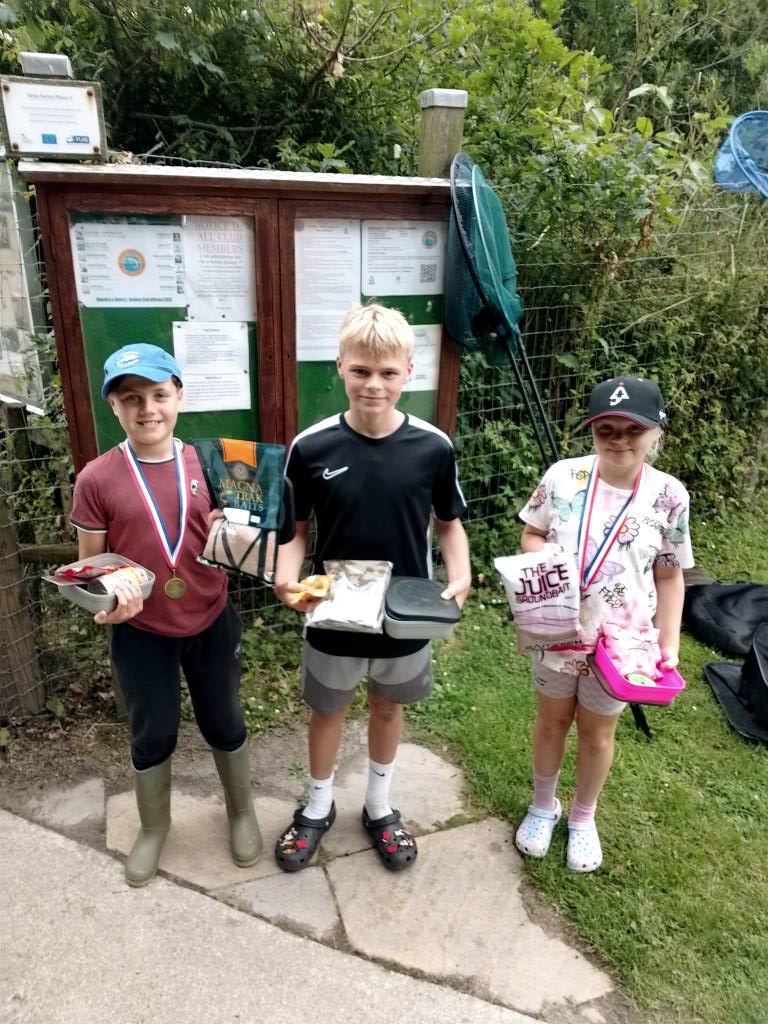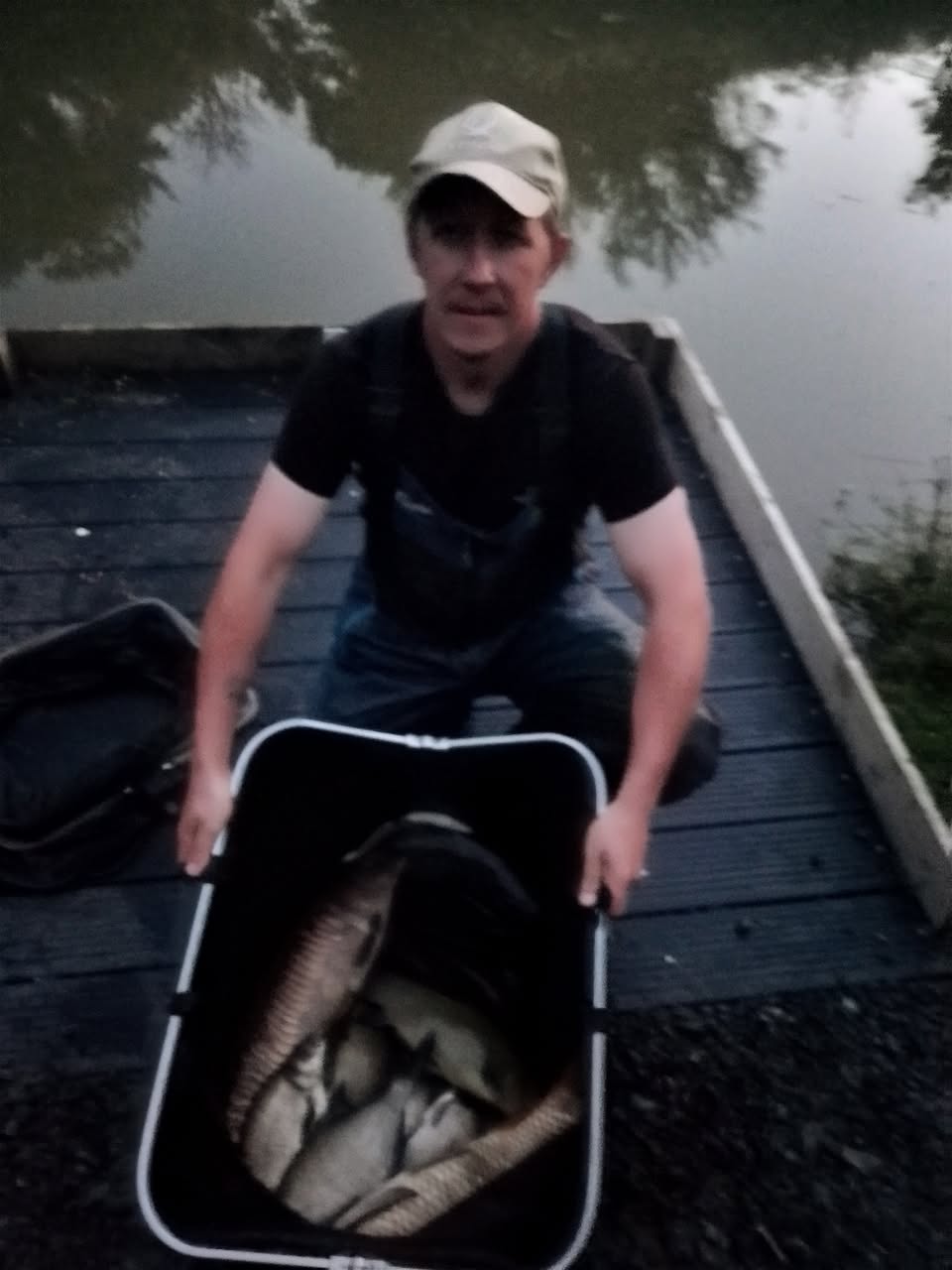July’s Rover results













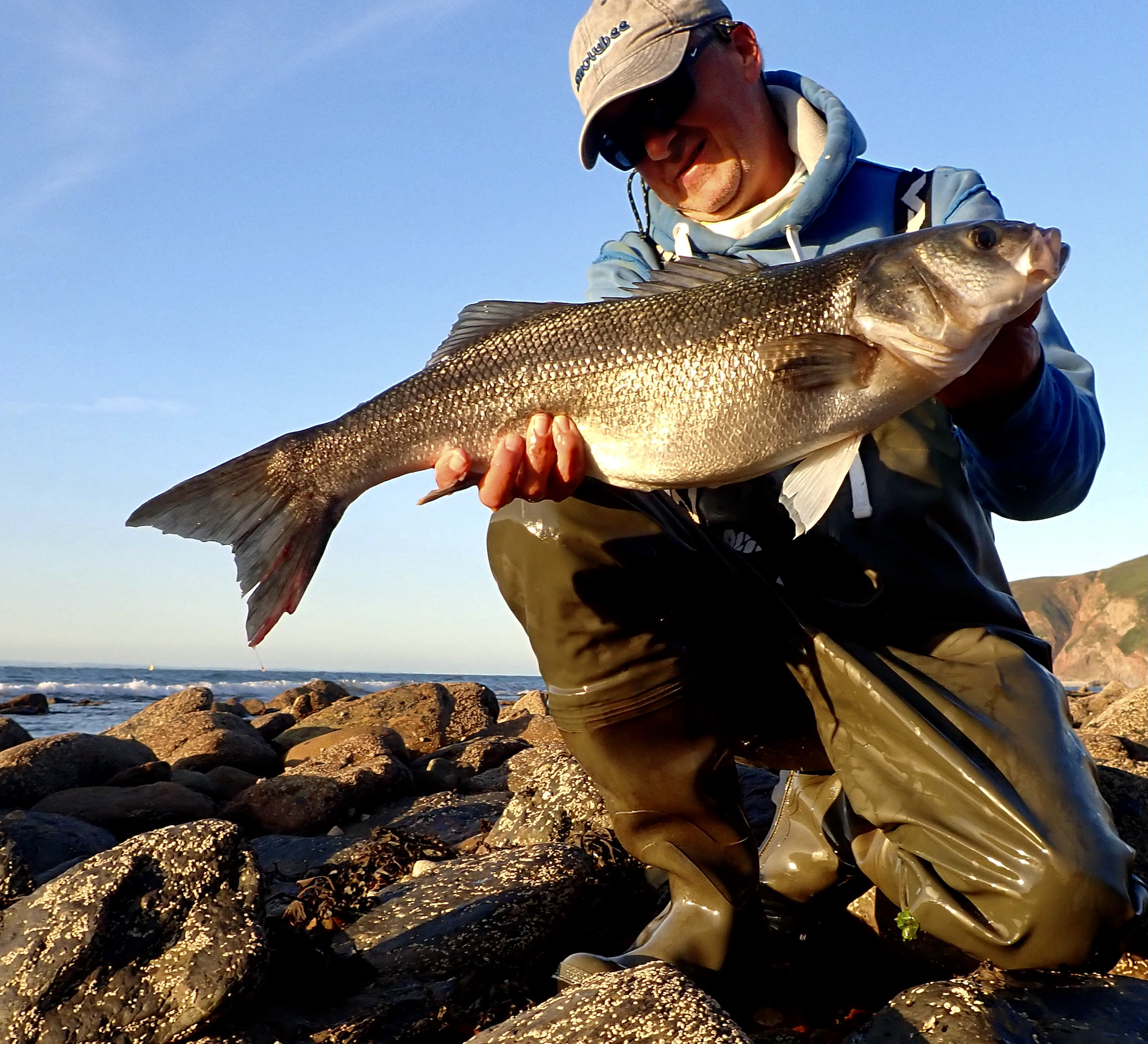
Combe Martin SAC’s Lure Fishing league is shaping up to be a competitive one this year with good numbers of bass being caught from boat and shore. Club member Wayne Thomas enjoyed a good session landing eight bass including fish of 72cm and 65cm to put him into third place in the competition. All fish fell to a Savage Gear- White paddle tail lure. Such hectic sessions are few and far between with several blanks preceding this trip.
1st Mark Brewer – Five bass – 344.5 cm
2nd – Seth Tuson – Five bass – 330.5 cm
3rd – Wayne Thomas – Five bass – 295 cm
4th – Reece Woolgar – Four bass – 263cm
5th – Ross Stanway – Three bass – 176 cm
6th – Robert Hurst – Two bass – 121.5cm
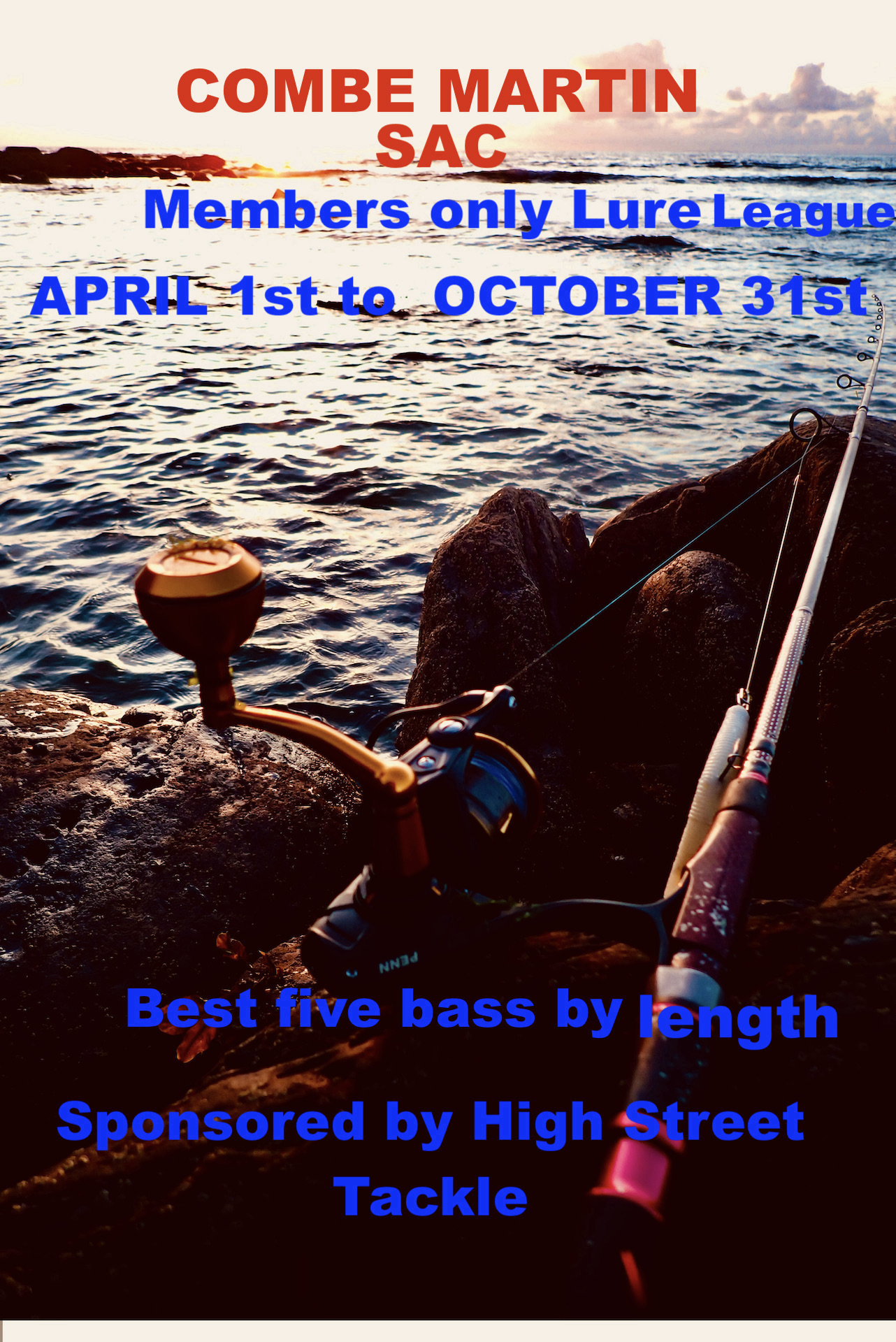
The club are hosting a members only lure fishing competition next weekend so prospects are excellent for this event.
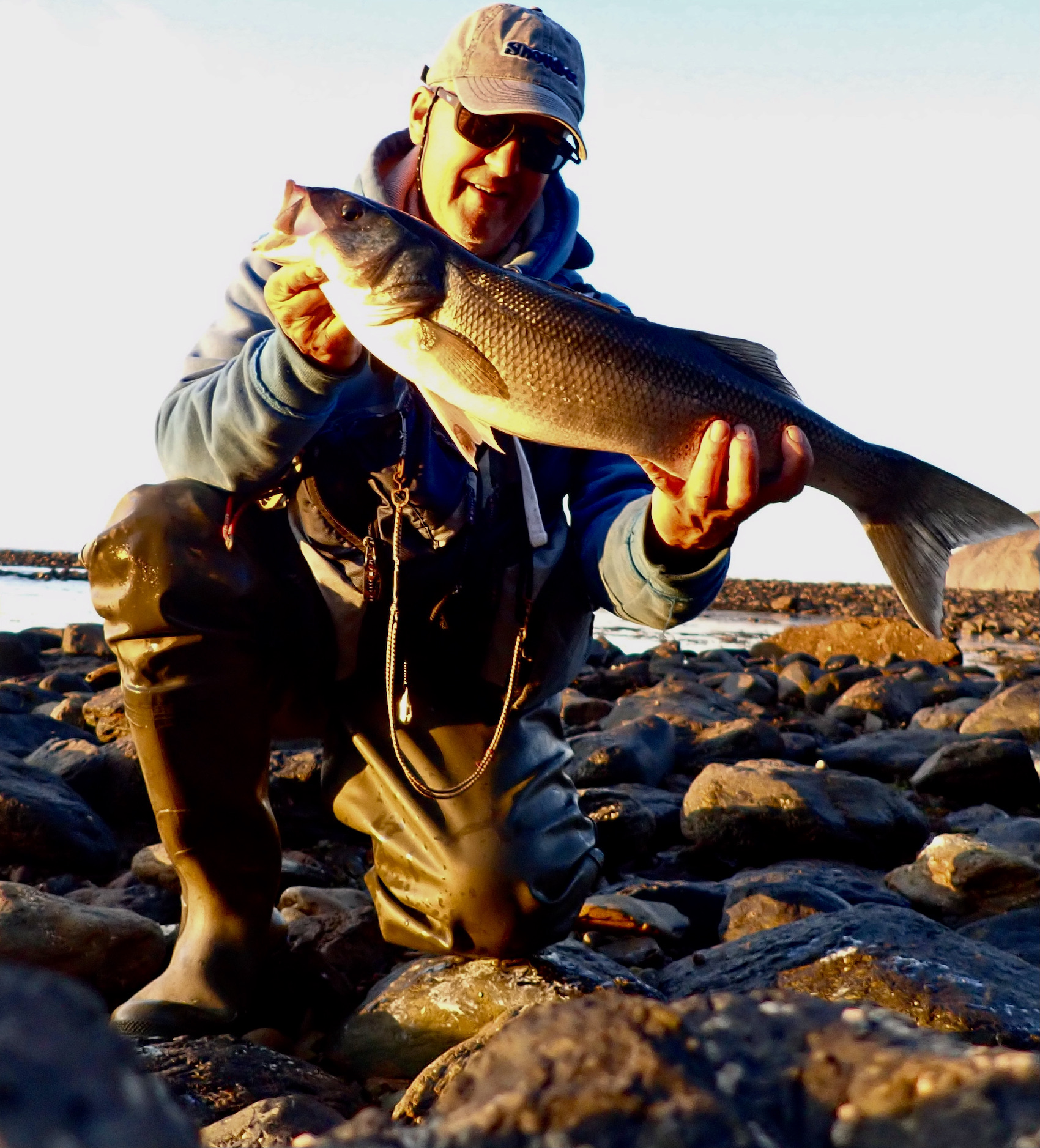

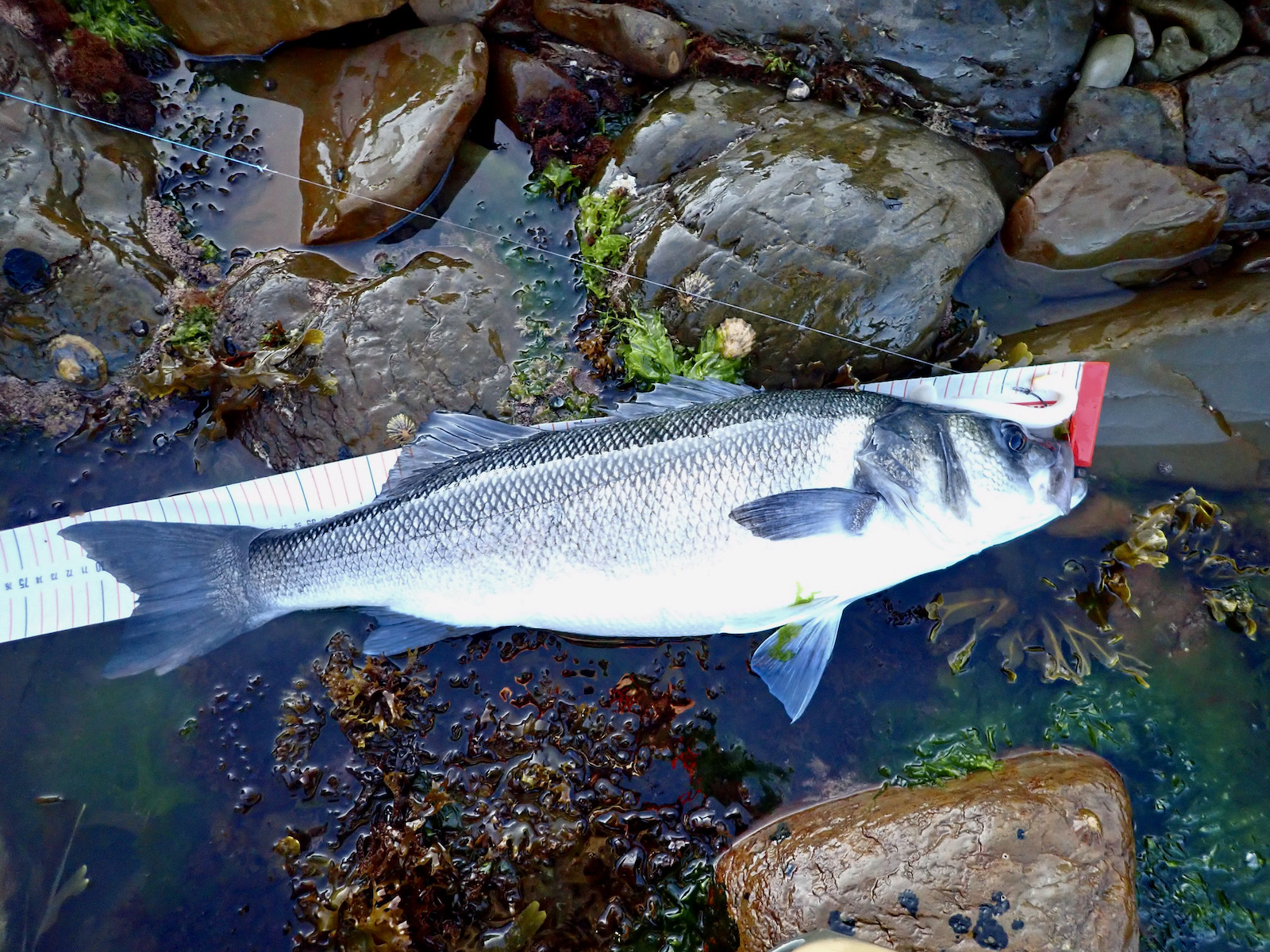
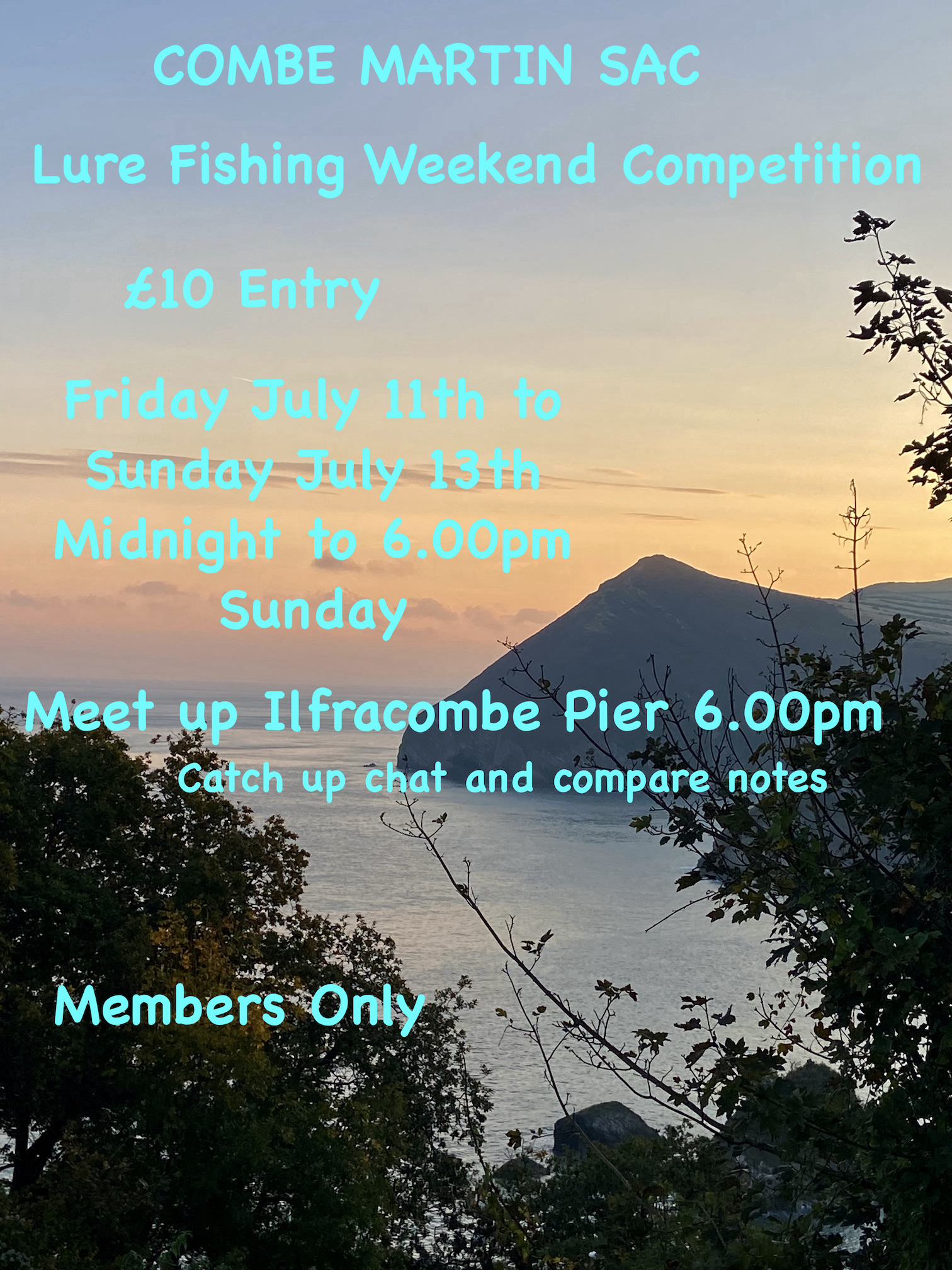
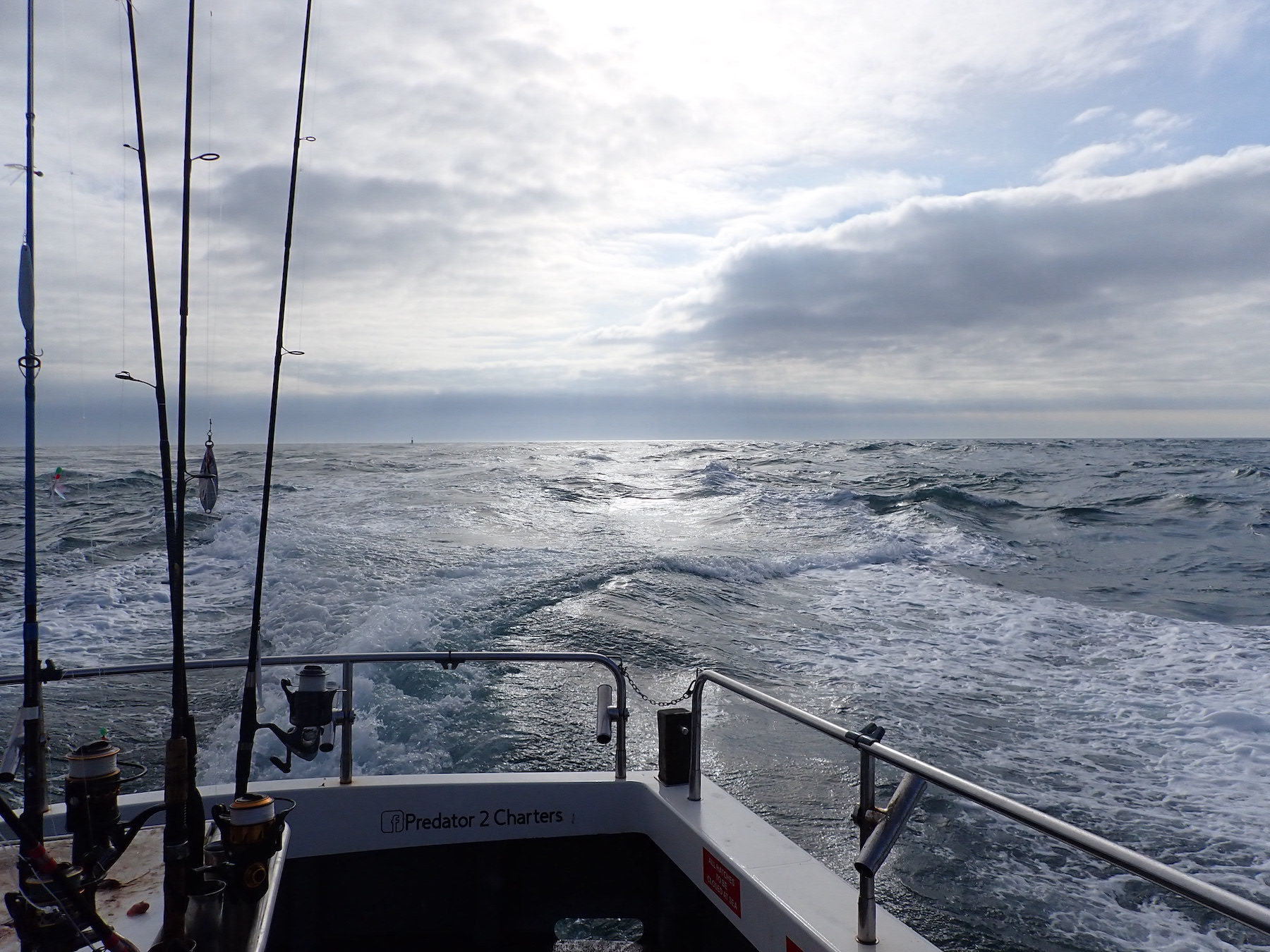
I joined fellow Combe Martin SAC members on a trip on Predator 2 out of Ilfracombe. With a promising weather forecast and a good tide Lundy Island was our destination with many options on the days agenda including lure fishing, drifting the sandbanks and anchoring for tope.
It was a civilised 9:30am sailing from Ilfracombe harbour to coincide with the morning tide and it was a cheerful and optimistic group of anglers who watched Ilfracombe slip into the distance as we sailed down the coast passing the spectacular cliffs West of the port. The sea was lively off Morte Point as the ebbing tide pushed over the rocky strata.
Skipper Dan suggested stopping off to drift lures over a wreck a few miles off Baggy Point. We dropped a variety of lures to seek fish over the rusting hulk 100ft or so beneath. Rods were soon hooped over as powerful pollock with olive and silvery flanks seized our offerings in the clear water.
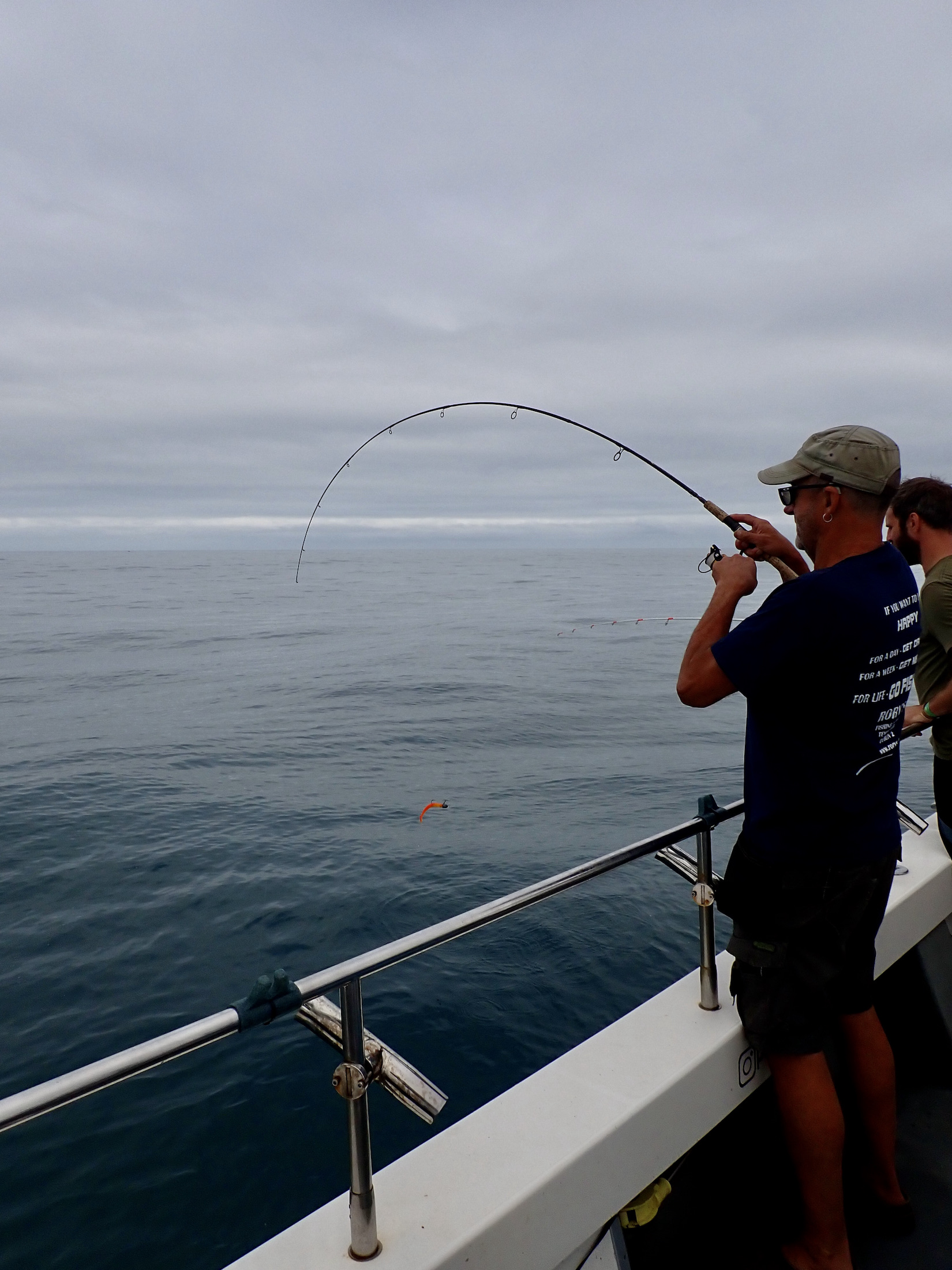
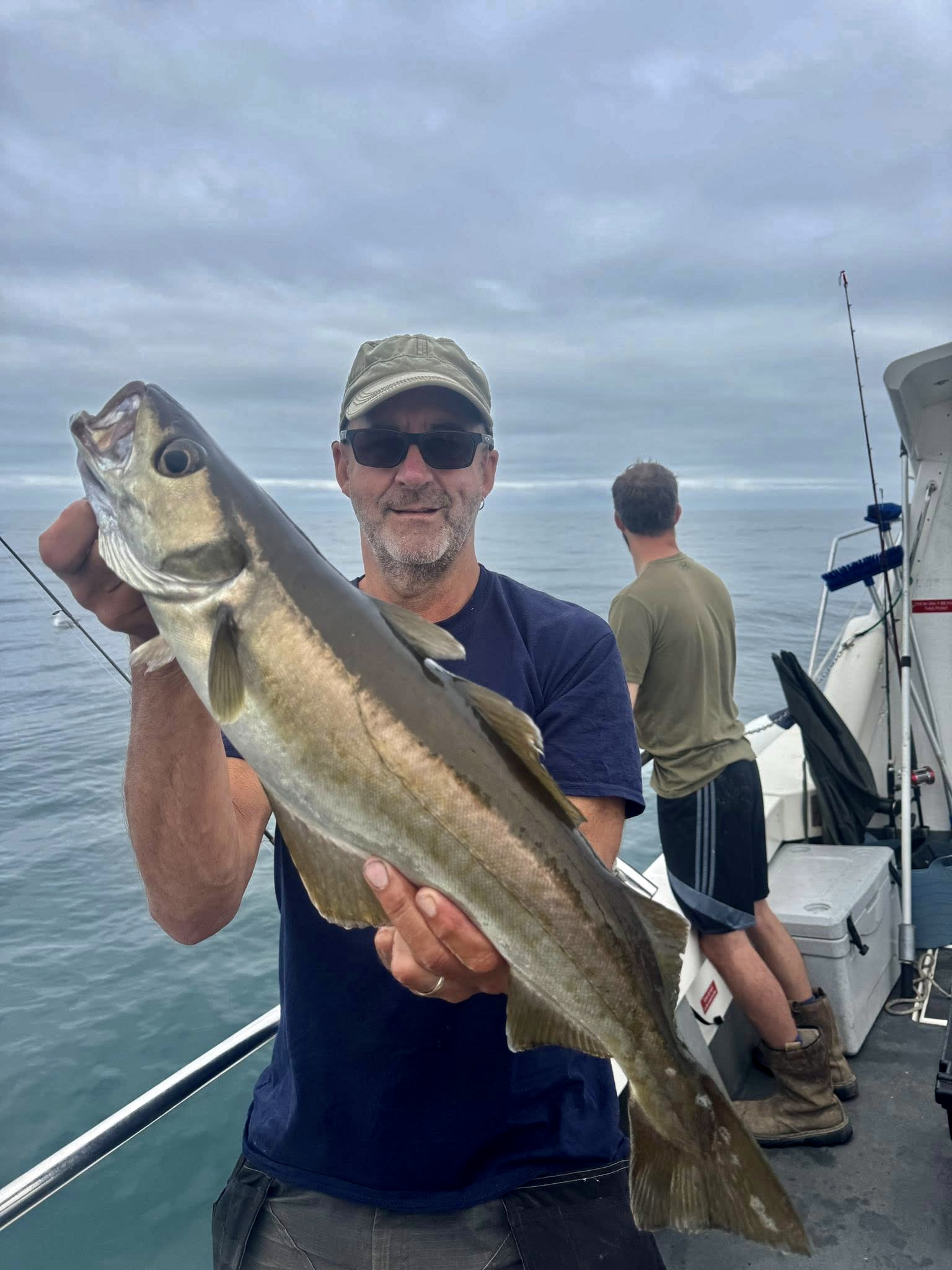
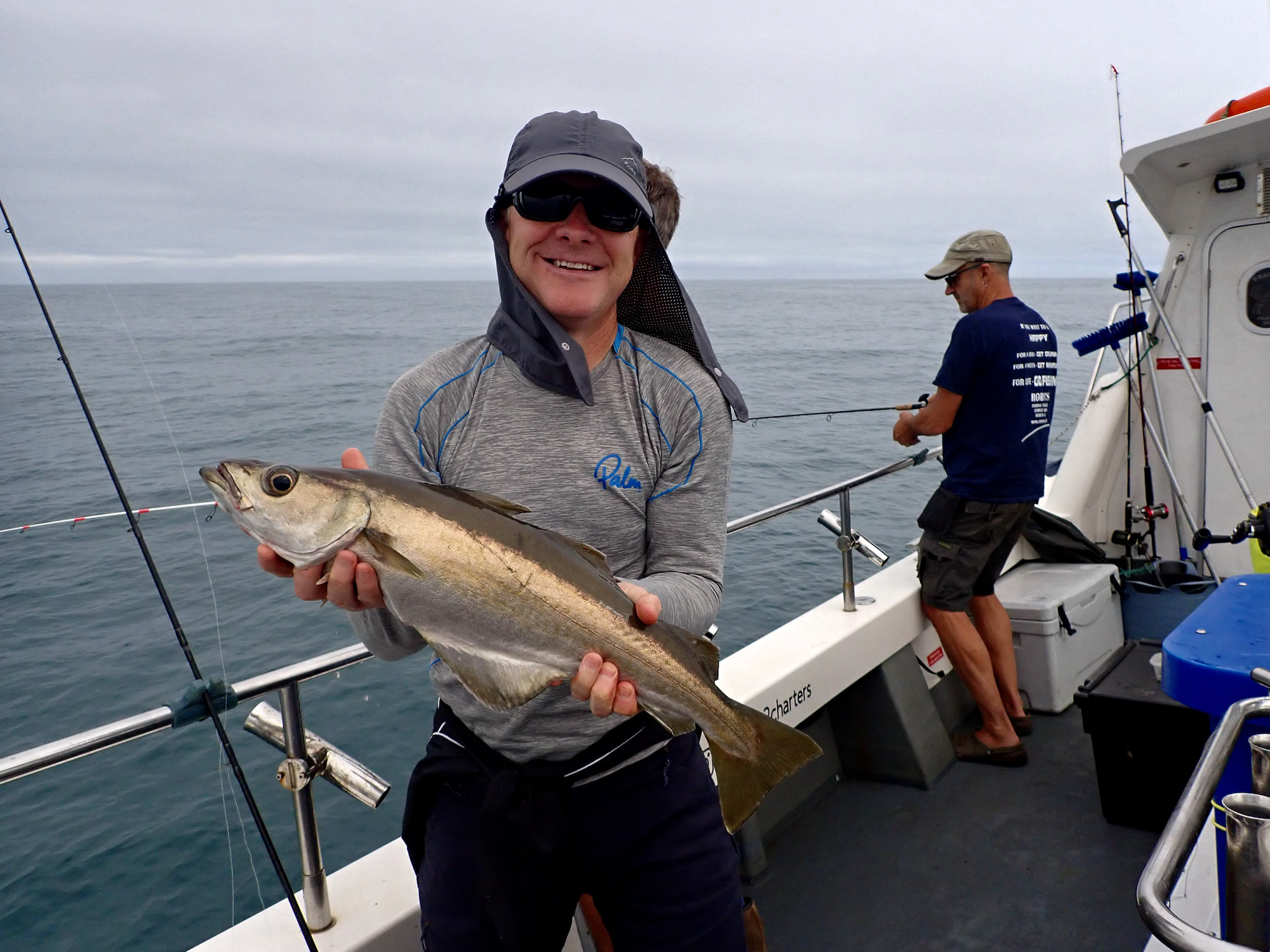
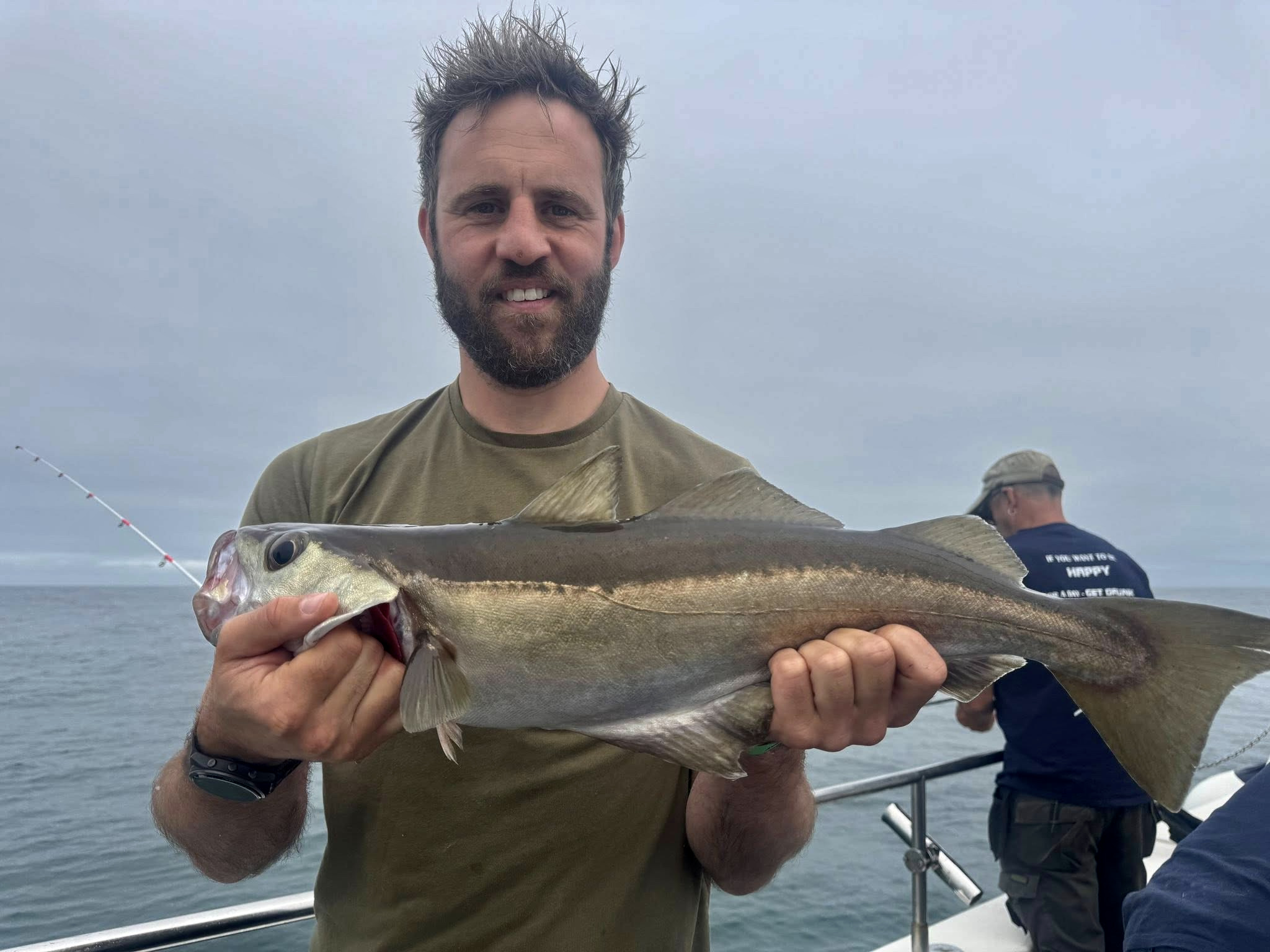
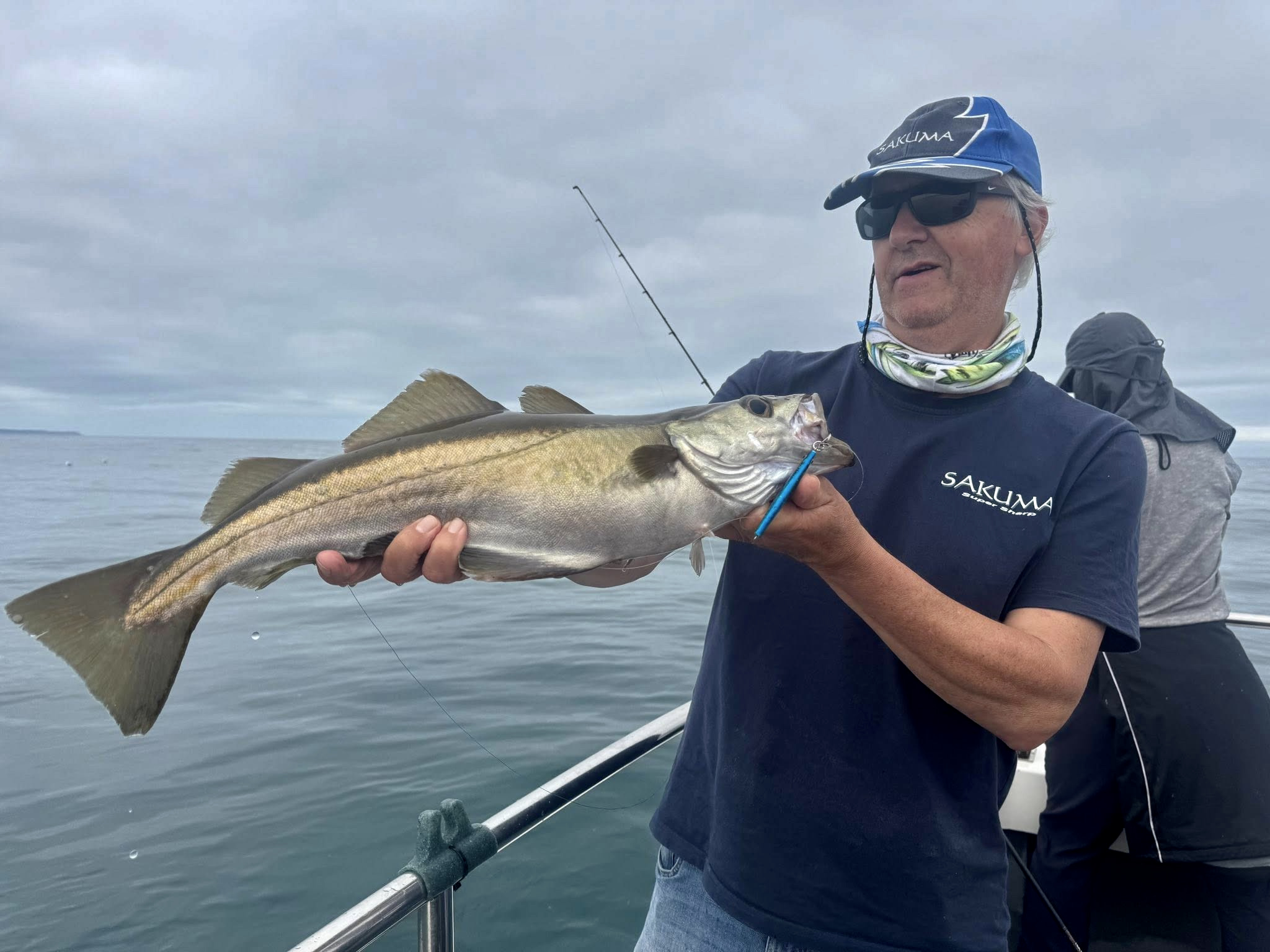
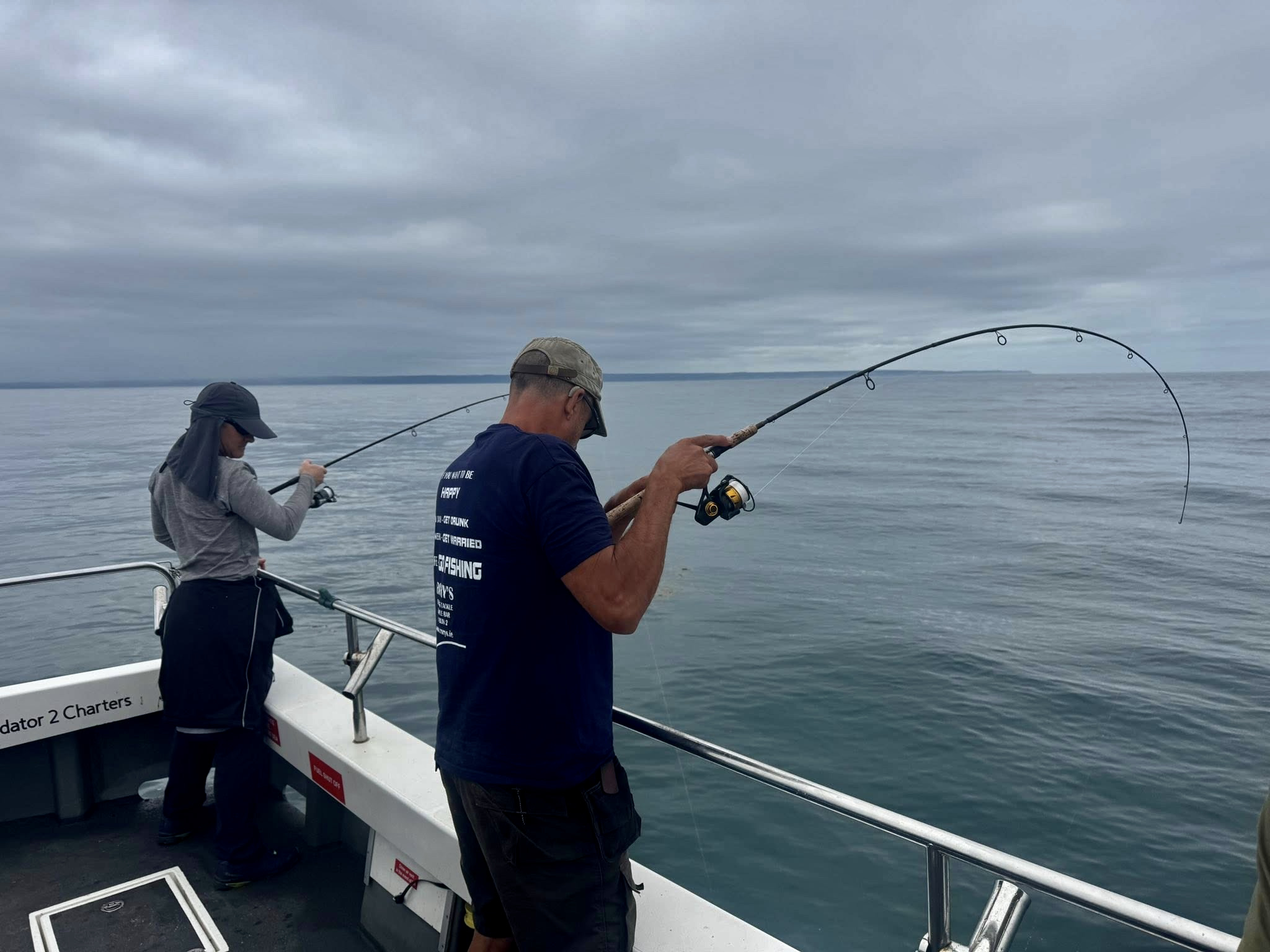
After several drifts the sport slowed as it often does and Lundy Island beckoned far out at the mouth of the Bristol Channel.
Despite a forecast of high temperatures and sunshine the grey cloud still shrouded the sky and Lundy was hidden by a misty haze. We steamed across smooth waters and watched as Lundy slowly appeared as warm sunshine burned away the cloud.
A trip out to Lundy is always special the granite outcrop towering above the sea always seems to have a hint of Jurassic park or Sir Arthur Conan Doyle’s ‘Lost World’. Those fabulous tales that have enthralled the young at heart.
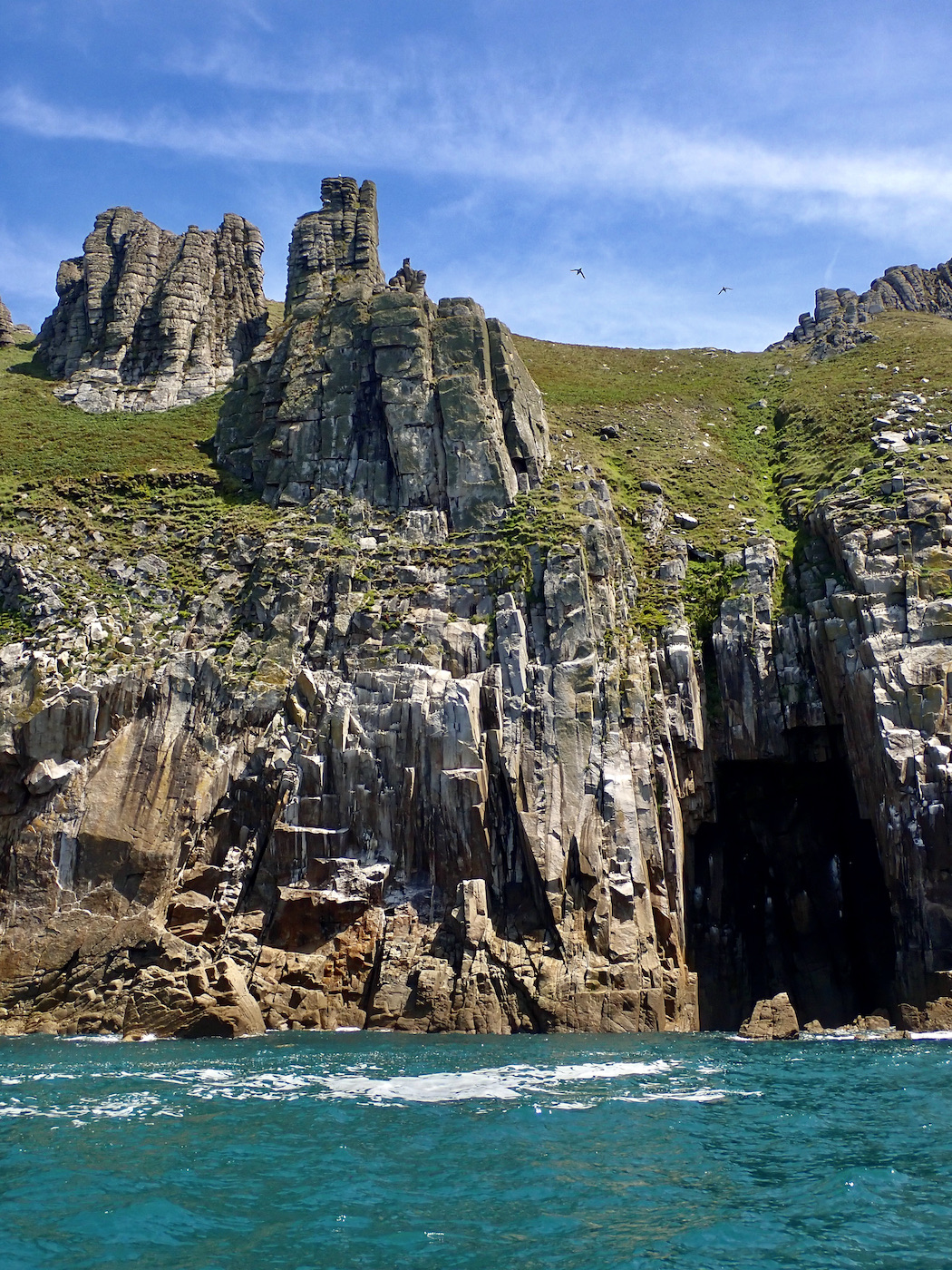
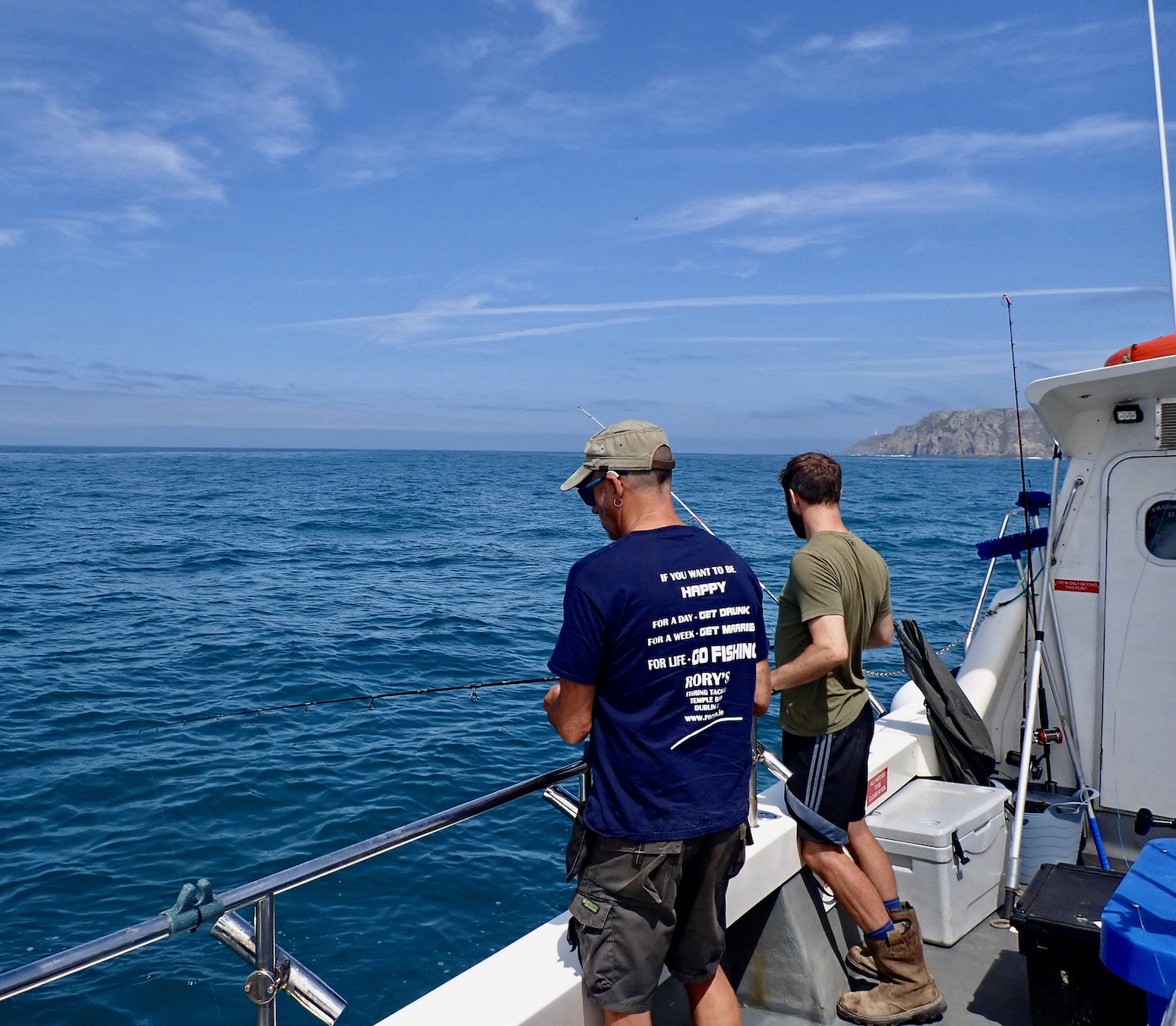
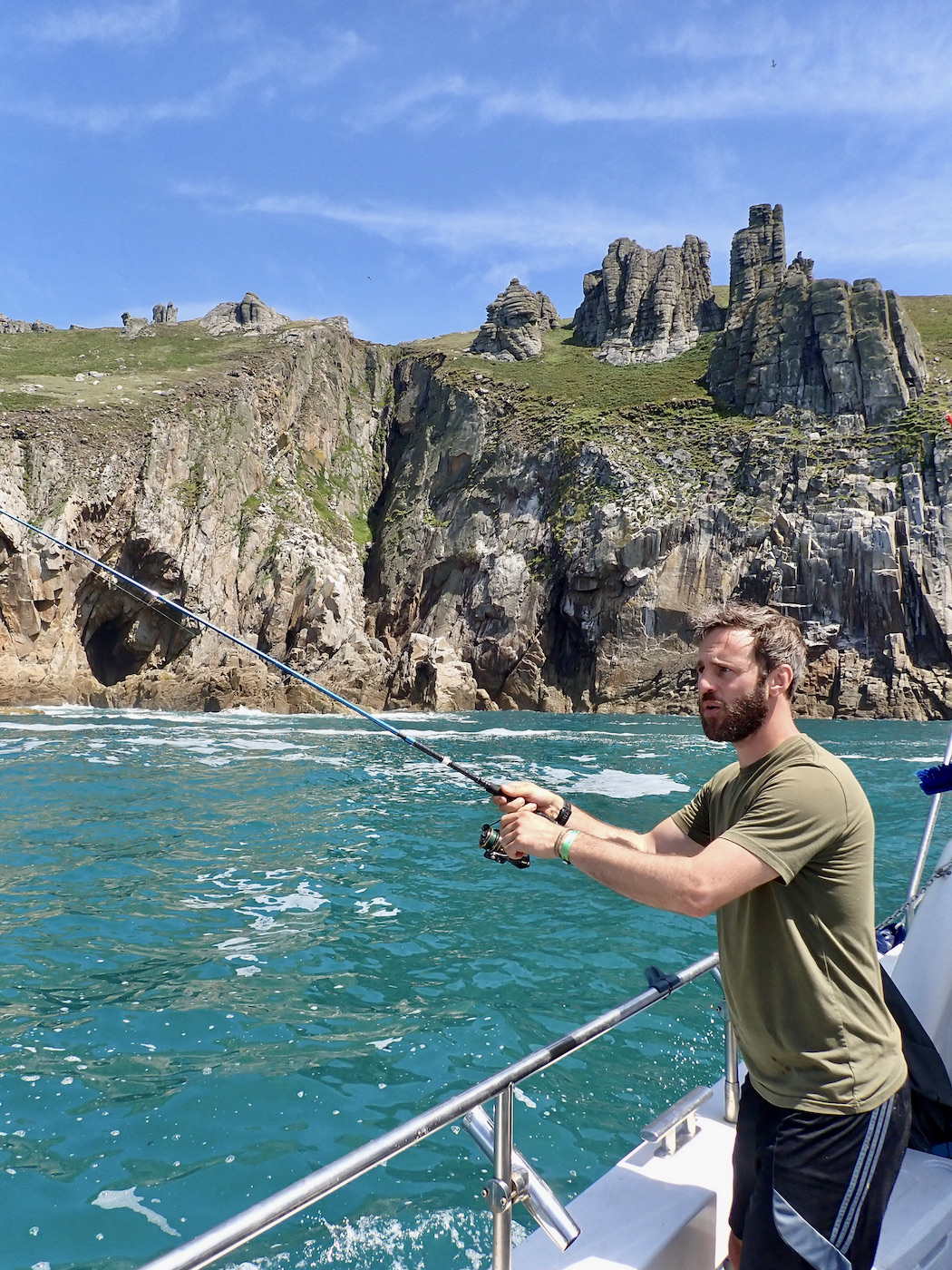
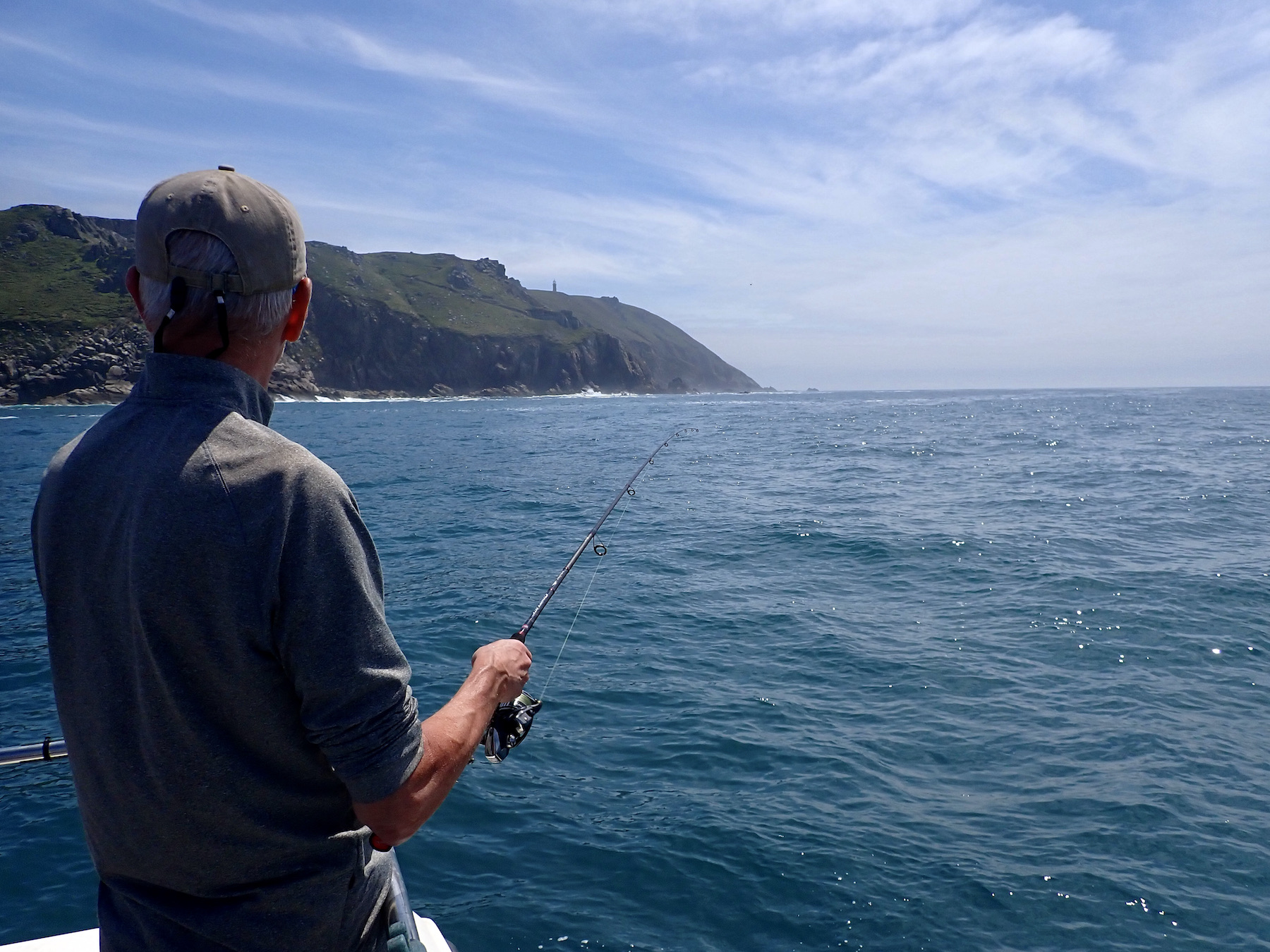
There were no dinosaurs as we drifted the North of the Island though several puffins bobbed cheerfully upon the water. A large swell caressed the base of towering granite cliffs. The white water, aqua marine and blue sky of a perfect hot summers days lifted the spirits. A few wrasse and the occasional pollock succumbed to our lures but fishing was slow. Dan tried several marks before moving to the tidal race off the North end. Again fish proved hard to find and all soon agreed it was time to move to the sand banks and drop the anchor for a go at the tope.
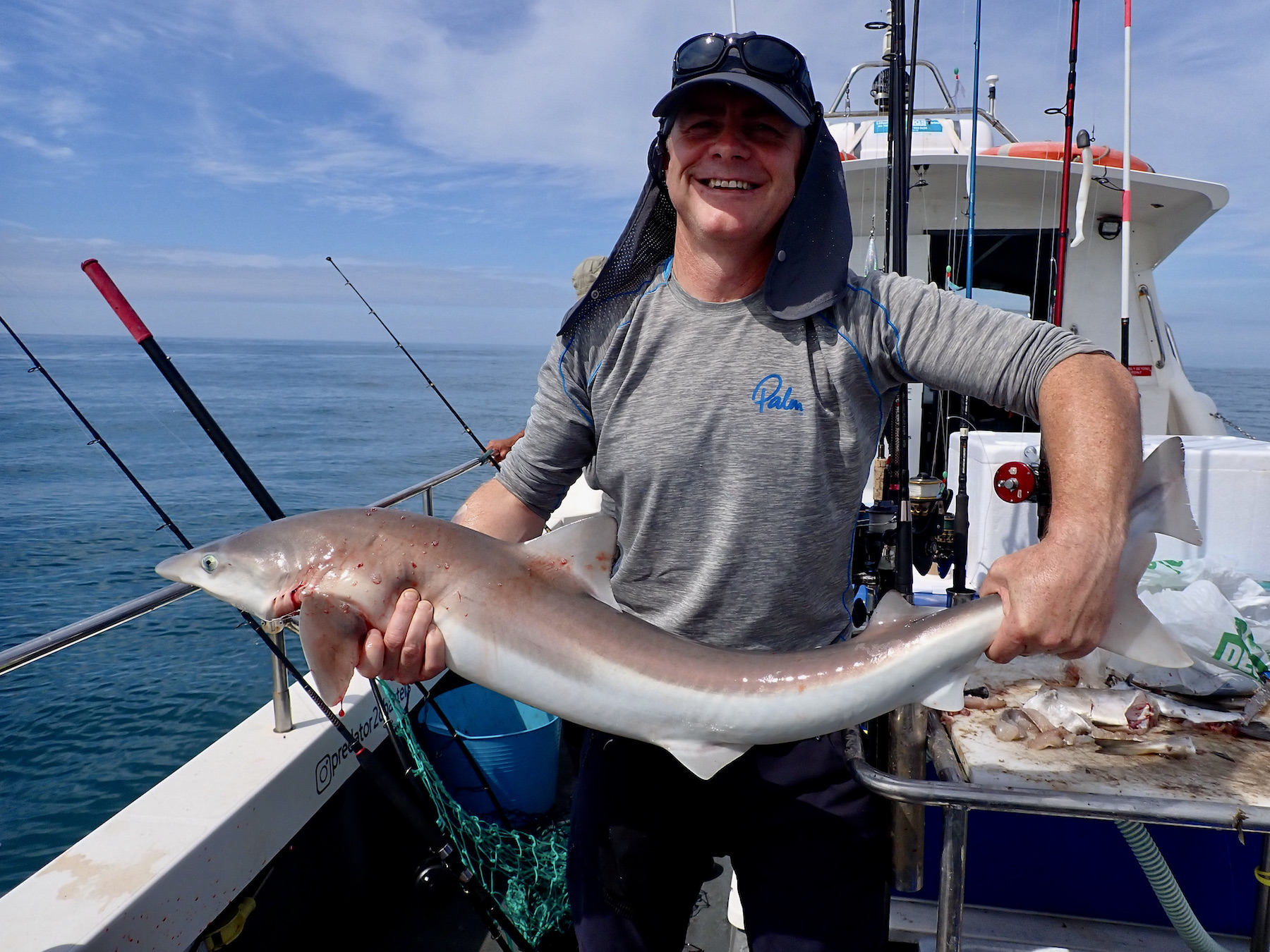
After several hours steaming about and drifting it was good to relish the silence as the boats engines were cut and the boat settled at anchor. The tide was still running but 1lb of lead was adequate to keep the baits on the sea bed. We all opted for large offerings of fresh pollock or mackerel mounted on large strong hooks. My own choice being Sakuma 8/0 465 Kong hooks crimped to Sakuma 130lb B.S 49 Strand stainless steel wire. On the way out I discussed the pros and cons of wire versus heavy mono when fishing for tope. Dan showed me a couple of his tope rigs that he had based upon carp fishers hair rigs. The use of circle hooks and a 250lb plus mono trace could indeed have an edge over the traditional heavy wire trace from both a number of fish hooked and fish care?
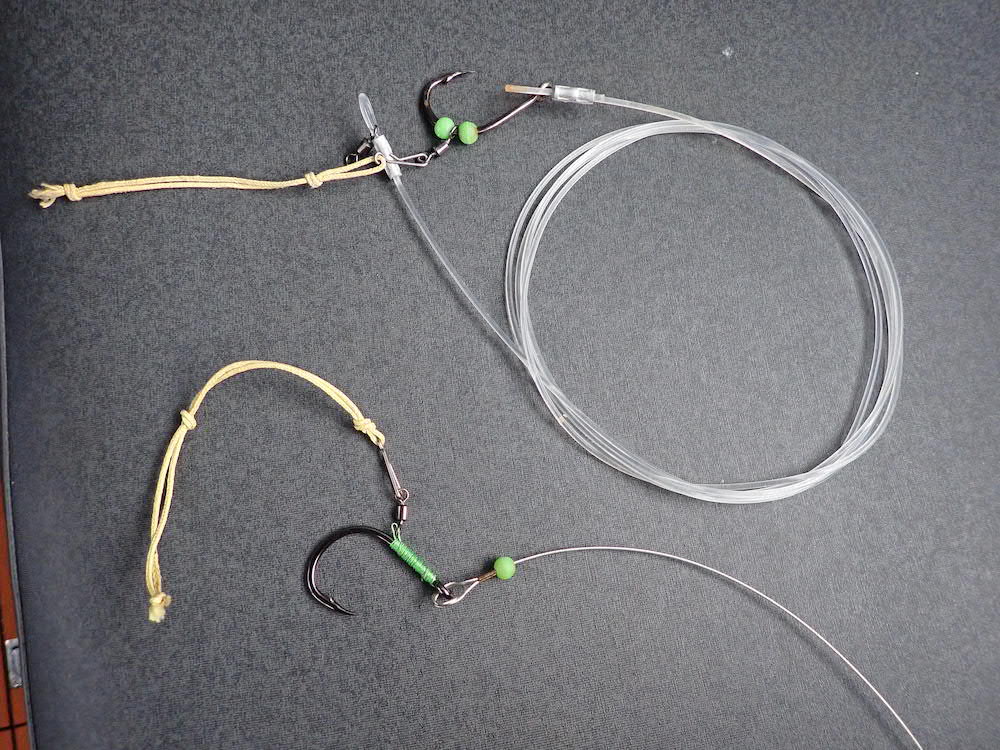
It often takes a while for the scent trail to build but on this occasion it was only ten minutes before I had a powerful take from a tope that shed the hook after a few moments. This signalled a flurry of activity as several rods took on fighting curves as tope ripped into baits. Several were soon boated with Peter Robinson boating a beauty of 37lb. This pattern followed throughout our time at anchor with flurries of activity resulting in eight tope to the boat with several close to thirty pounds.
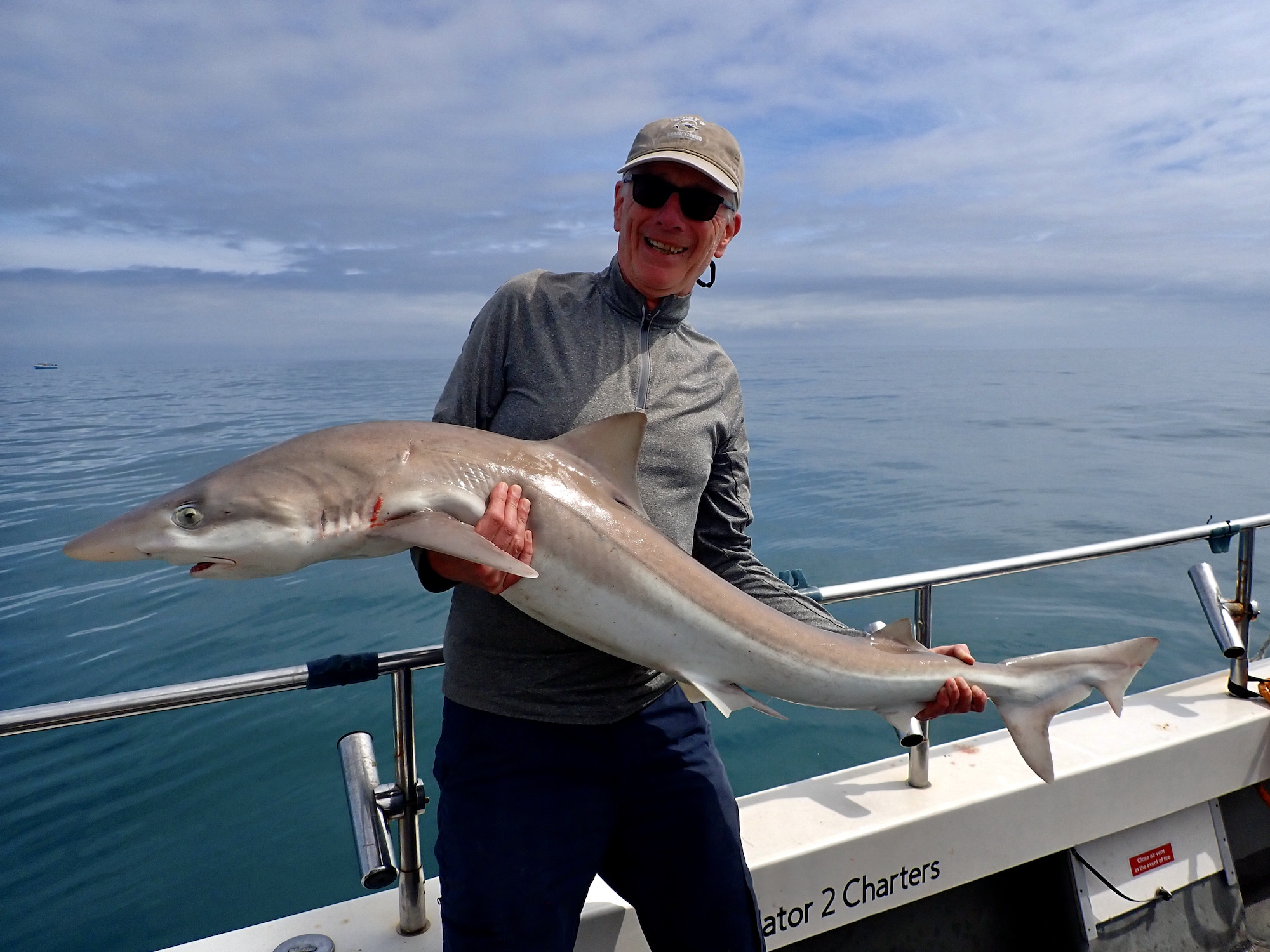
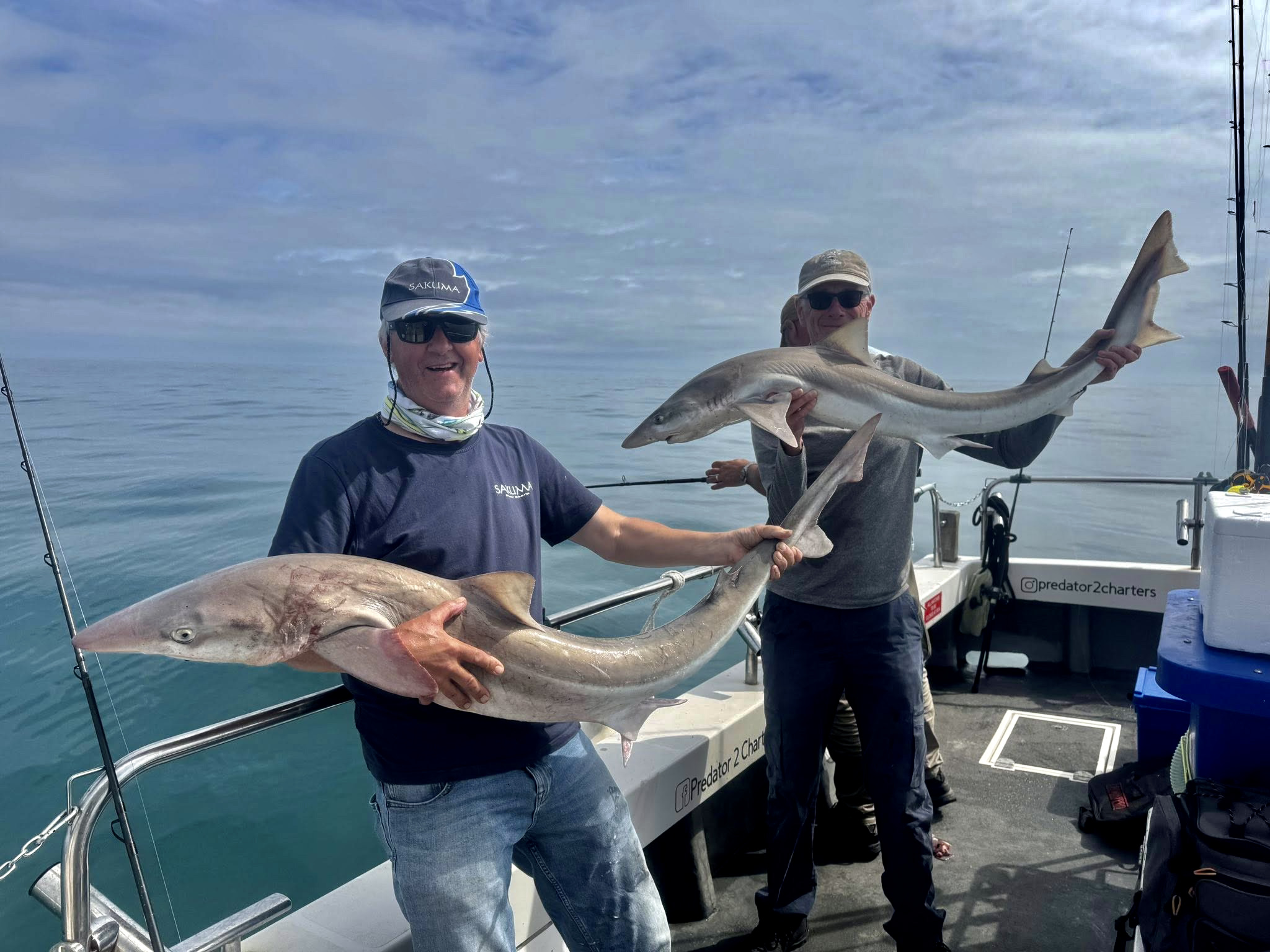
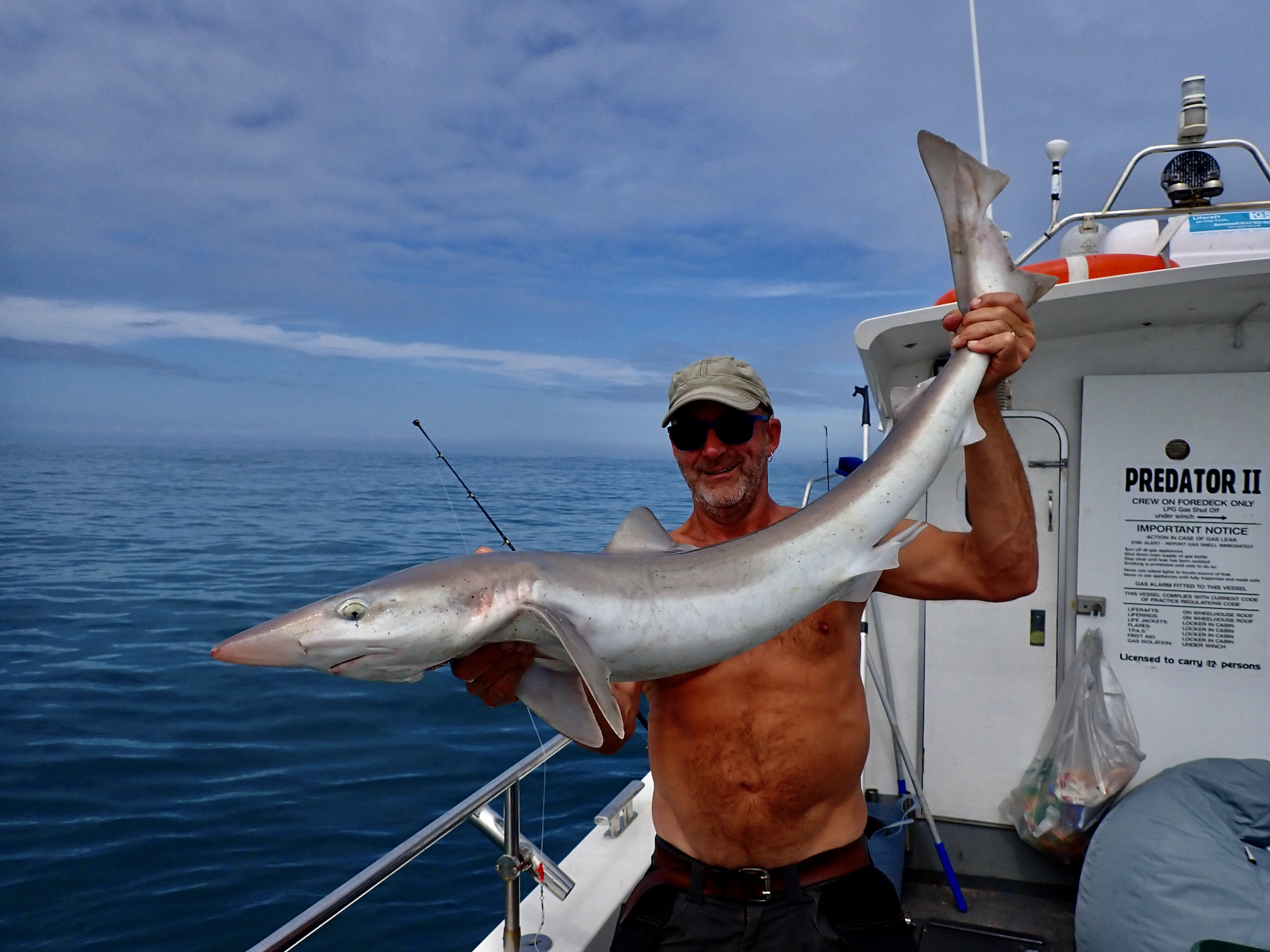
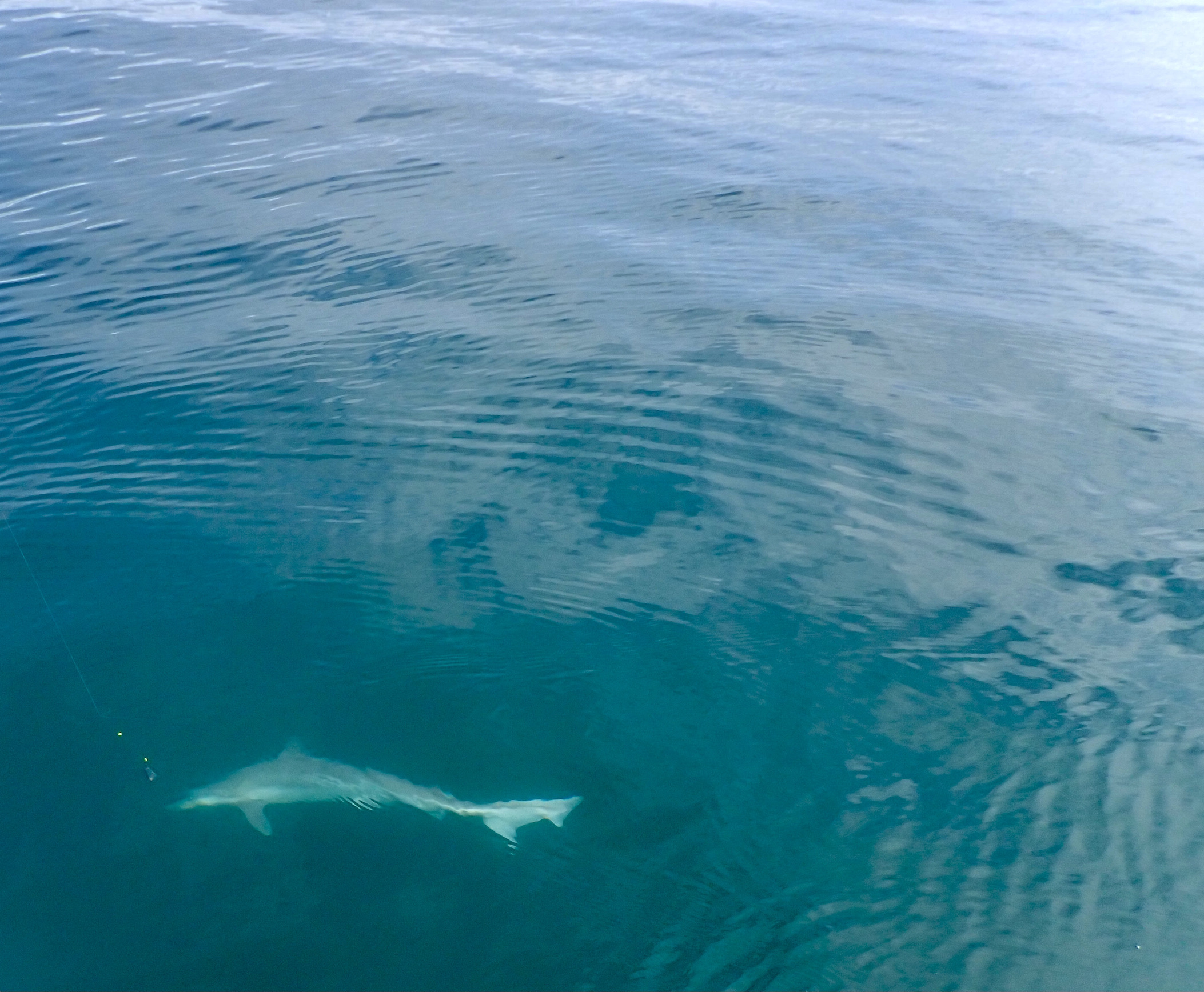
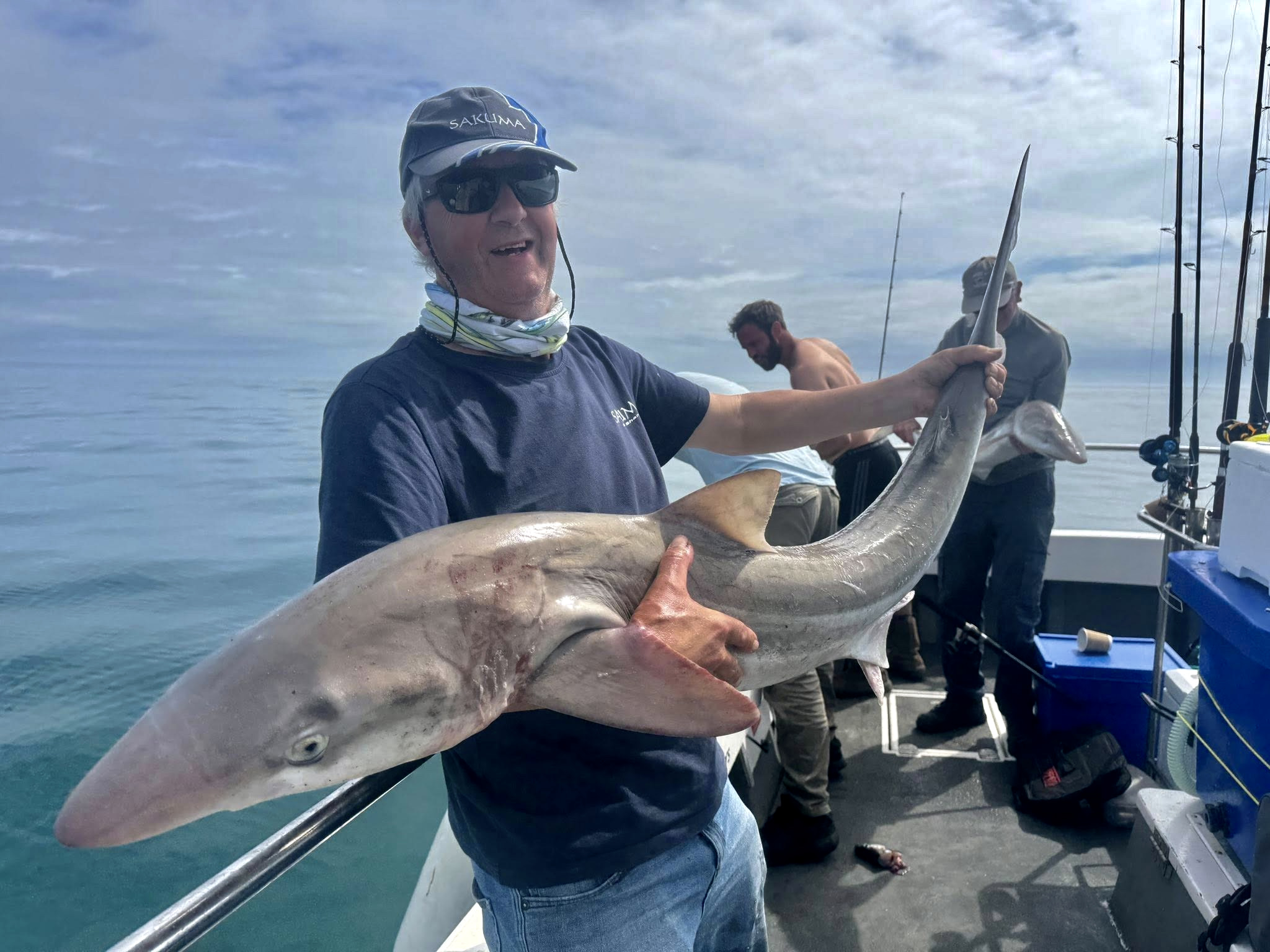
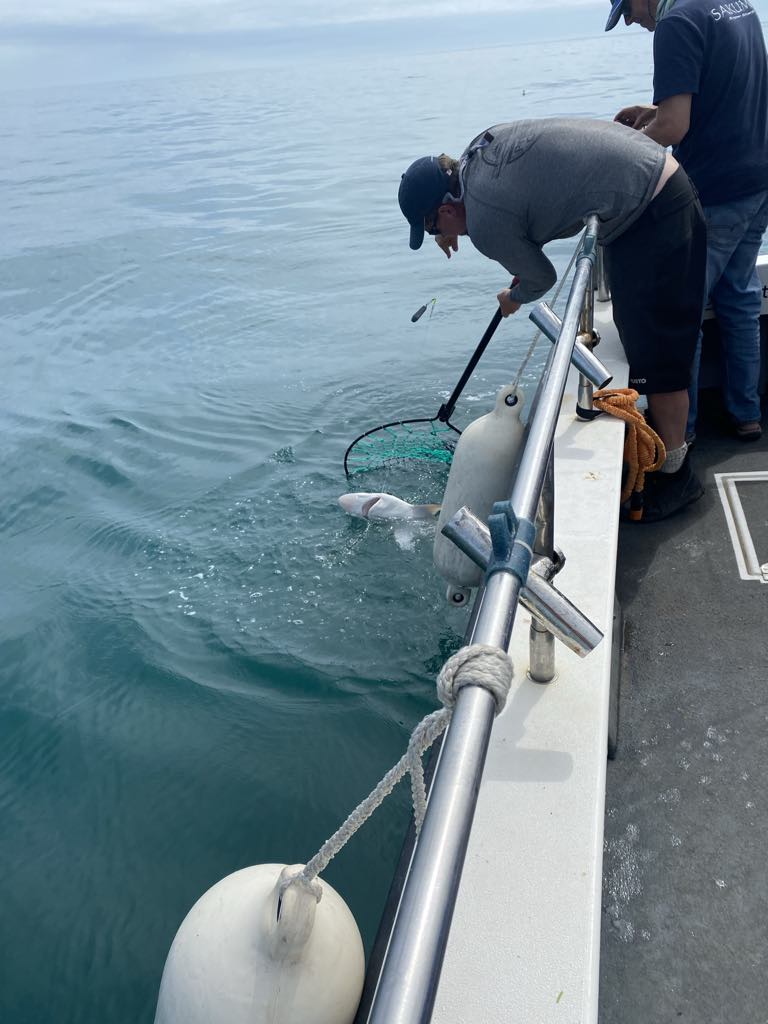
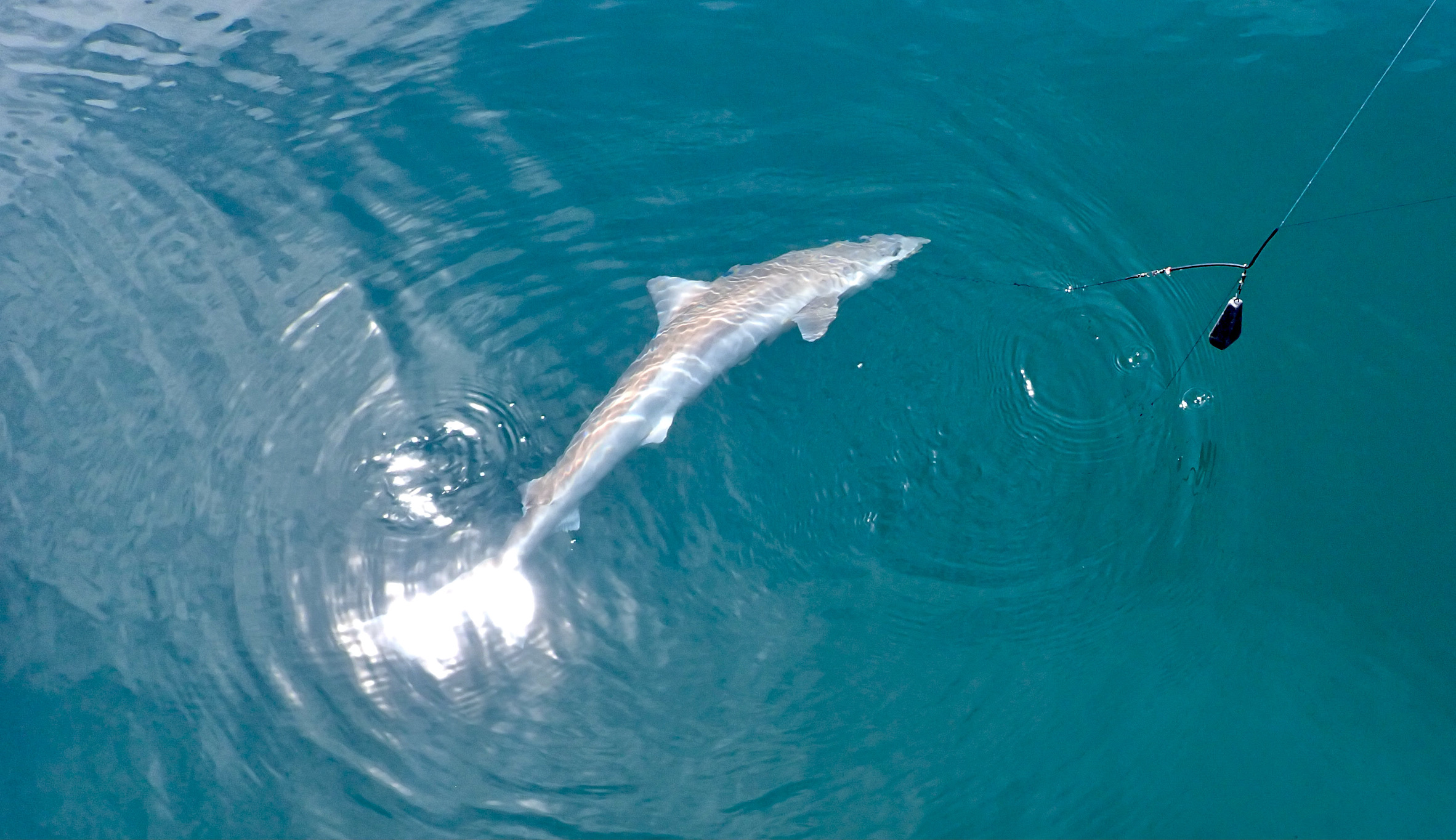
As late afternoon approached the tide turned and action slowed. Dan suggested we head back and stop off for a short lure session in the racing turbulent waters off Morte Point.
Lundy slowly faded majestically away into a bank of mist as we steamed towards the North Devon coast .

It was early evening when we started to cast our lures close to the maelstrom of Morte race. It wasn’t long before rods were hooped over as silver flanked bass seized the lures along with a few mackerel. The best bass topped five pounds for Peter Robinson and Bruce Elston with several fish in the 3lb to 4lb size range.
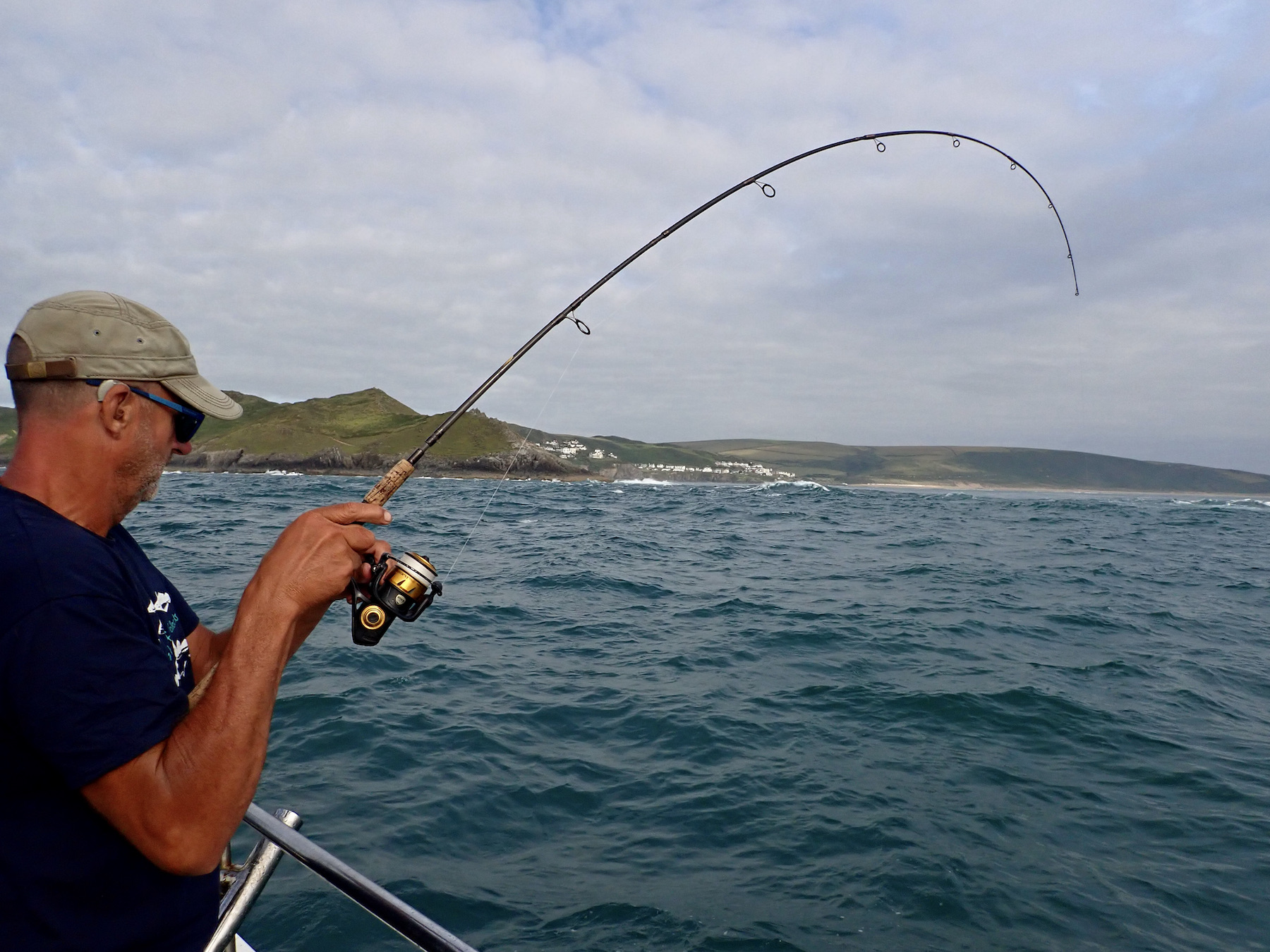
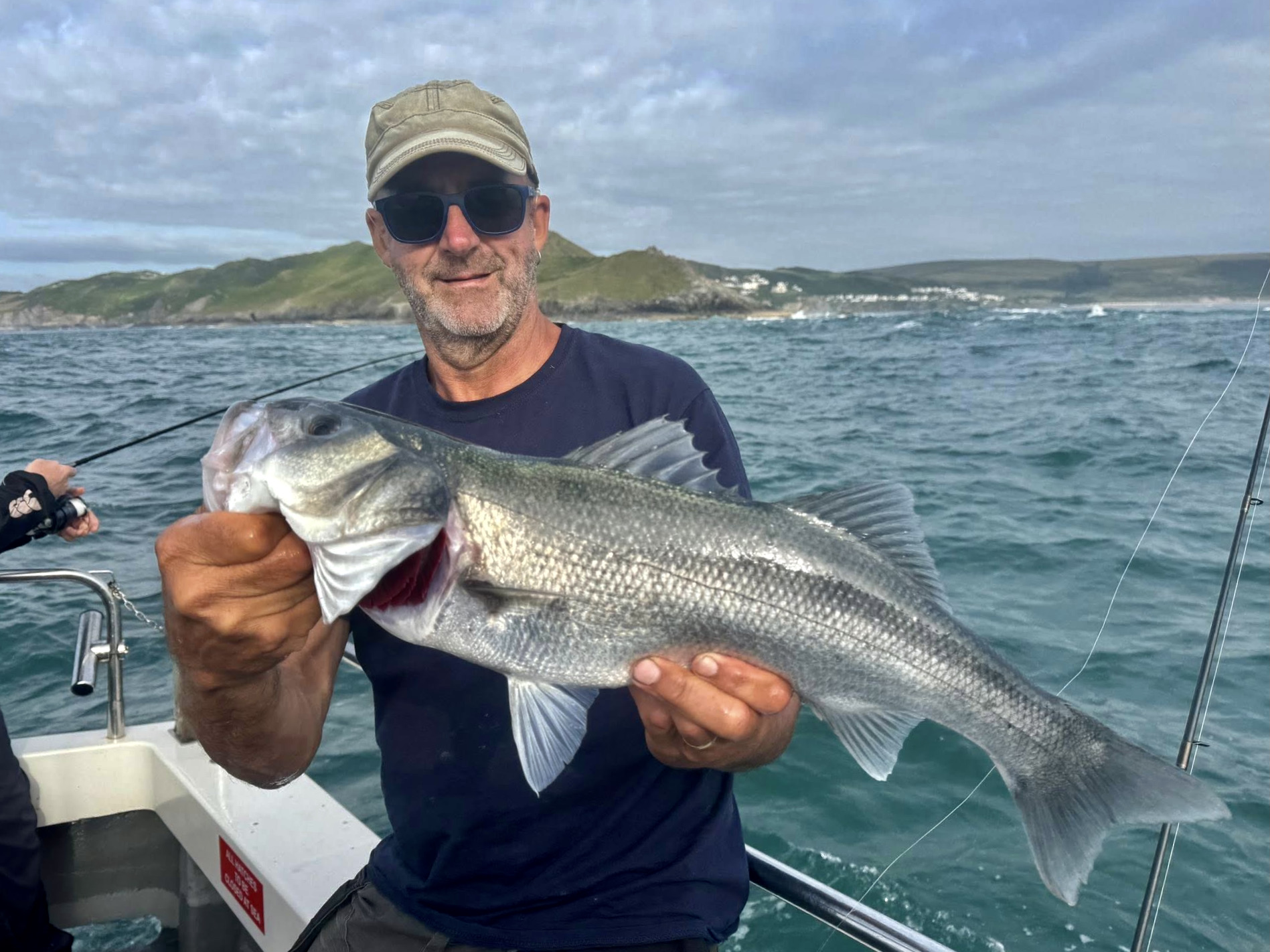
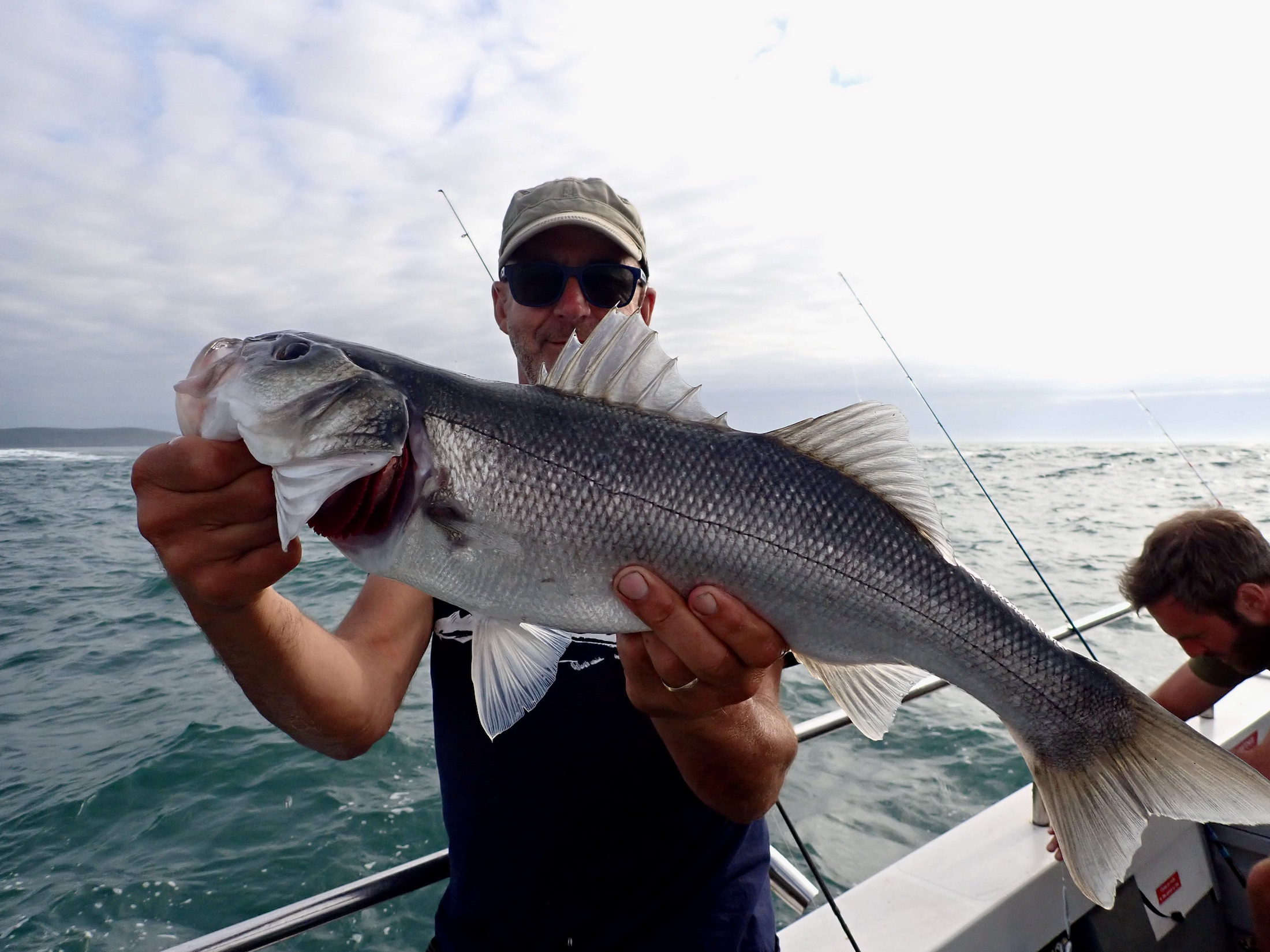
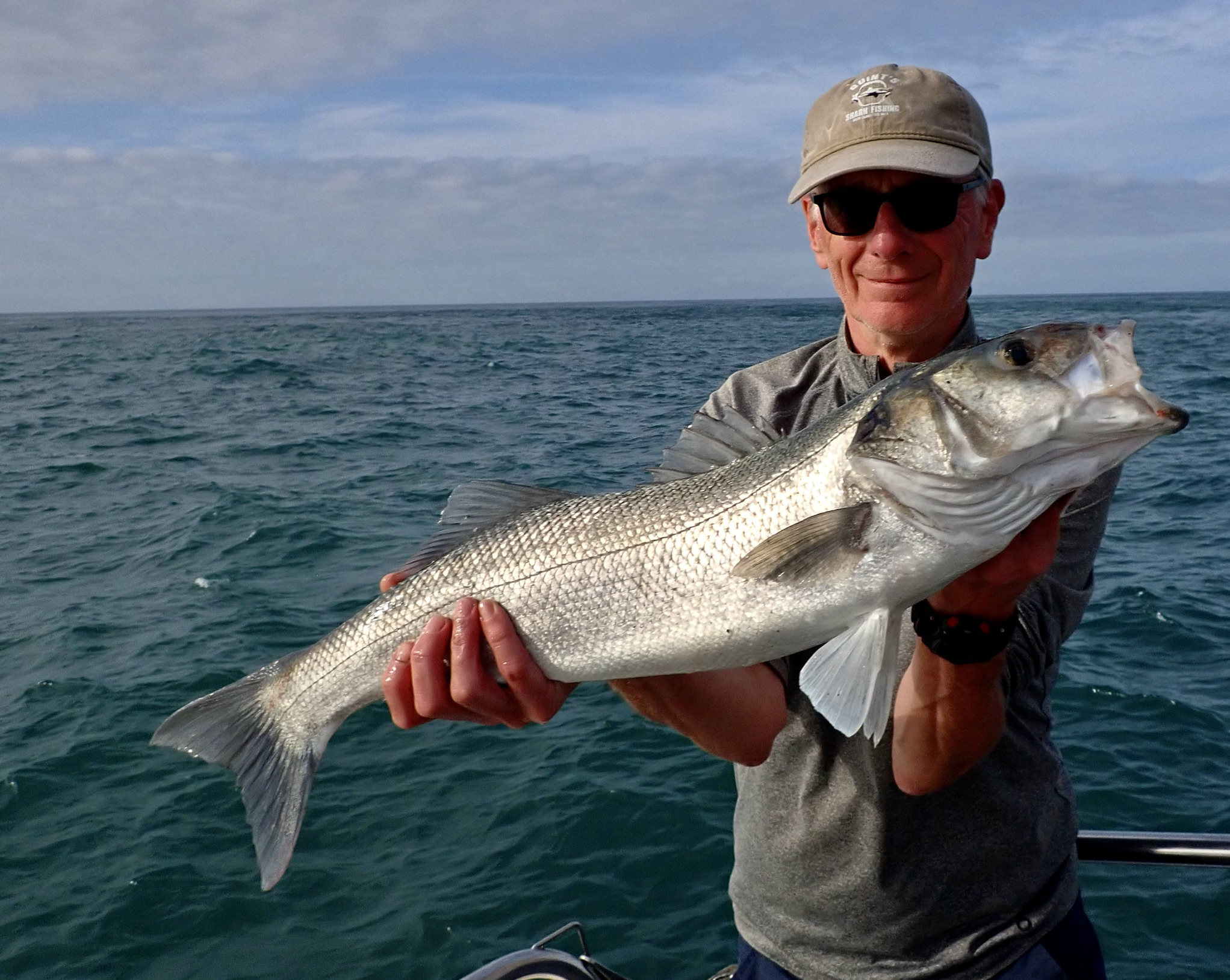
After enjoying a thrilling session to end the day it was time to head back to Ilfracombe and the bustling harbour on a warm summers evening. We thanked Dan for a great day afloat and all look forward to the next adventure on Predator 2.

Midweek evening competition No 7
Results:
1st Craig Crash Lamey 49lb 10oz
2nd Kevin Shears 37lb 7oz
3rd Keith Copland 35lb 6oz
4th Keith Mountjoy 30lb 2oz
5th Les Polden 26lb
14 members fished.
Light drizzle and still muggy conditions seemed to switch the carp off, but the bream certainly had a good feed .
There appears to be no stopping Craig,who chalked up his 4th victory in a row. This is quite remarkable, as he has done this from all areas around the lake.
This time off of peg 10 , again on luncheon meat.
Kevin’s bag of mainly good sized skimmer bream was taken on corn fished in the margins on peg 6.
Keith has come third on peg 17.
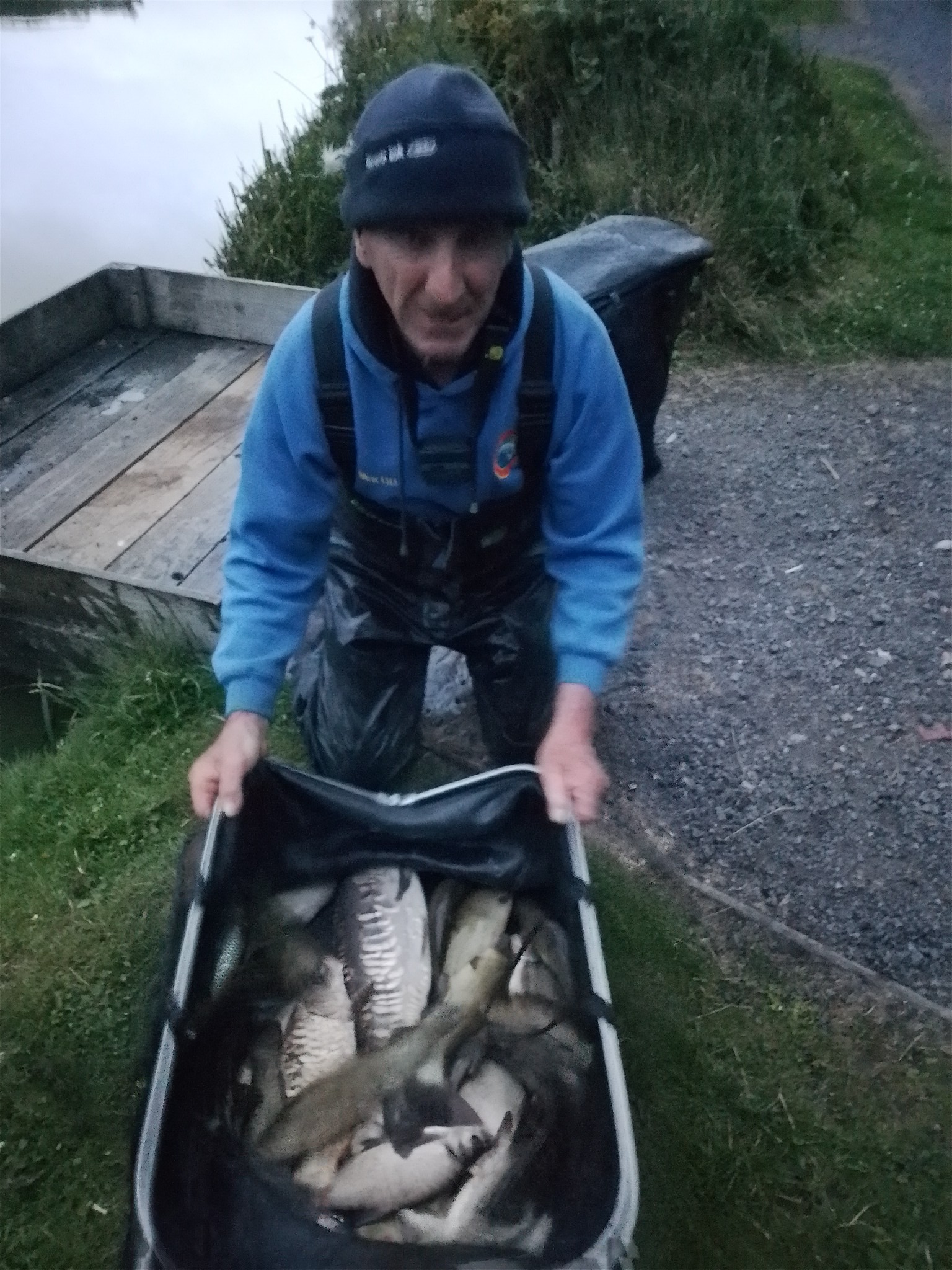
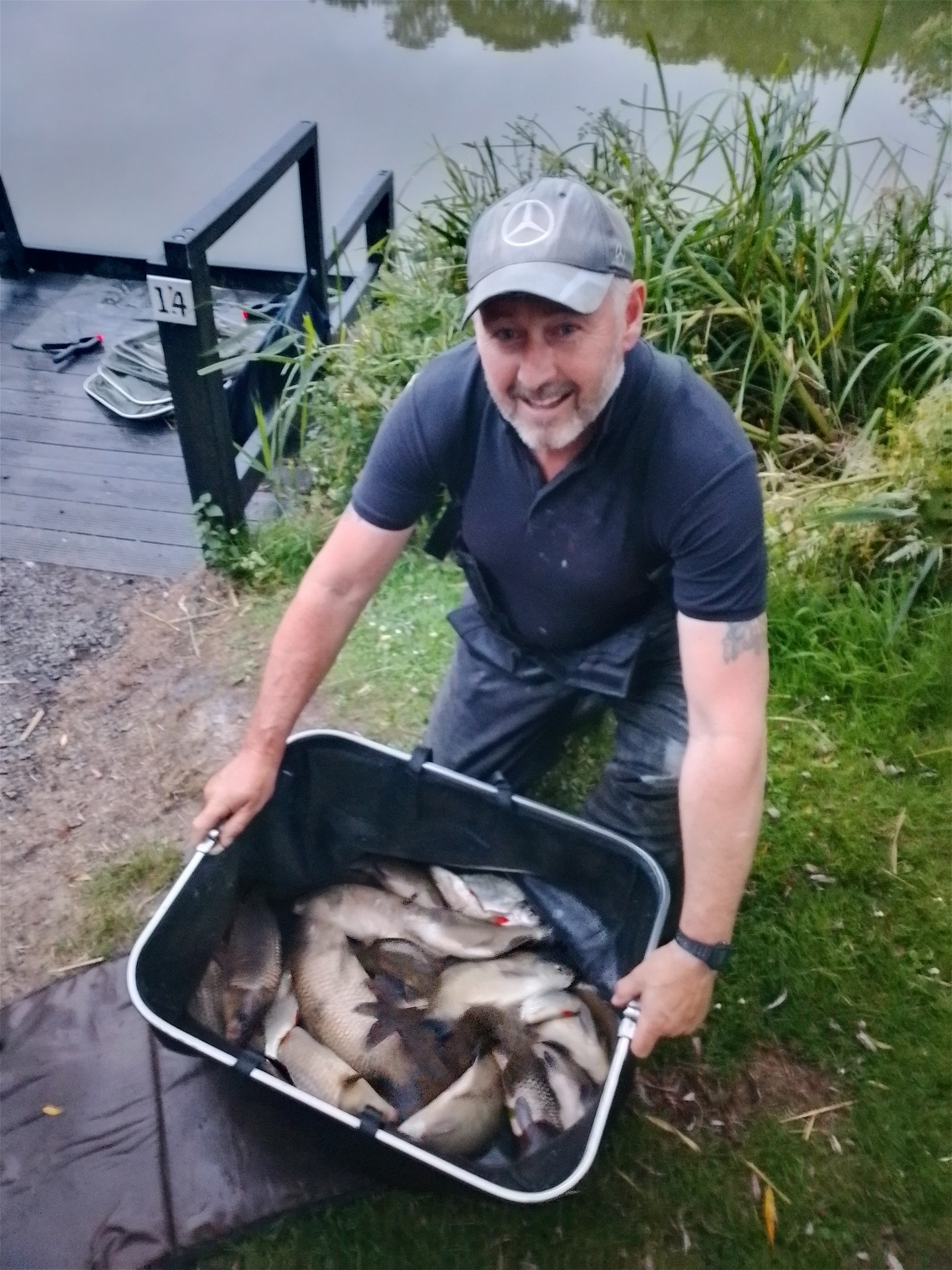
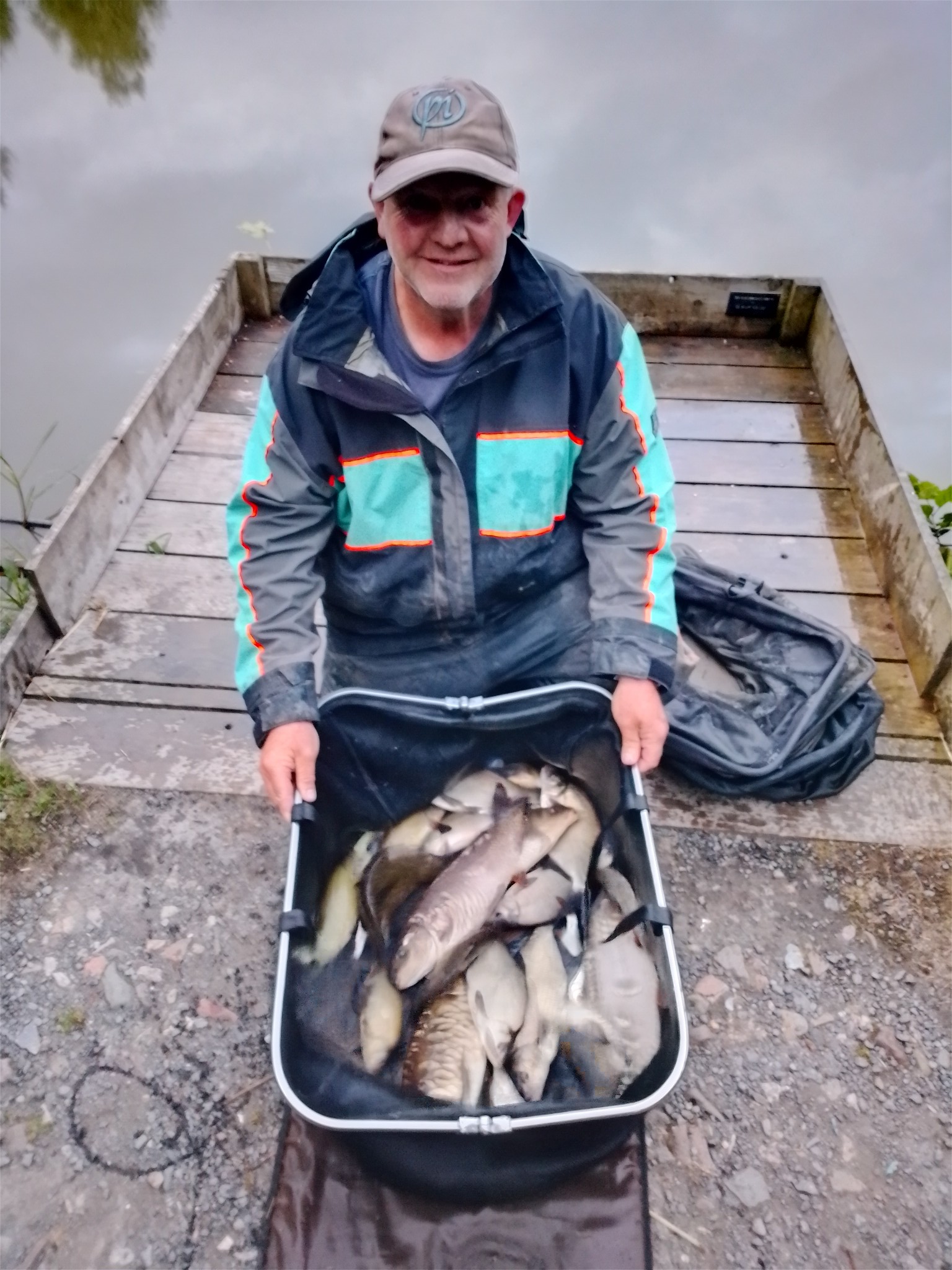
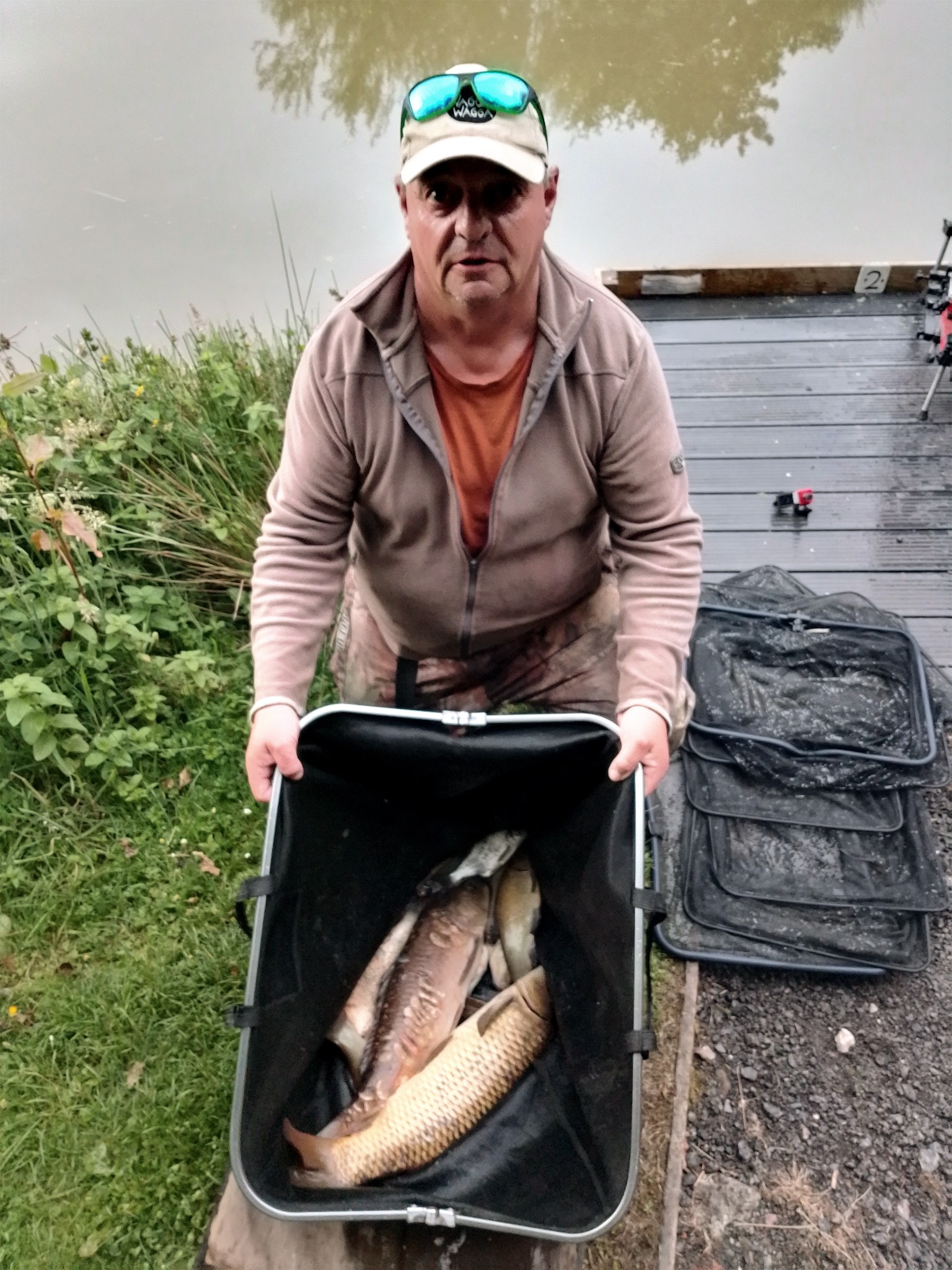
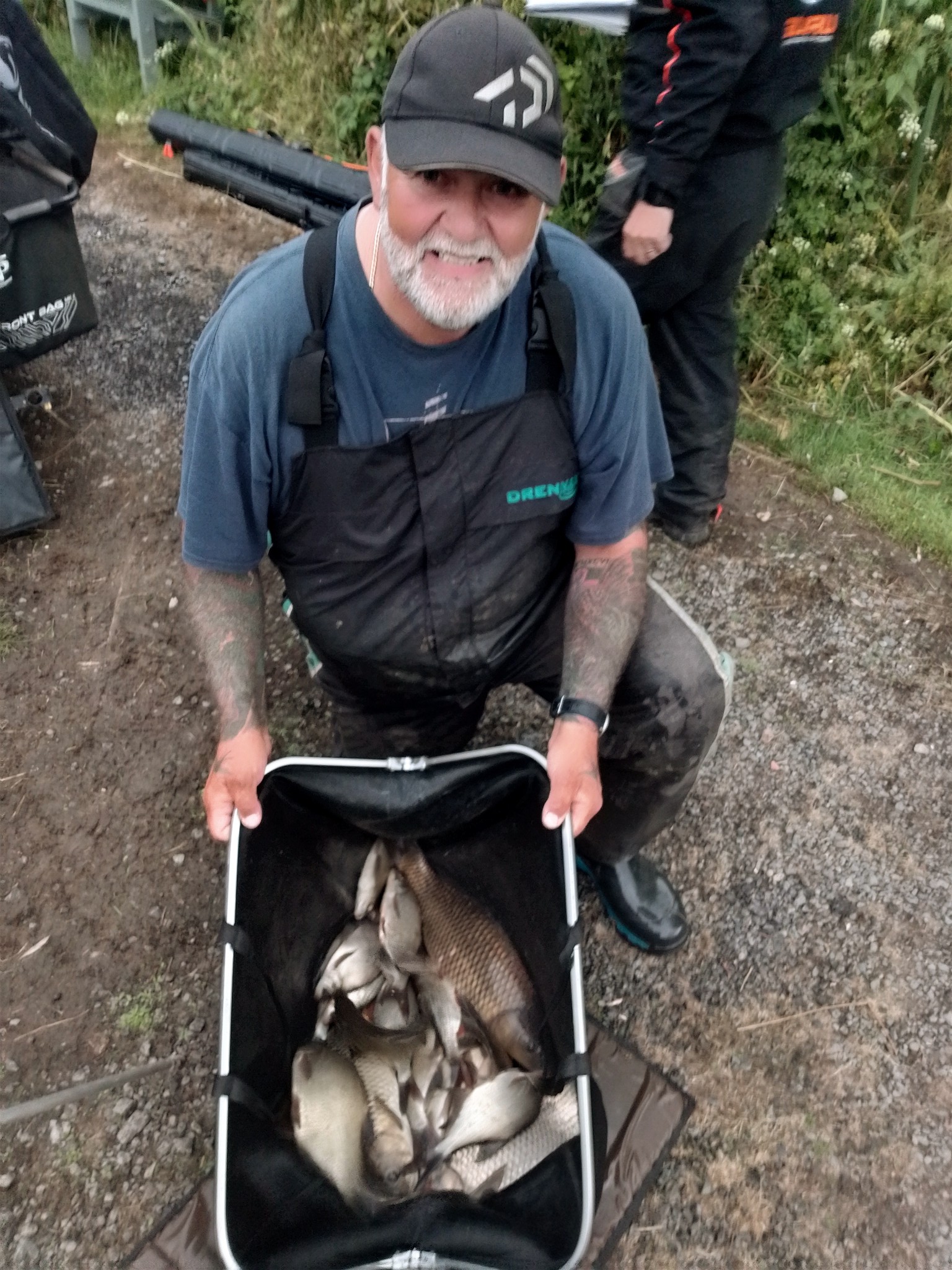
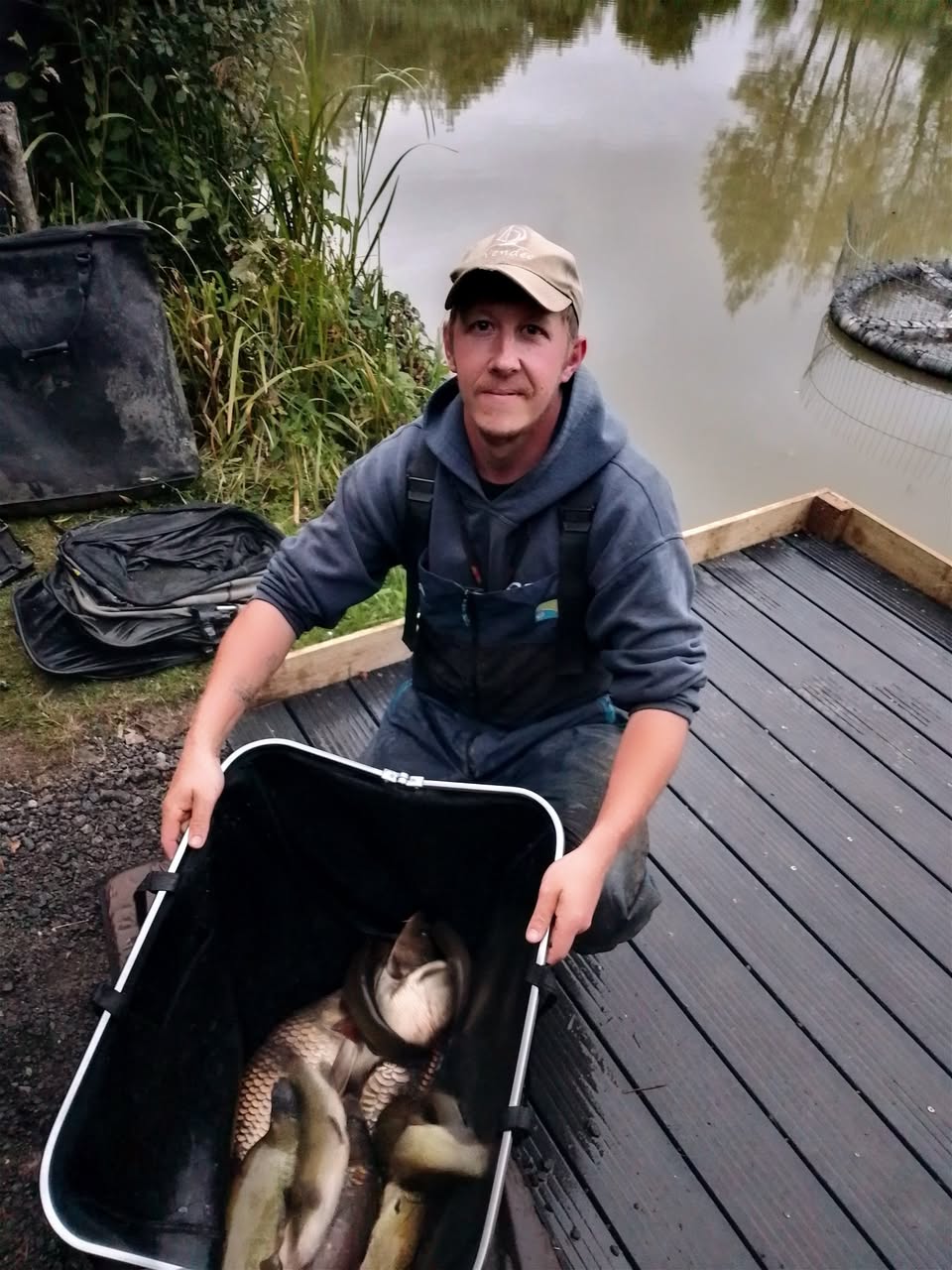
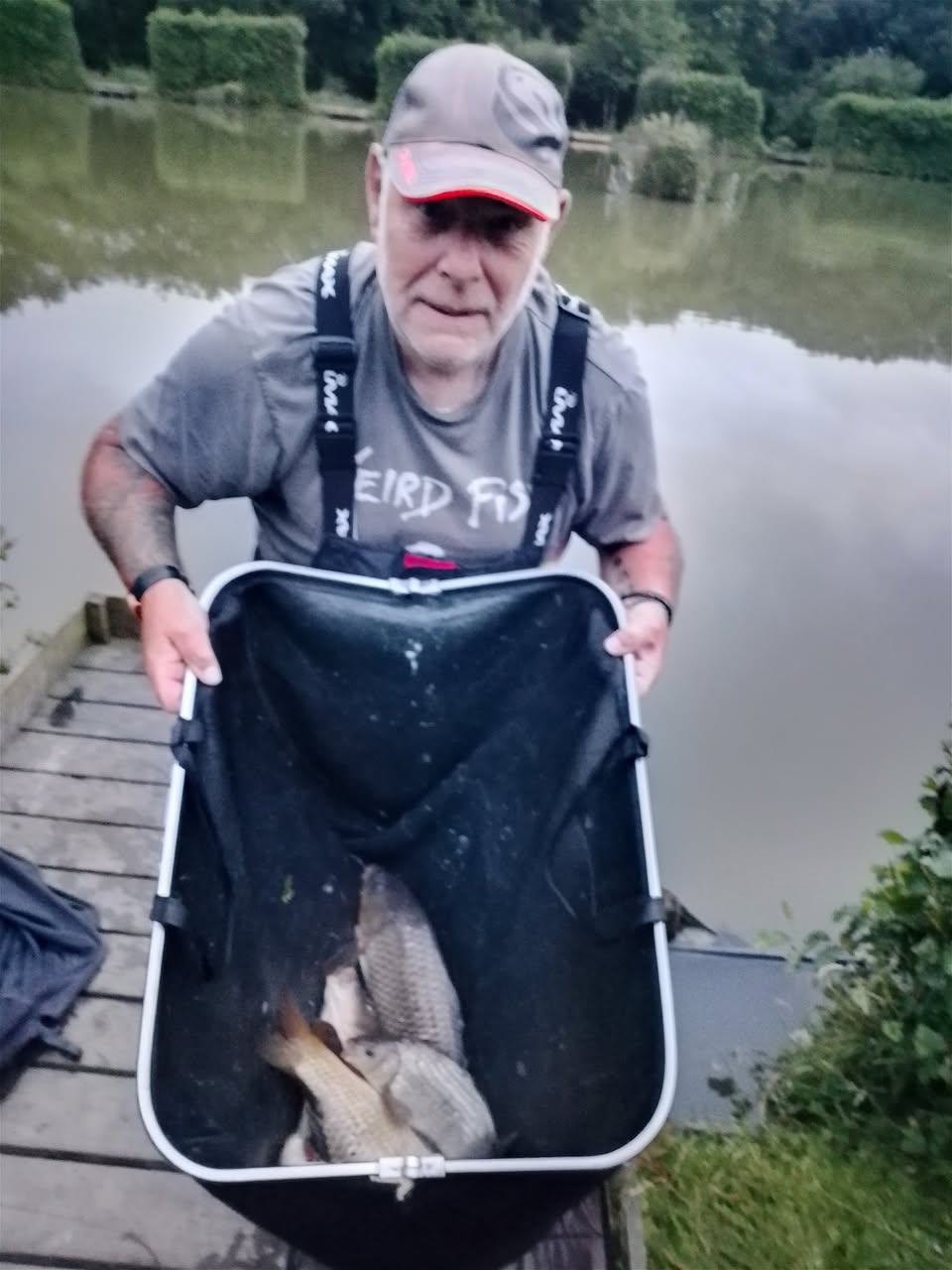
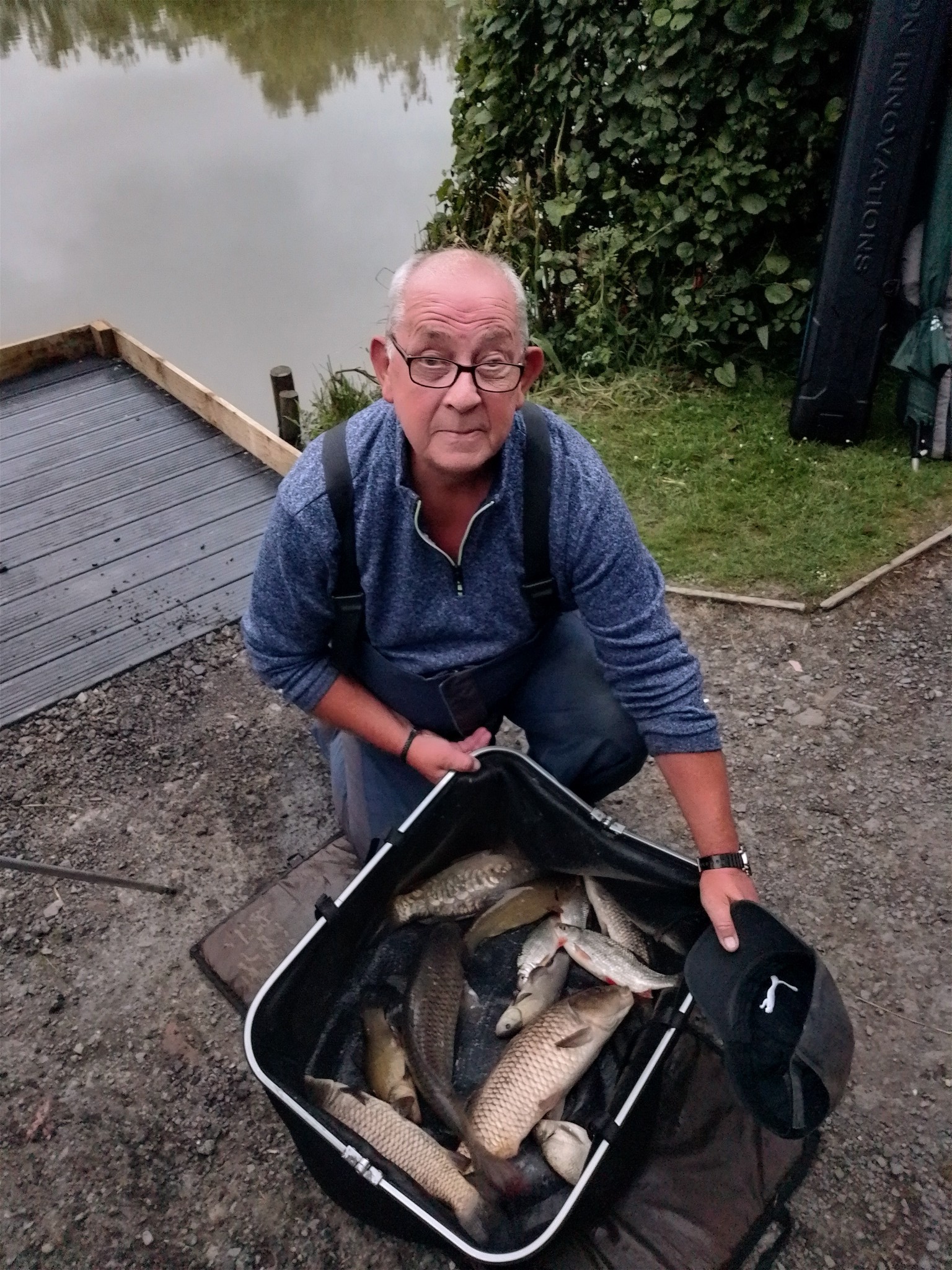
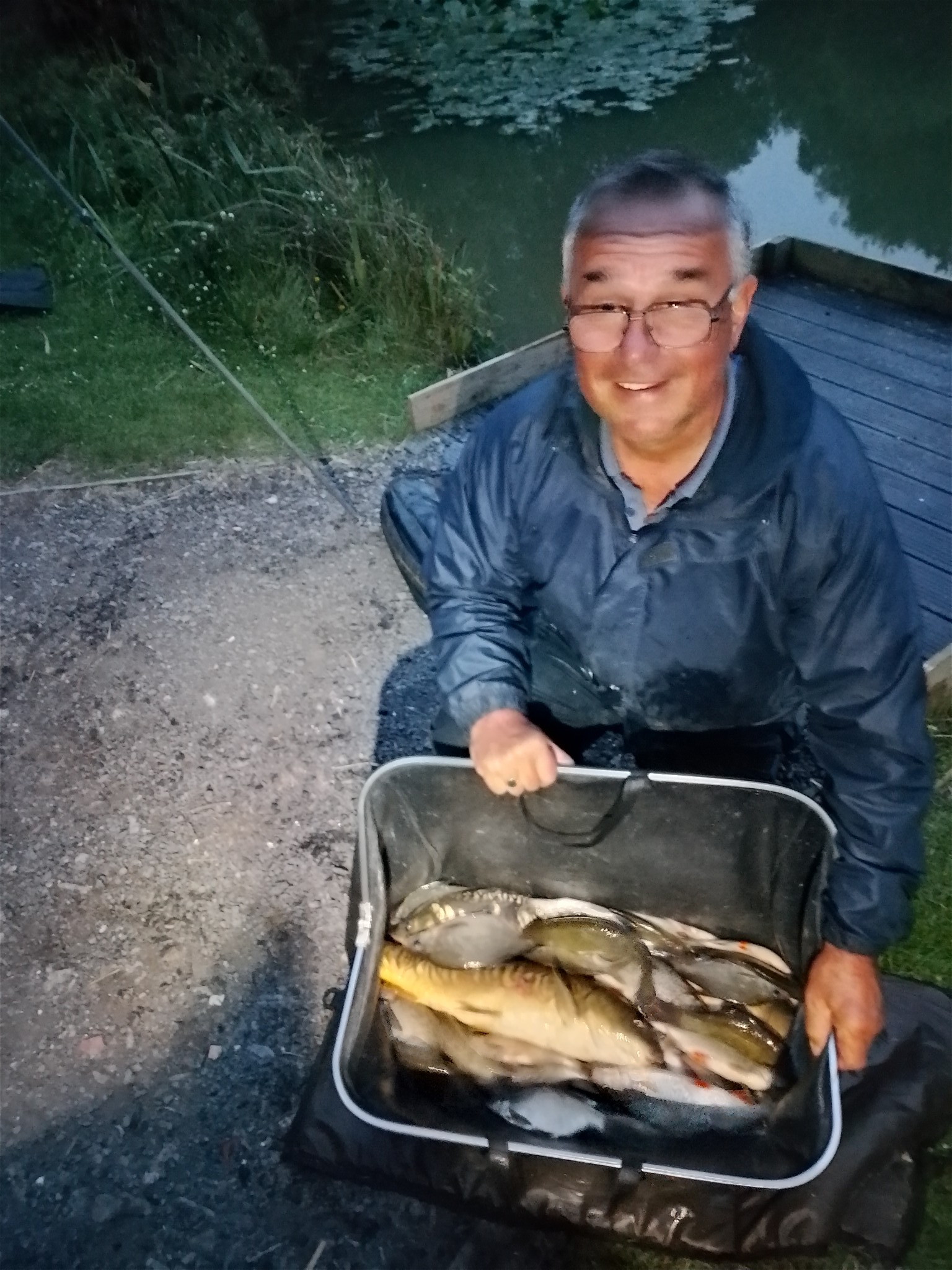
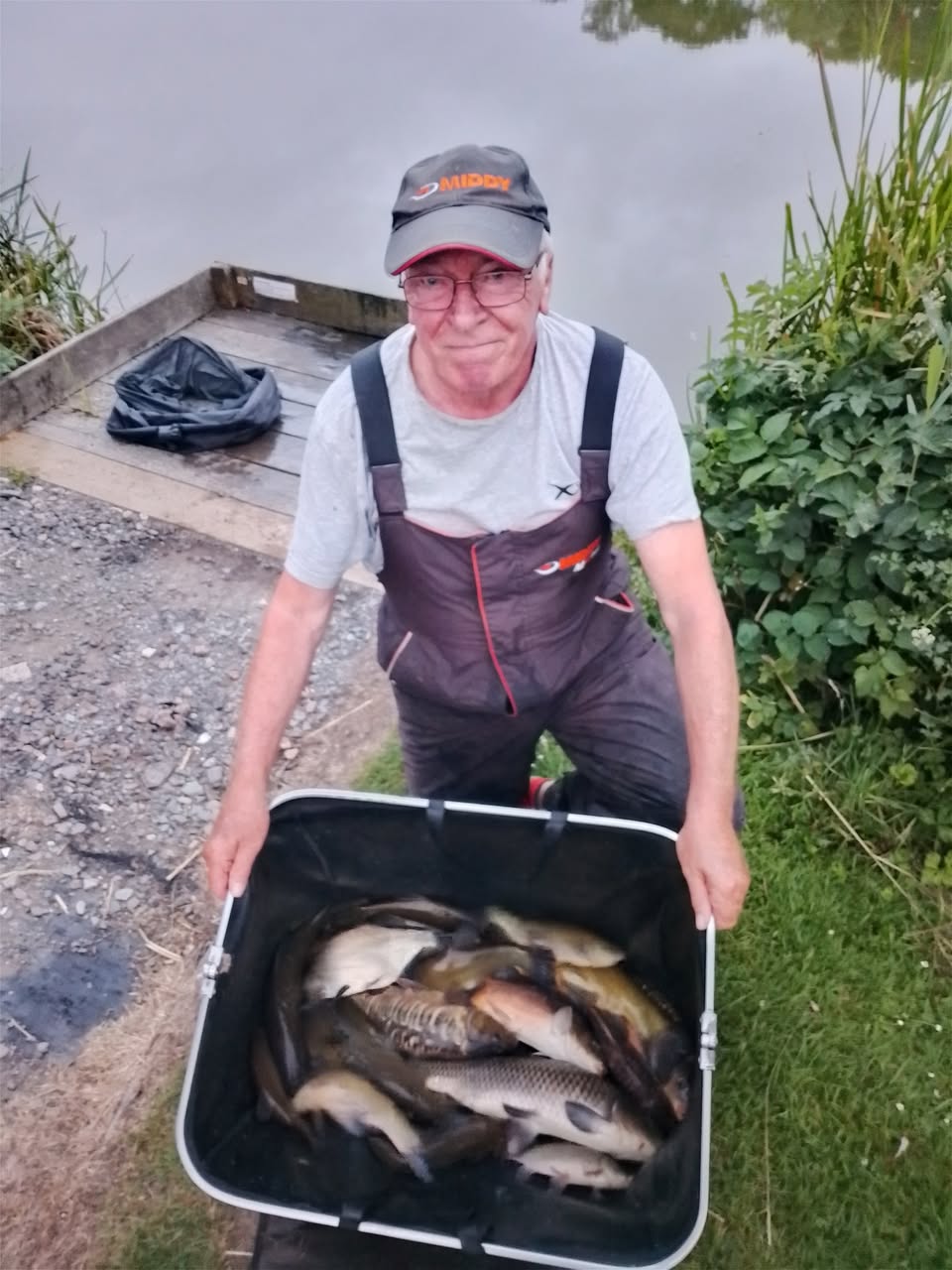
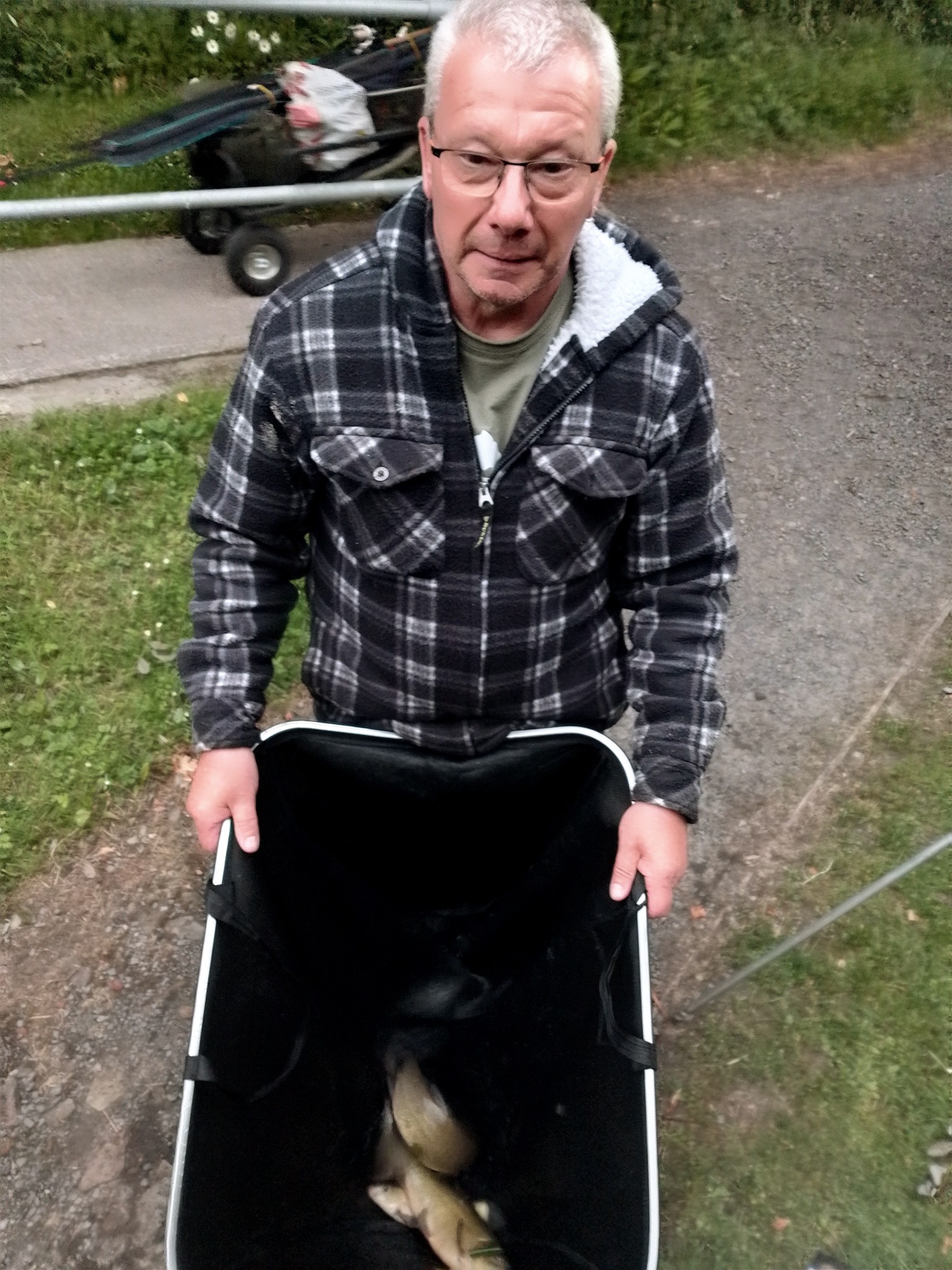
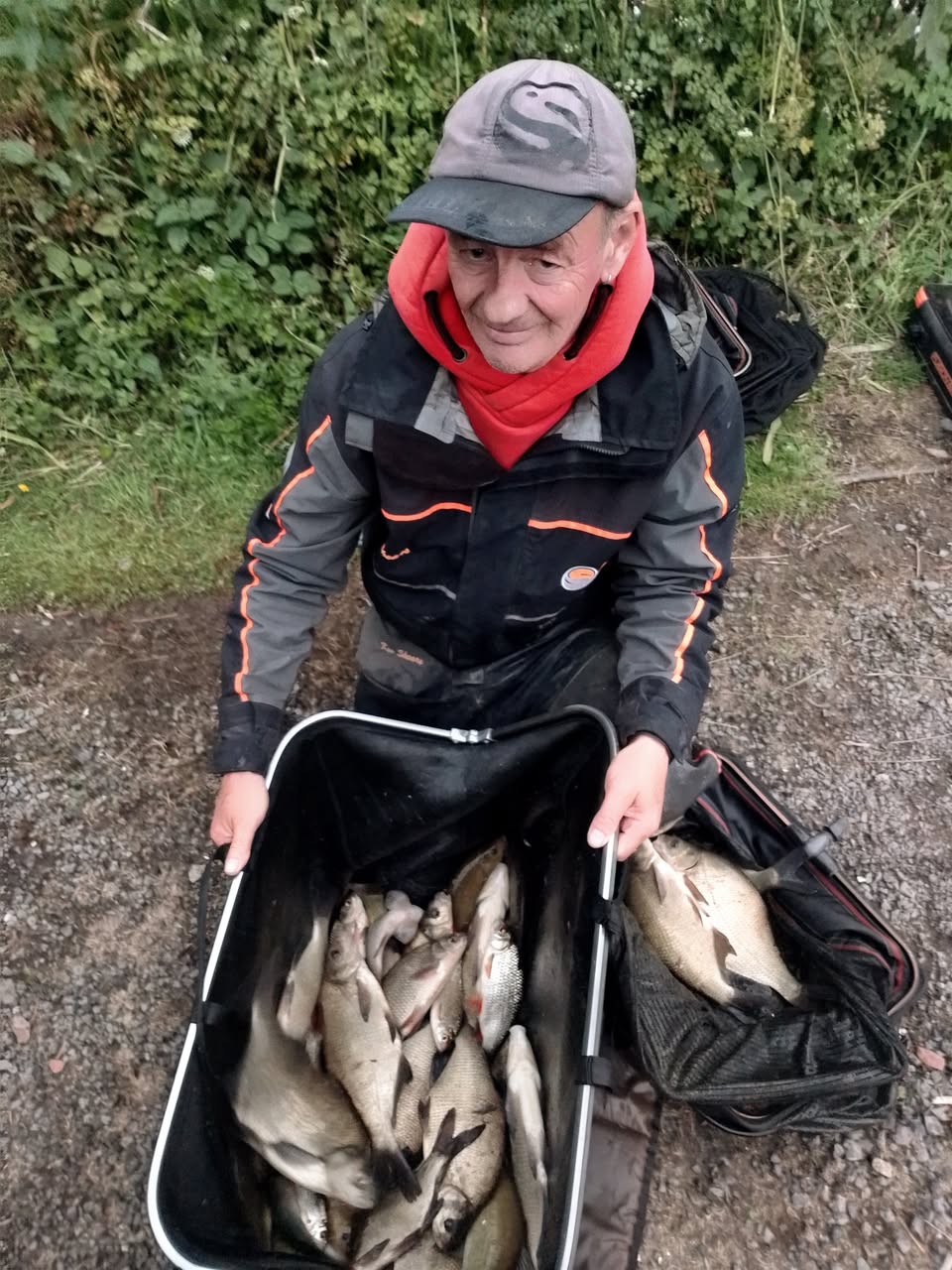

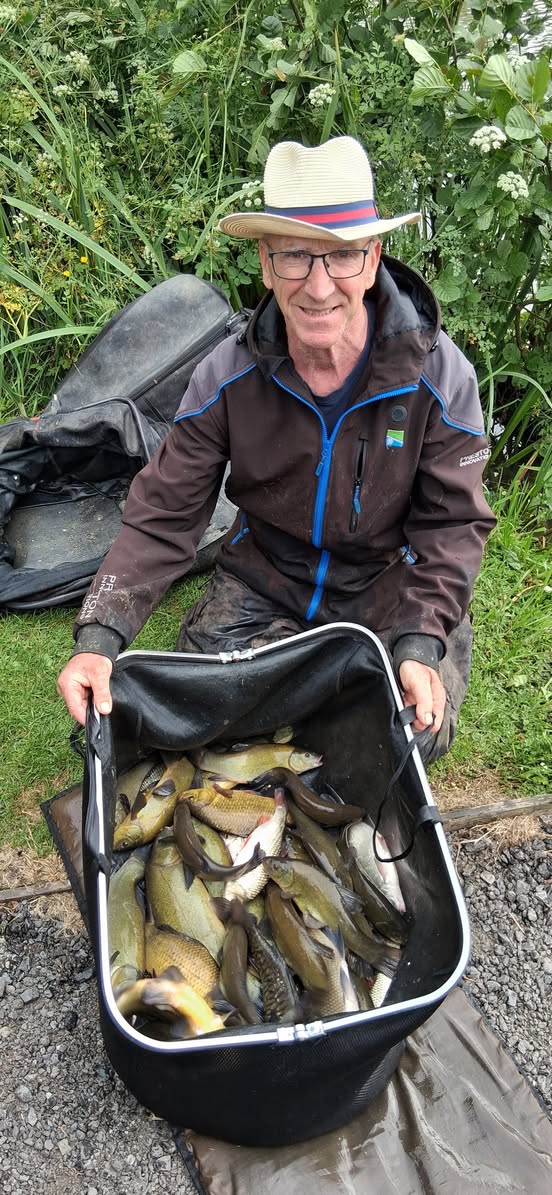
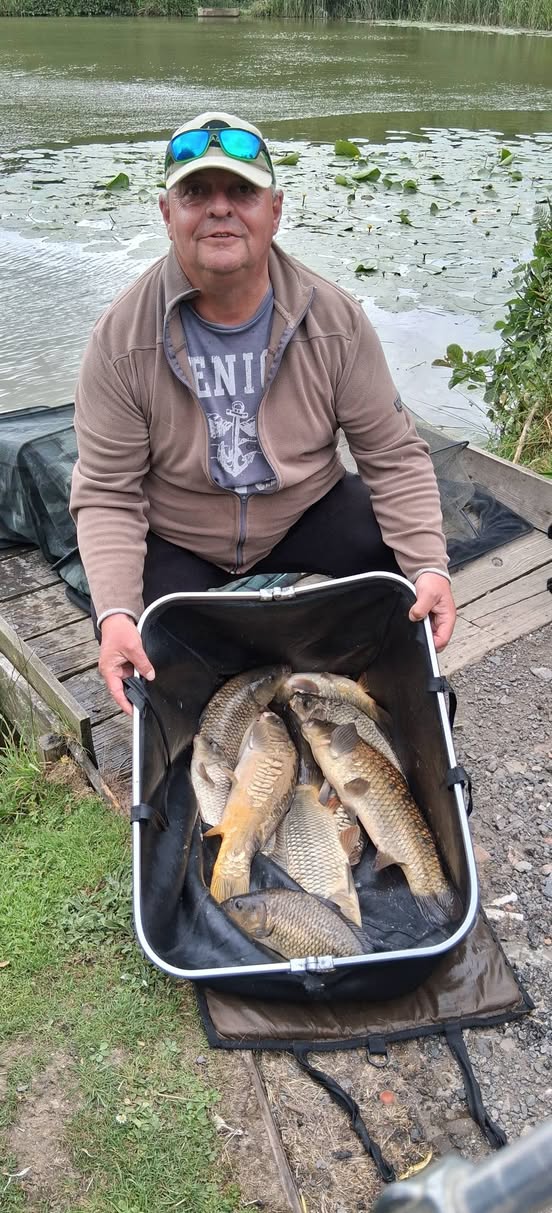
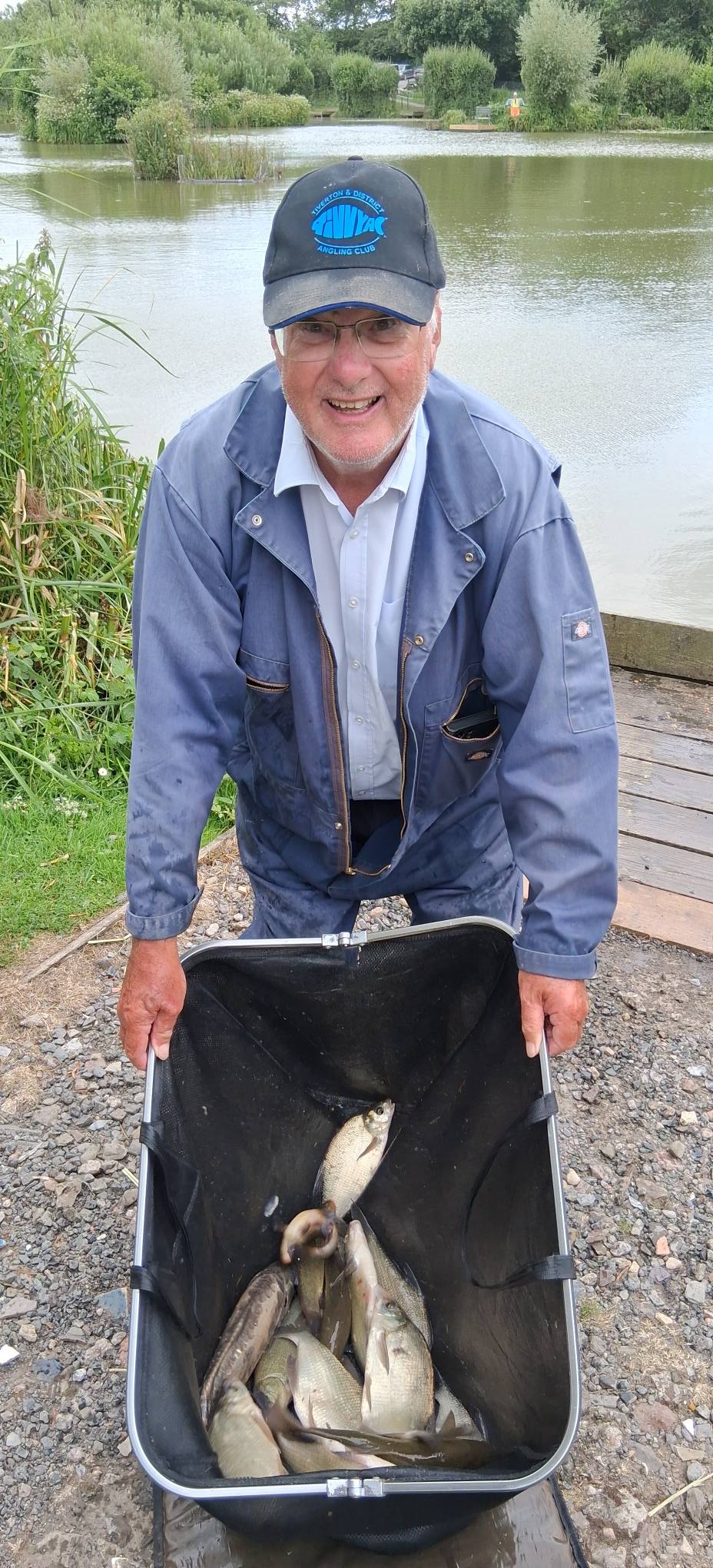
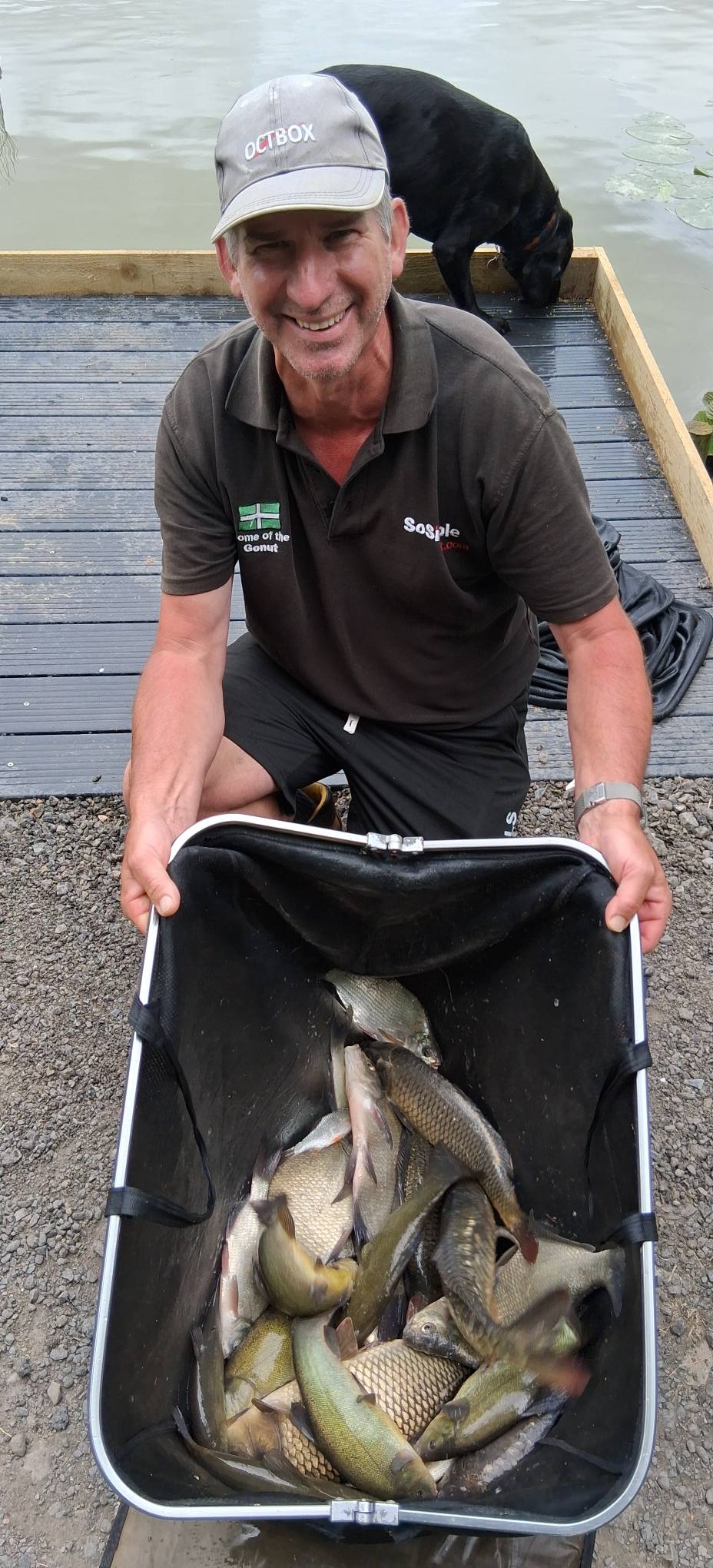
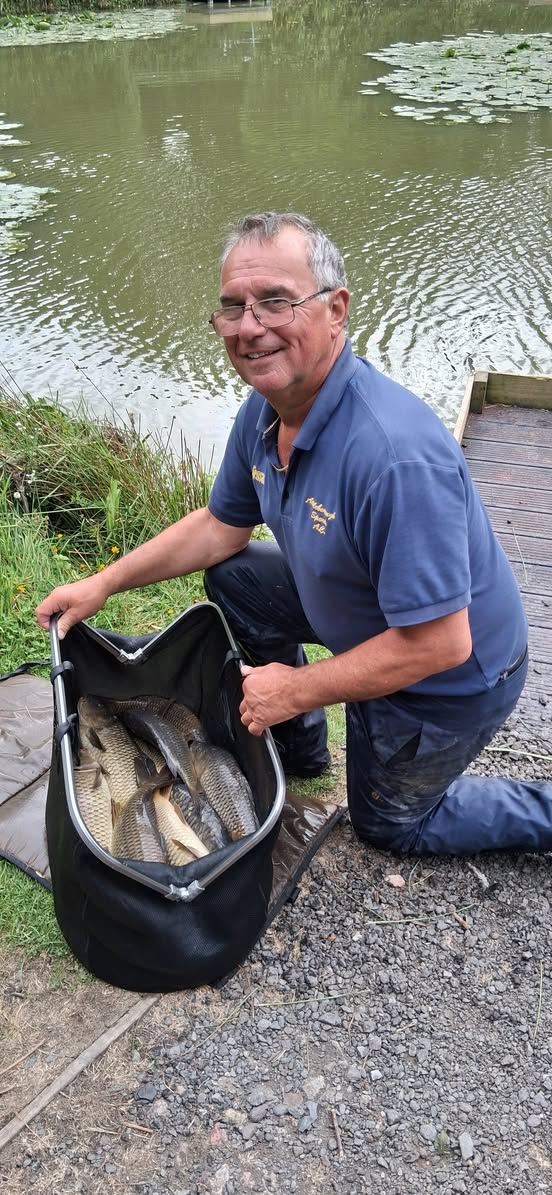
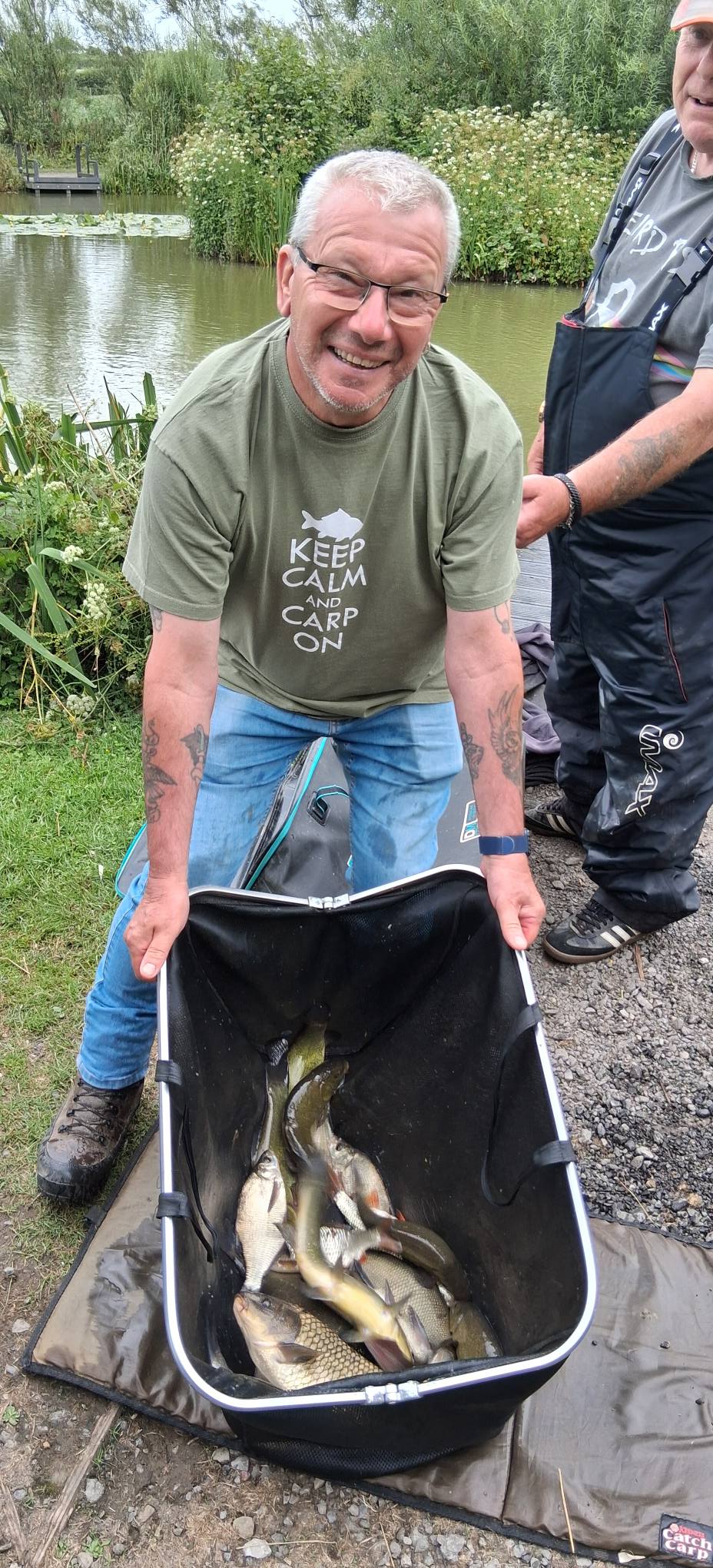
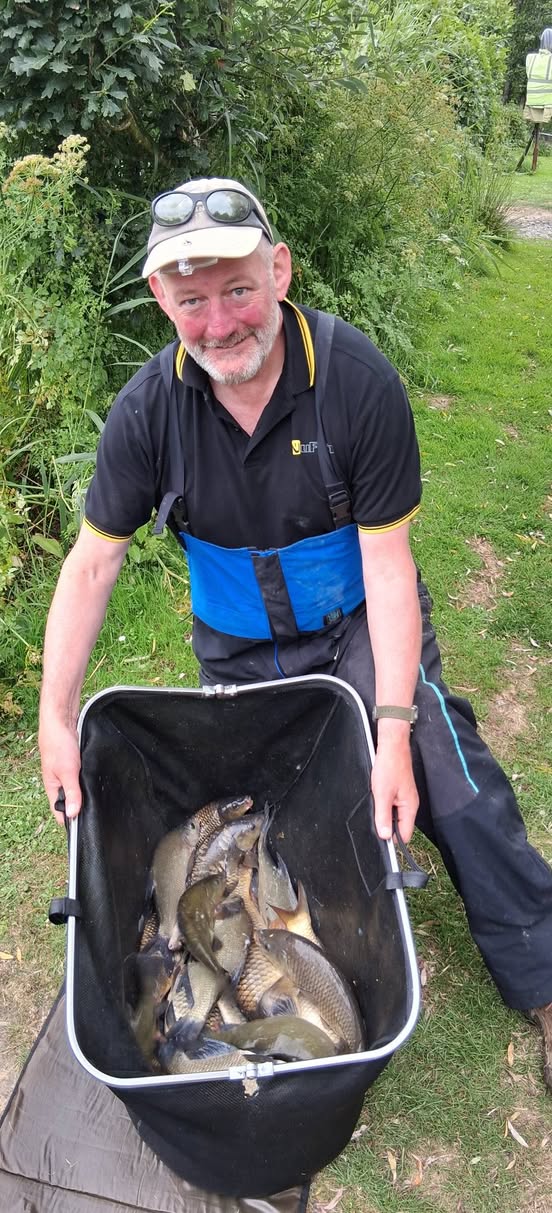
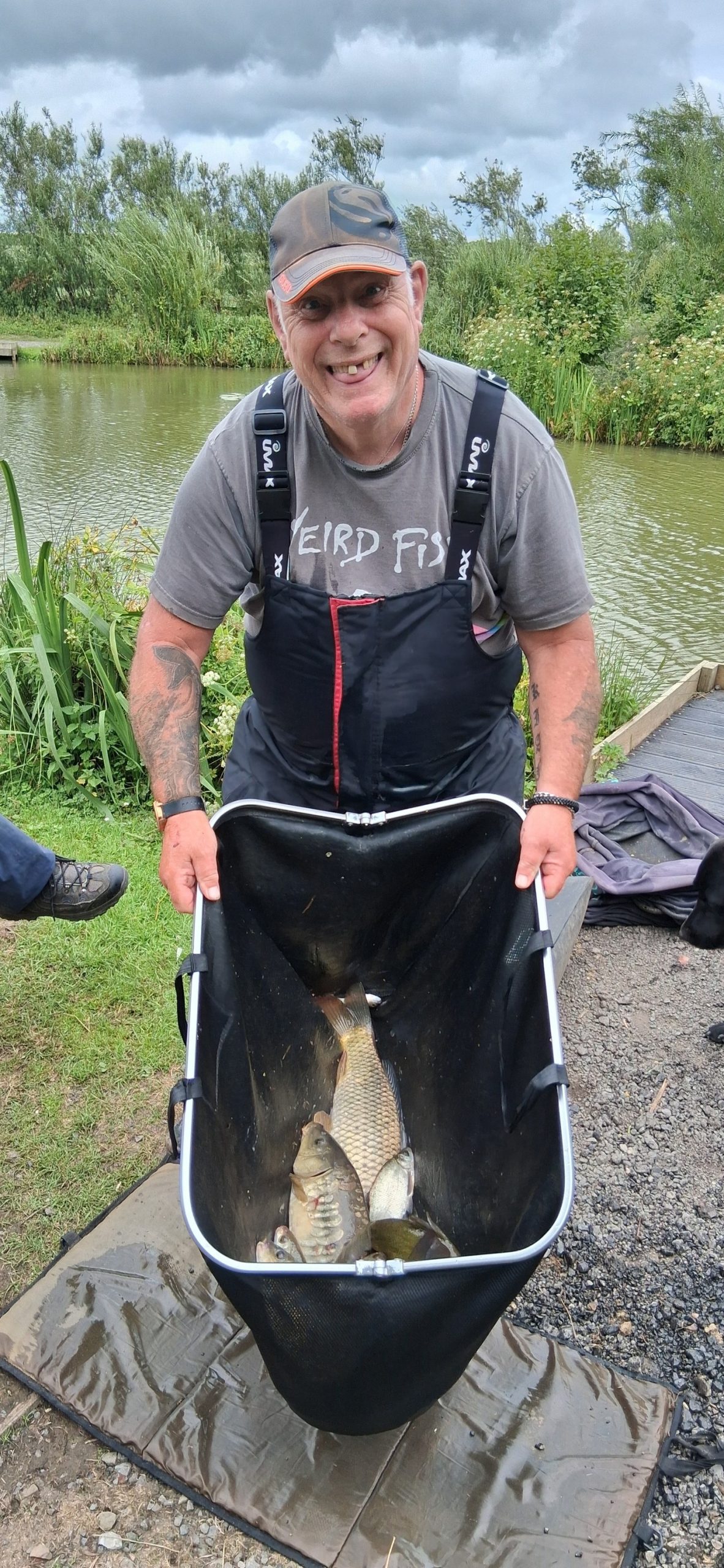
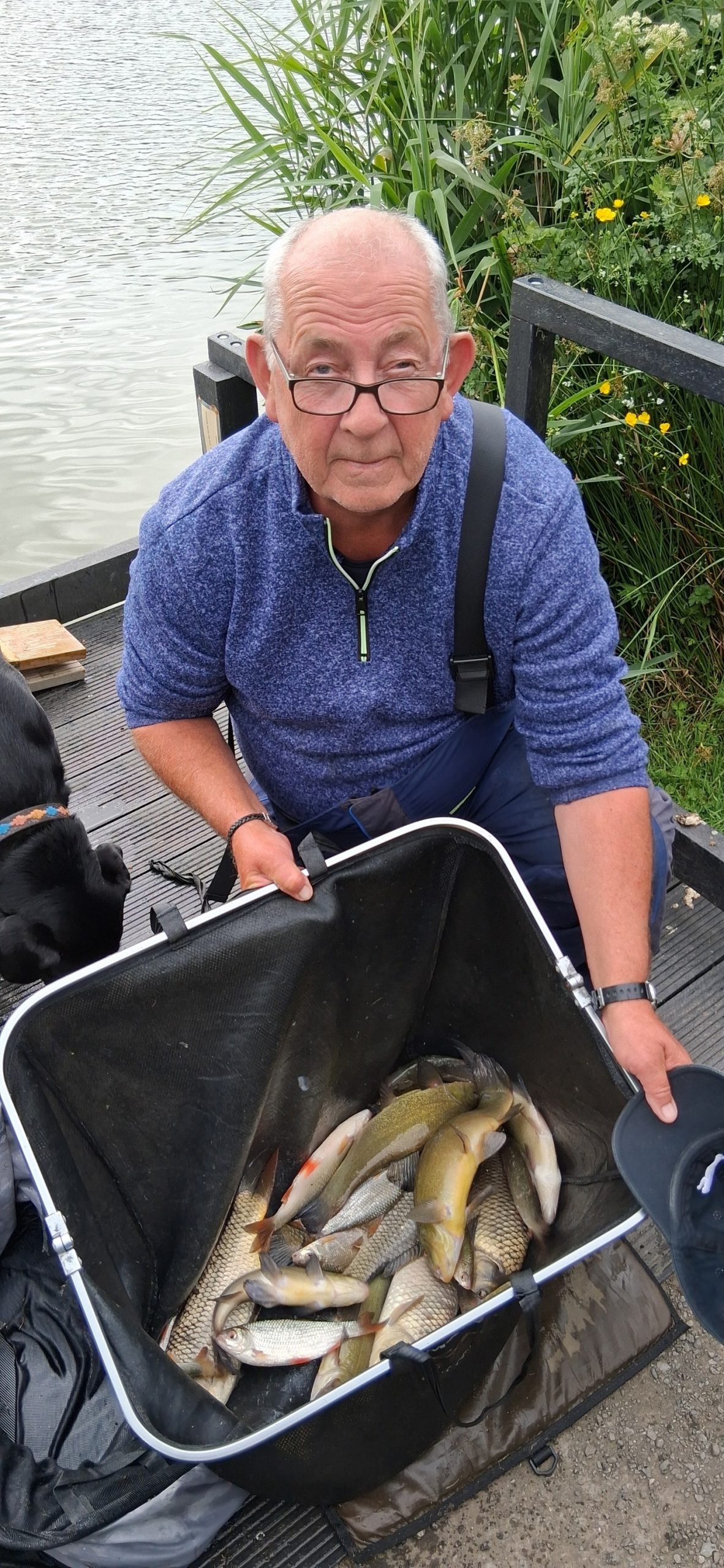

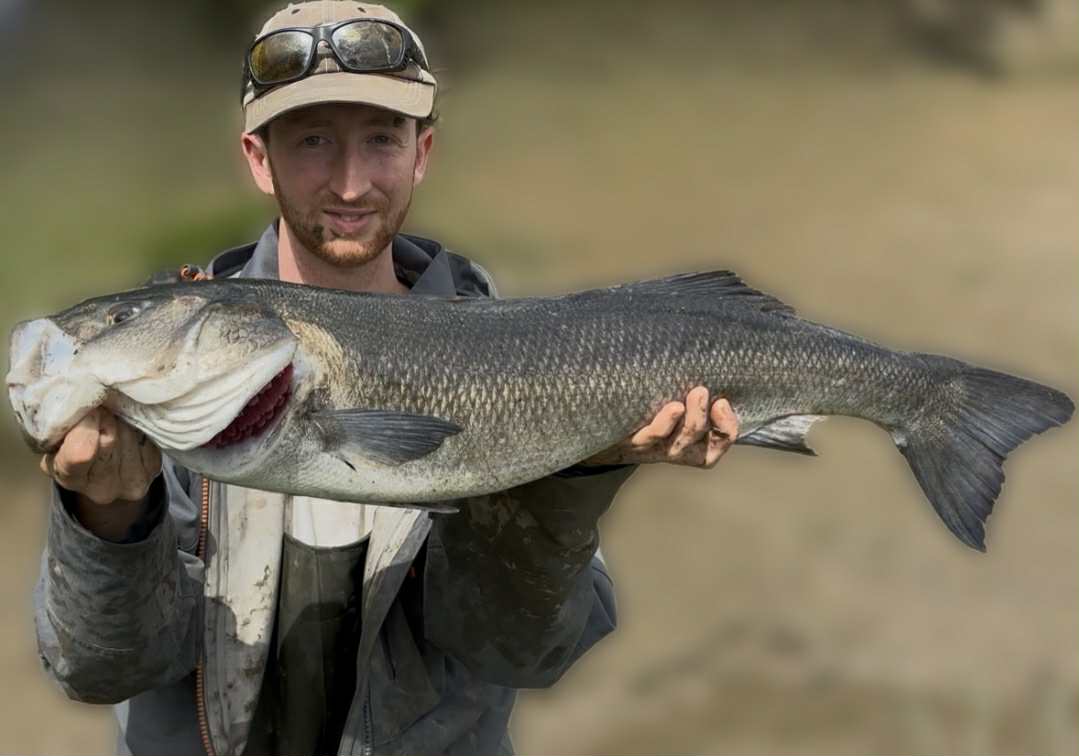
Seth Tuson tempted this fine bass of 72cm using a 4″ Easy Shiner lure. It is Seth’s best bass caught on a lure and boosts his total in Combe Martin SAC’s lure fishing league.
1st – Mark Drewer – 344.5cm
2nd – Seth Tuson – 330.5cm
3rd – Reece Woolgar – 263cm
4th – Ross Stanway – 176cm
5th – Robert Hurst – 121.5 cm
6th – Wayne Thomas – 53cm


It was with much anticipation that a motley crew of like minded anglers assembled at my place for breakfast, prior to annual cat fishing trip on carp and cat 2 at Elderado. This was to be our fifth year targeting the catfish on this prolific lake and we always have a lot of laughs with a few nice fish thrown in along the way.
Unfortunately Wayne Thomas couldn’t make it this year so Noel Jones readily agreed to take his place.
With the bacon and egg butties and copious amounts of tea and coffee consumed we set about allotting swims by pulling names out of a hat. Unfortunately for Johnny ‘Fat bloke’ Hughes he drew the short straw and had to fish with me!
This year we had been lucky with the weather. With the lake booked months in advance, it is always a worry but with hot and sunny conditions forecast for the 48 hours of fishing we had ahead of us, things looked good. I have always found found this to be good conditions for tempting our whiskered friends.
Arriving at the lake we noticed a few carp spawning which was not ideal. Hopefully our large baits and agricultural tackle needed to tame the large catfish that reside here , would put off any carp fancying a snack after their amorous endeavours.
Barrow loads of gear were quickly deposited in our allotted swims. Well, quickly might be a bit of an exaggeration for this mostly retired and less than spritely bunch of old duffers! Anyway, eventually we were all settled in our swims and sat back in the sunshine awaiting events.
It wasn’t long before I spied a bent rod across the water and Tony Ball was playing the first cat of the session. Only a kitten
at around 8 pounds but it was a good start and fair play to the old fella for thinking outside the box and trying out a float paternoster
fished with worms.
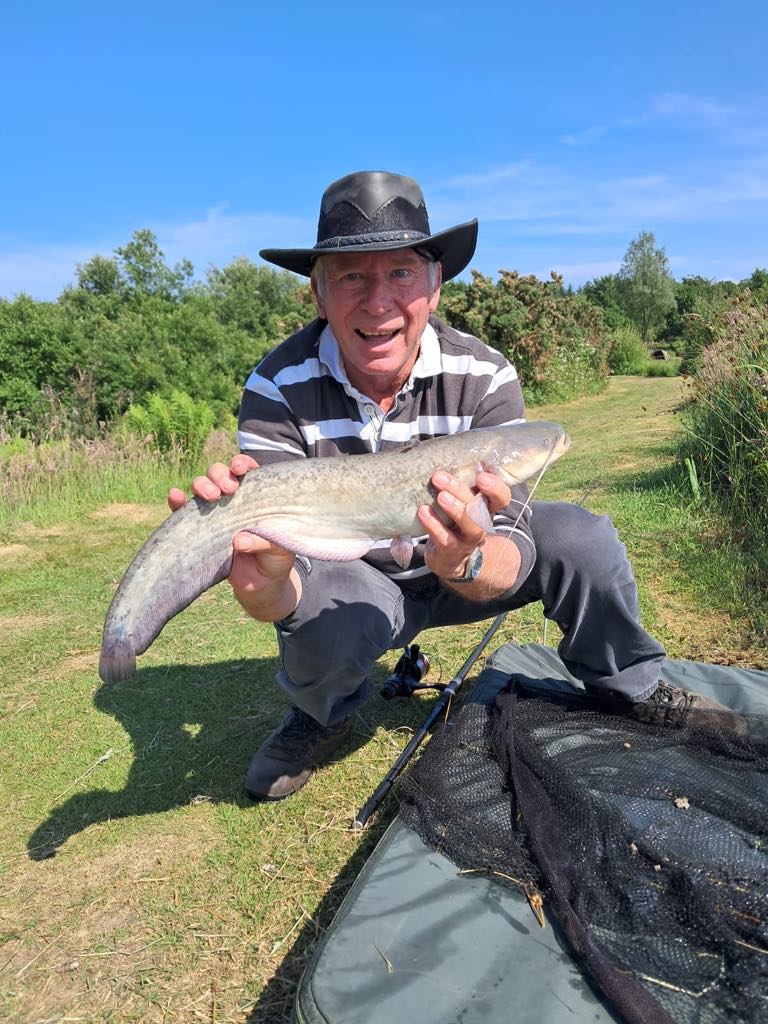
Soon after Alan Palmer also landed a Kitten of a similar size, this was closely followed by a 29 pounder also to Mr Palmer.
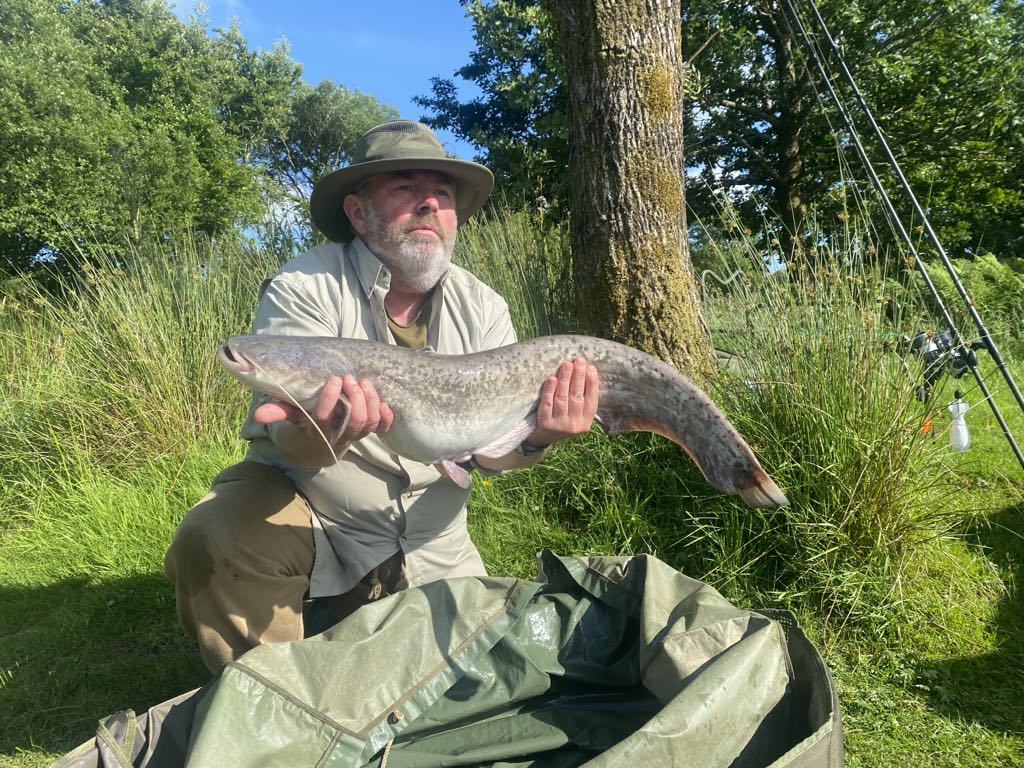
Things were looking good and got even better when my alarm sounded and I was suddenly attracted to something that was intent on pulling my arm off. The cats have got bigger and bigger, year on year in this lake and this was definitely one of the bigger ones! Bitter experience of lost fish making it to snags or taking me around islands have meant that I have upgraded the gear I have been using to try and tame these beasts. Despite now using 30lb line, 3 1/2lb test Armorlites and big pit reels the big ones still lead you a merry dance. This one was no exception and decided it wanted to visit Noel in the swim further up the lake to my left. Eventually it came around to my way of thinking and a nice cat of 40lb 8oz was juggled into
the net by Fatty Hughes.
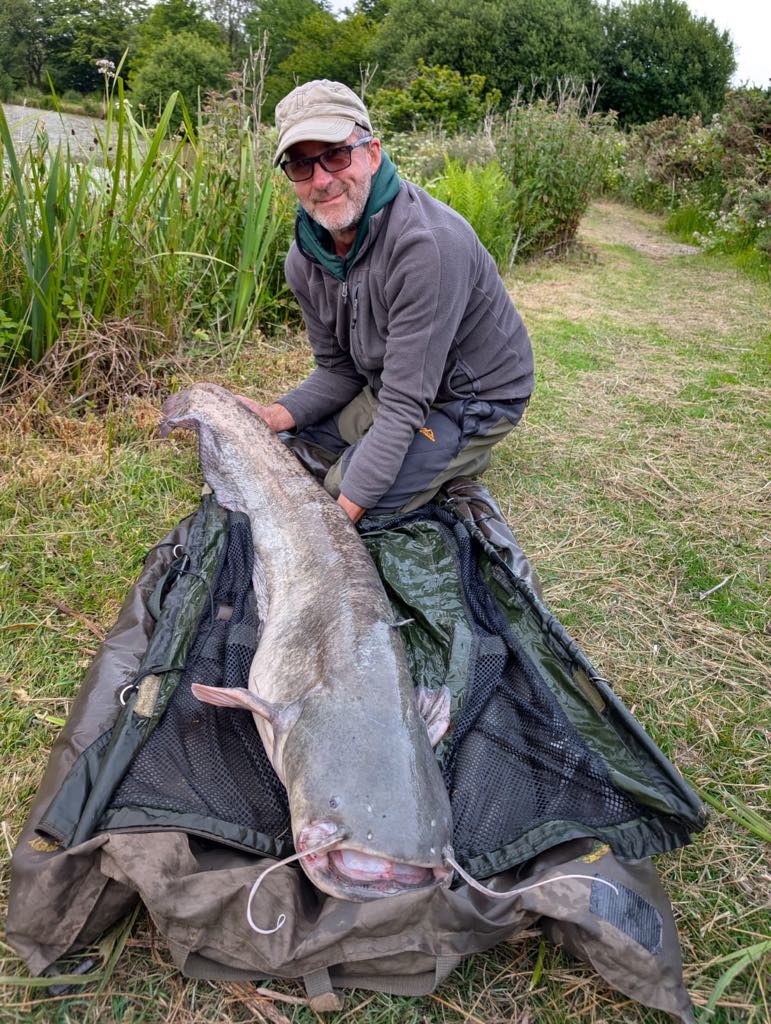
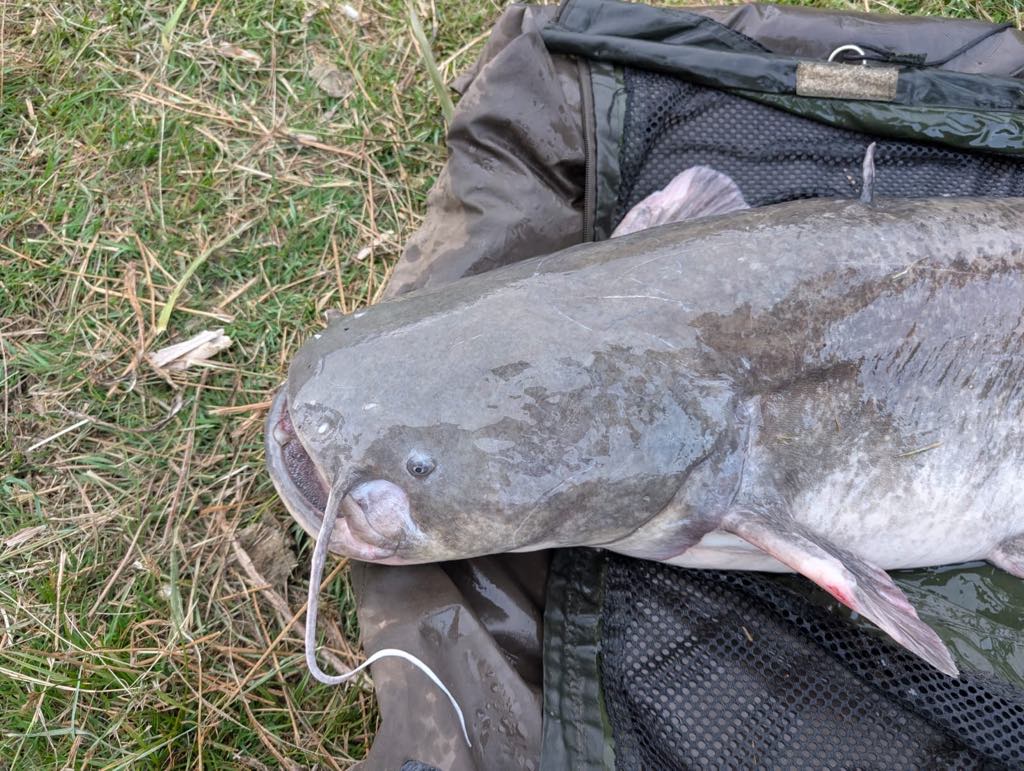
The action continued with Richard ’Bully’ Bull landing a 20.12.
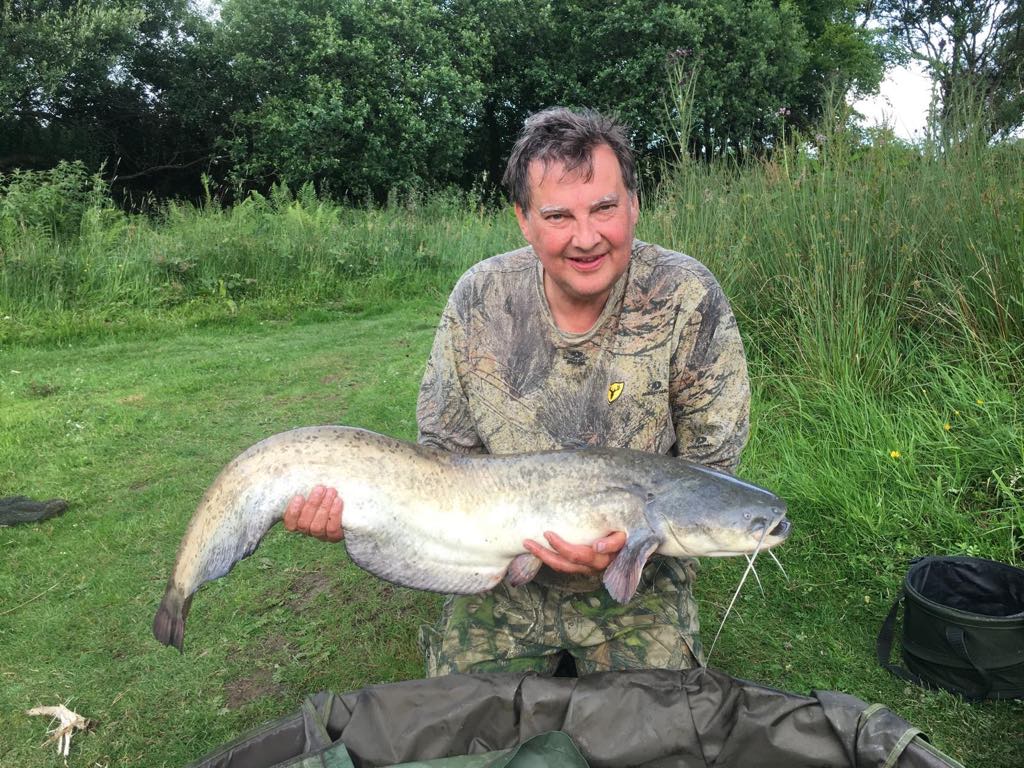
The cats were definitely on the munch and we were all expecting a busy night but apart from a couple of lost fish and a 15 for Bully it was relatively quiet. Oh, and Fatty Hughes had a micro cat on worms popped up to just under the surface.
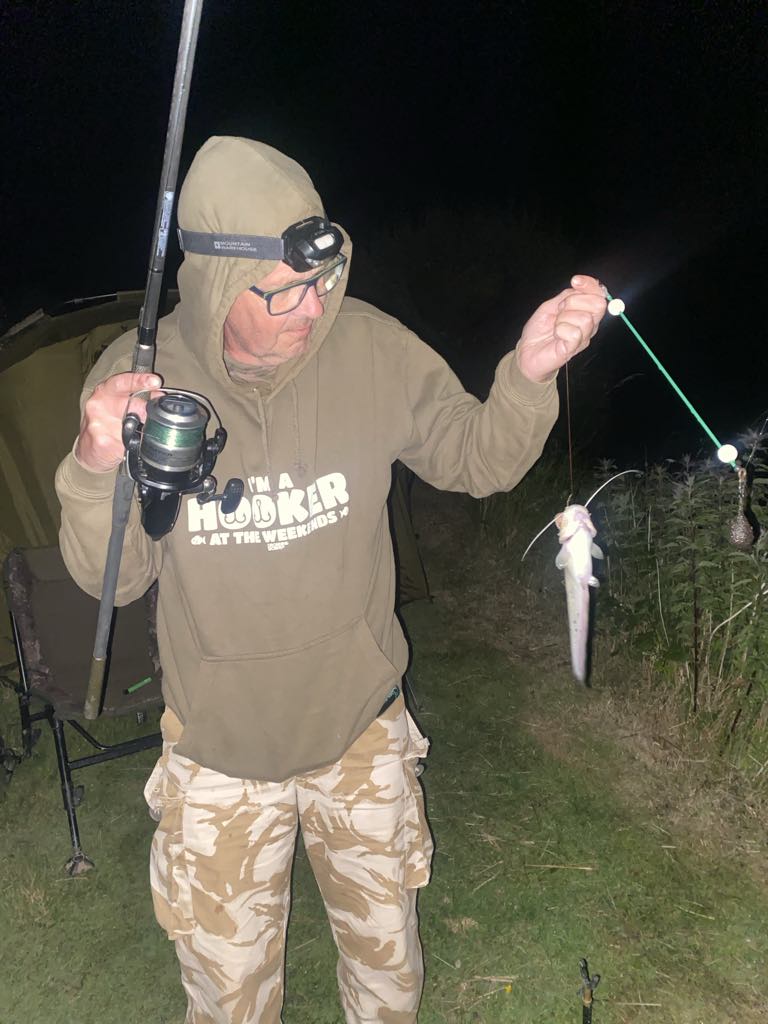
As the new day dawned, Noel was woken by lovely looking common carp that took a liking for a half tin of luncheon meat which was soon outgunned on the heavy gear and sent back on its merry way.
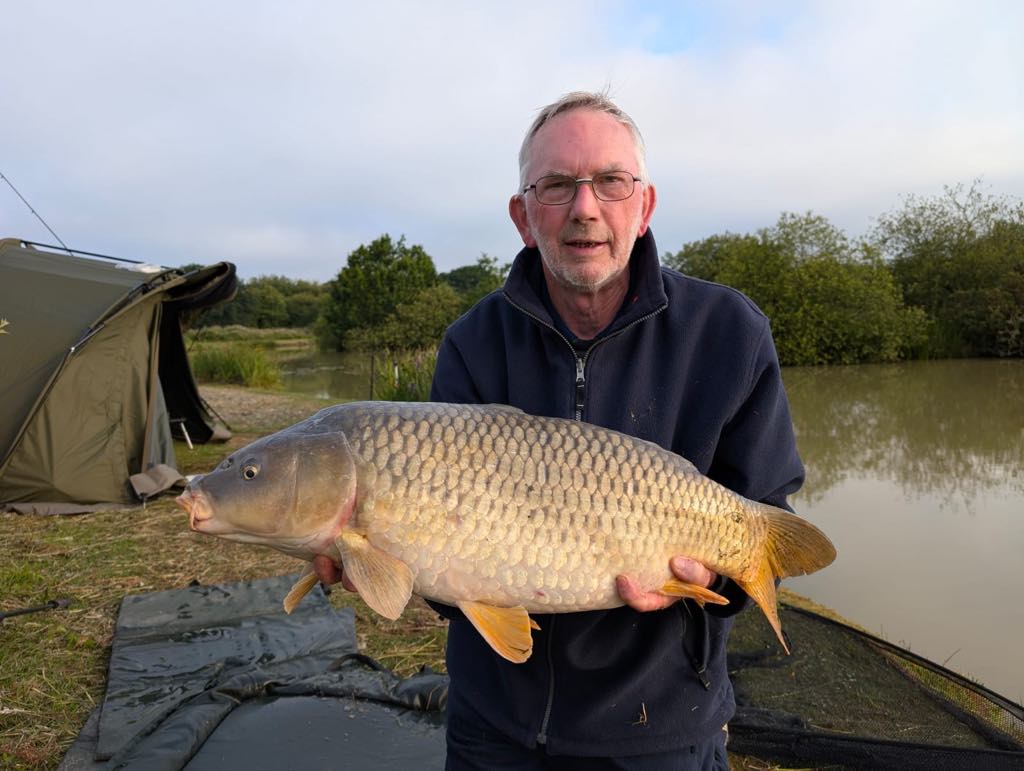
Father and son Team, Mitch and Ben Andrews had been quiet (at least fish wise up to this point) but this was about to change. Ben stole the show on day two with two nice fish of 30.08 and 32.14.
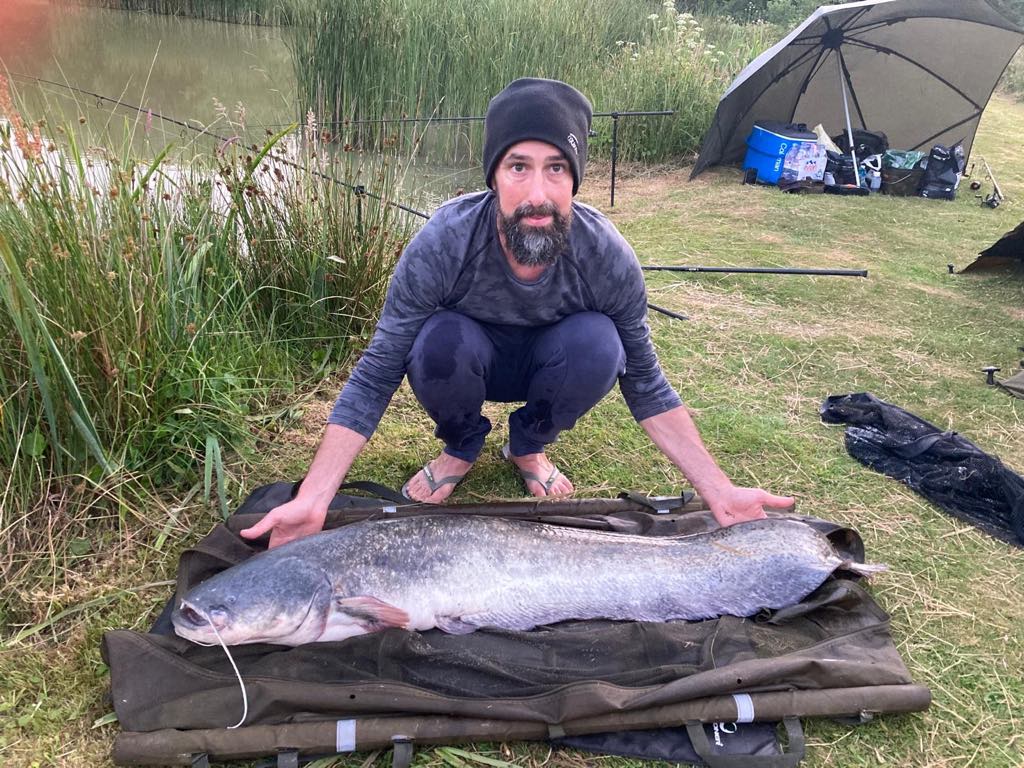

As the second night descend on us we could hear the call of a Nightjar nearby but Mitch spoilt the moment by declaring that it was in fact a farting Walrus.
Mitch has had some nice cats in the past but has not had the best of luck on our annual trips so we were all rooting for him as time was starting to run out on the session. Thankfully at 10.45 his bite alarm sounded and this time he wasn’t to be denied and after a spirited battle a 22 pounder was his.
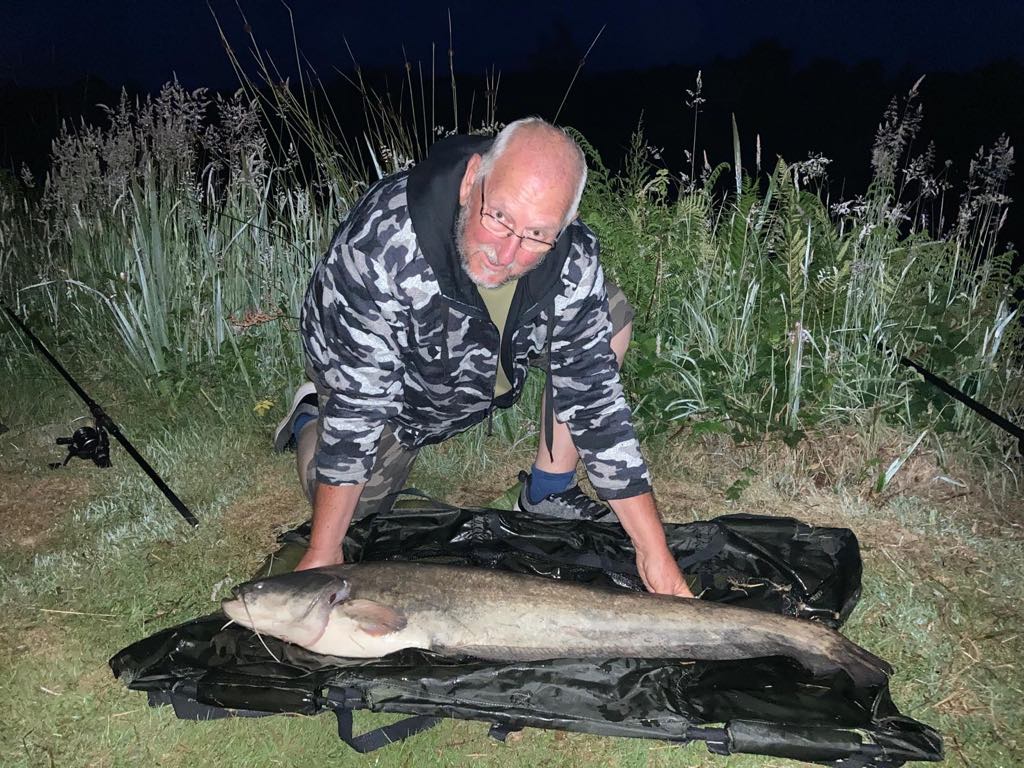
Several other cats were landed in the night including a 28 for Alan, a 27 for Ben and a 24 just before the first light for me.
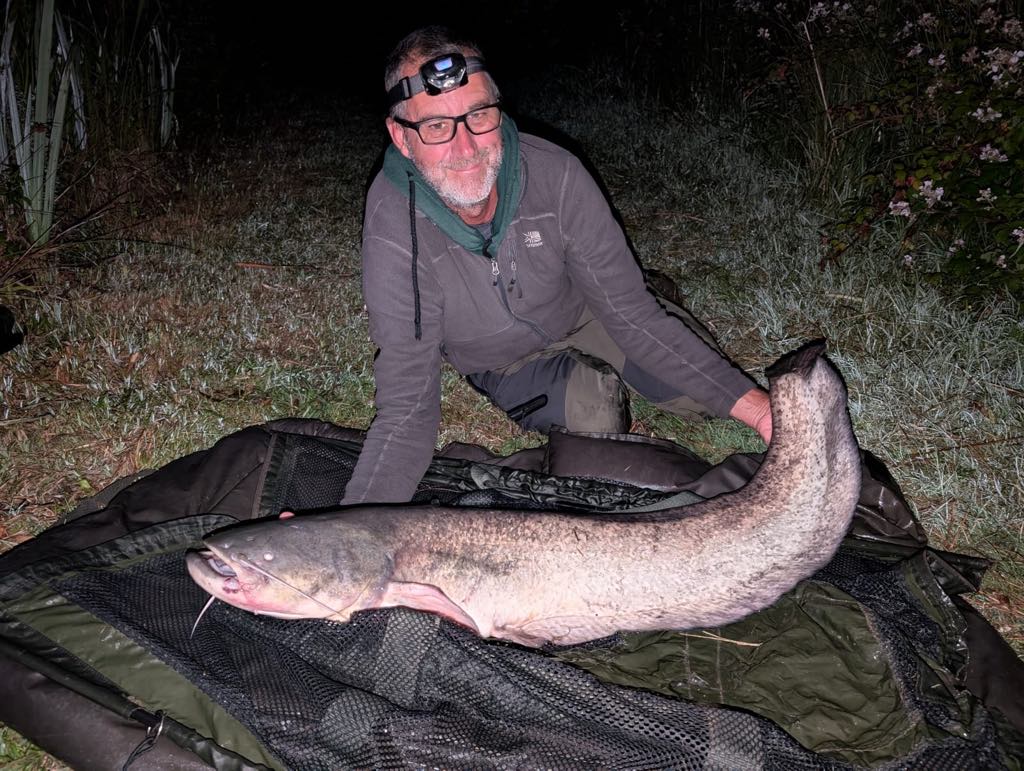
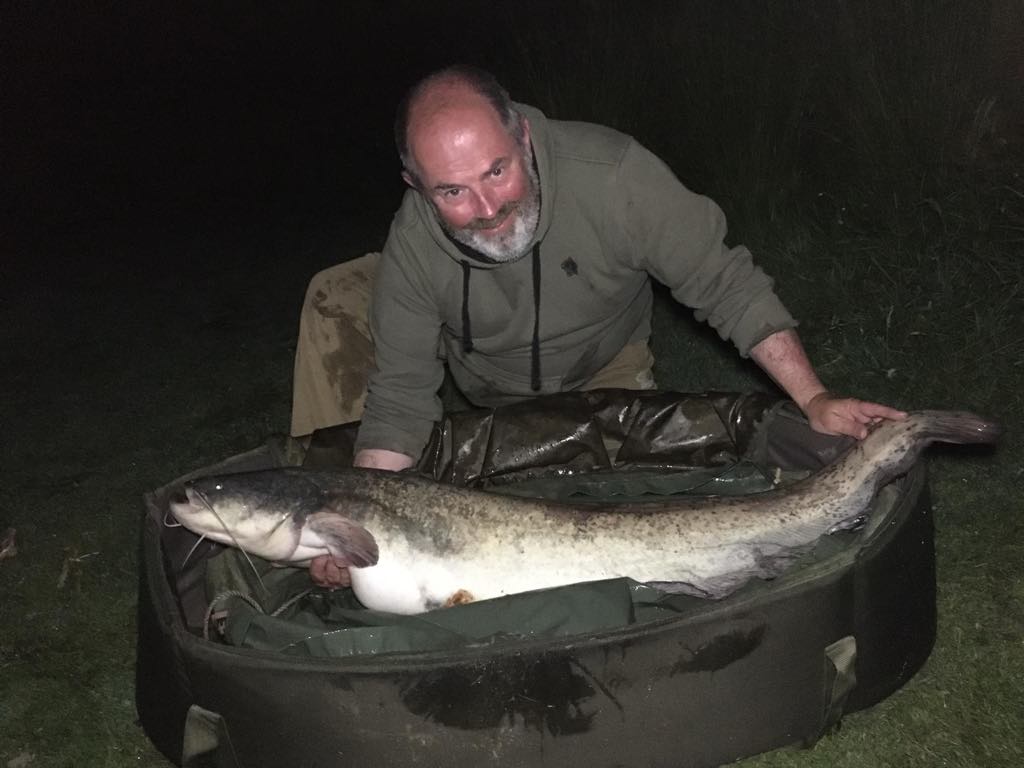
Fatty contributed to proceedings with another micro cat on worms.
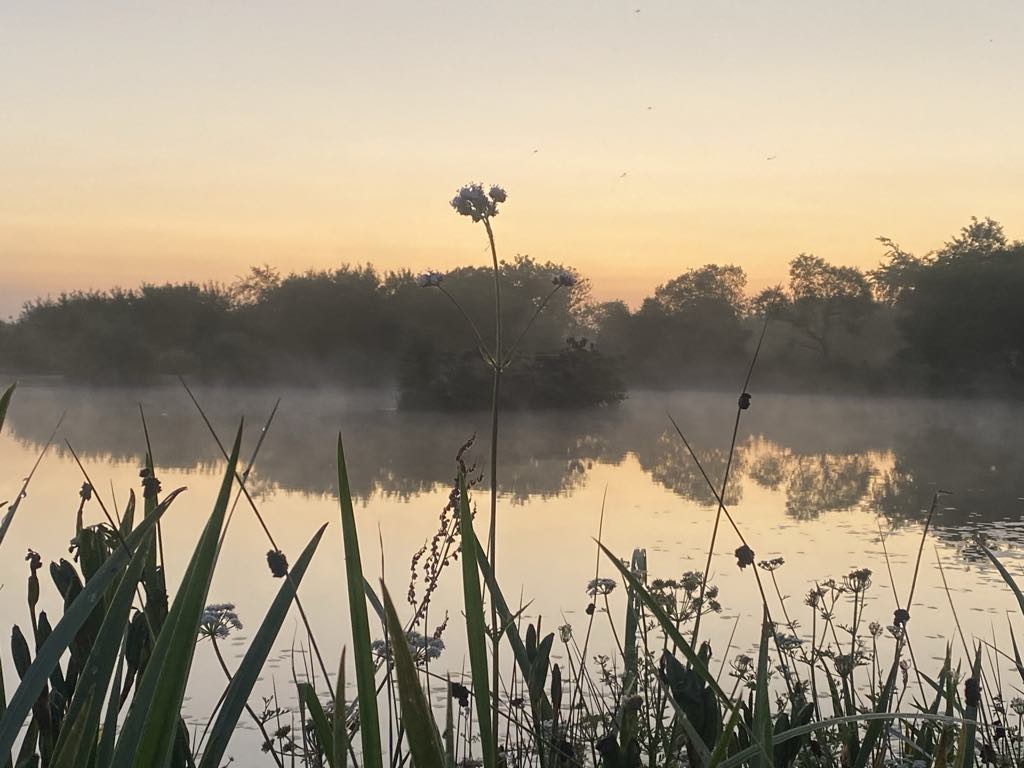
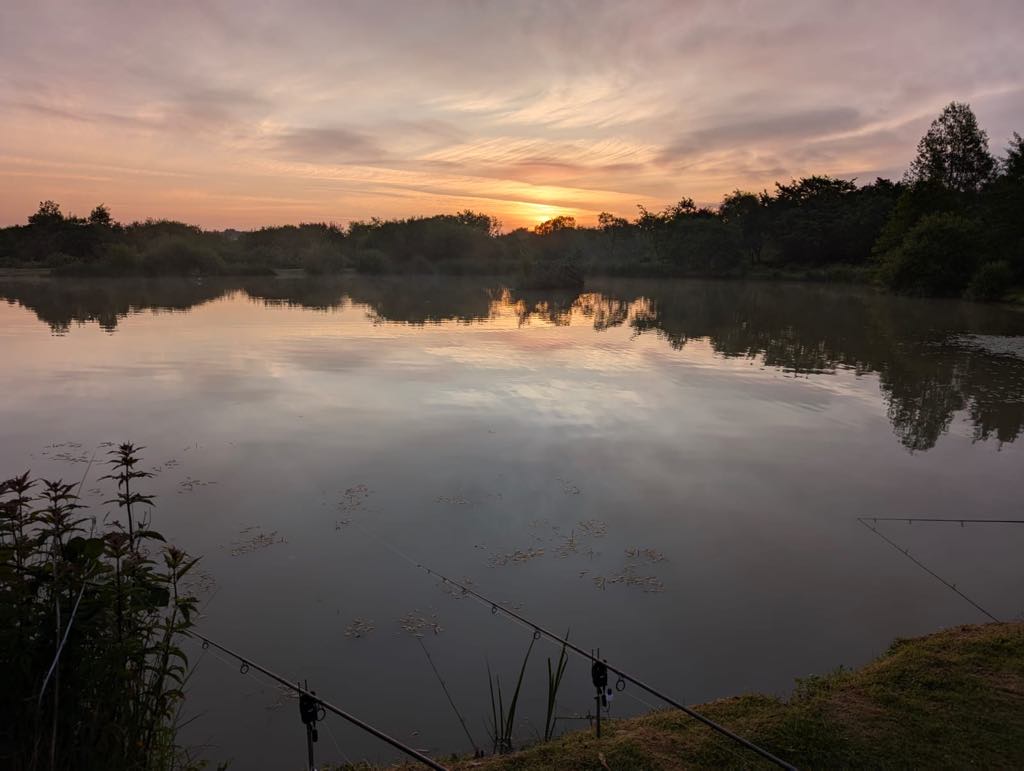
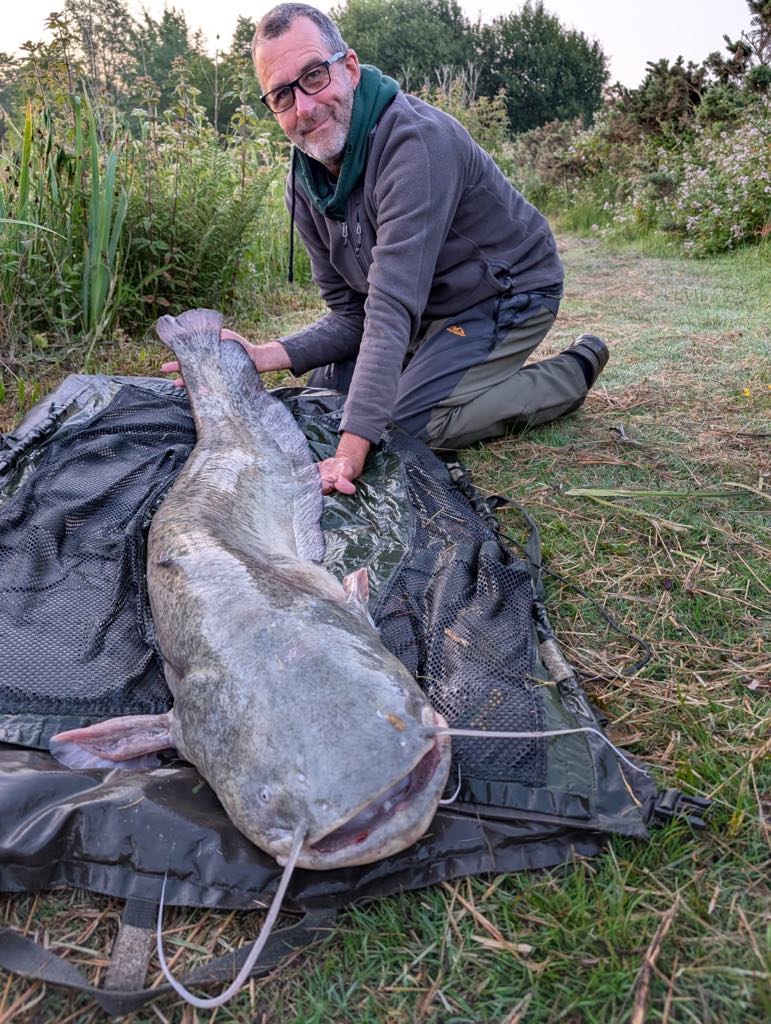
As the new day dawned with mist rising off the water my Alarm sounded for the last time and I was blessed with another 40 pounder to cap off what had been a fabulous trip. Unfortunately Elderado had a sting in its tail for poor Noel as despite the heavy gear he was using and not fishing too close to the snags a big fish managed to get into some sunken branches on the far bank just as he was about to pack up.
Still it was a great trip and fun was had by the old fogeys and a fitting end to our Elderado adventures. I say end as it is rumoured that it will not be available for day tickets next year. I had better make hay…
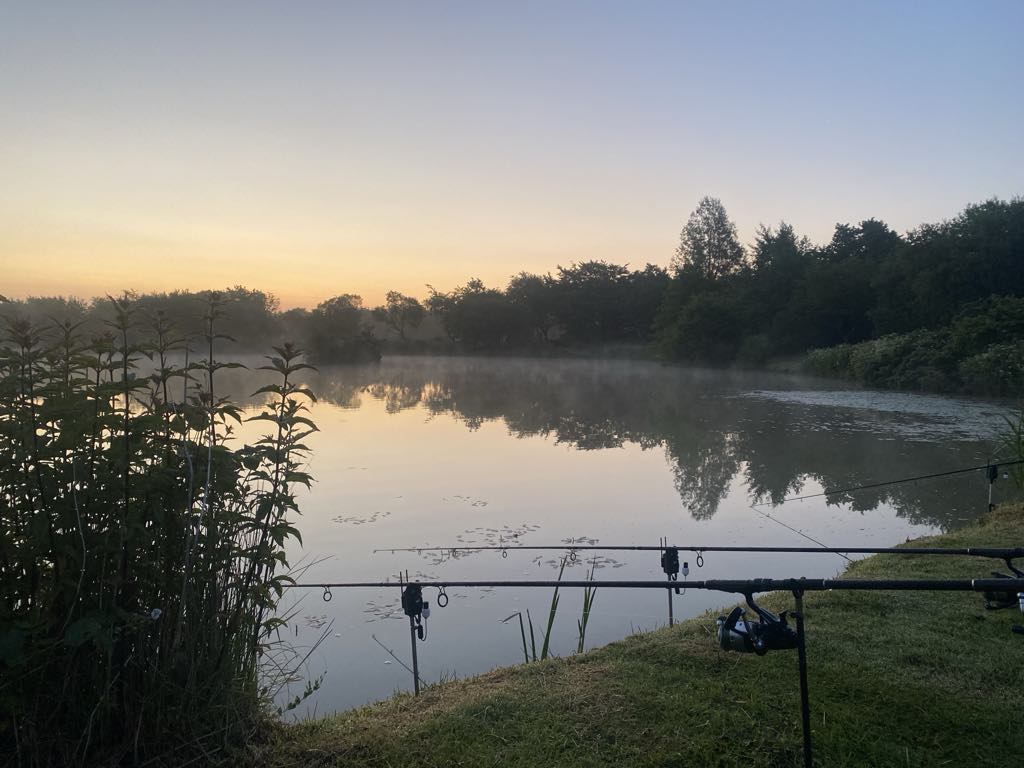

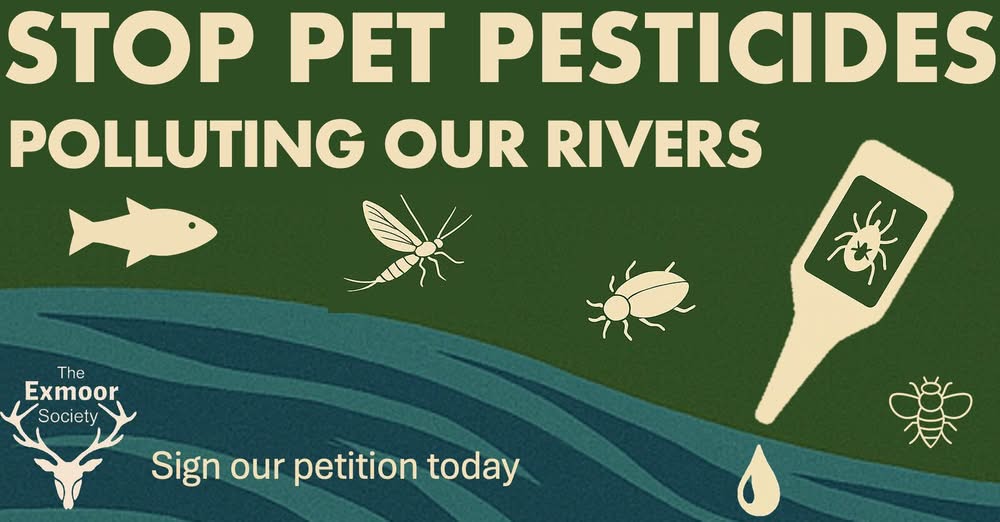
🐾 MILLIONS of doses of pet flea and tick treatments containing imidacloprid and fipronil are sold without prescription in the UK every year. These powerful insecticides — which have been restricted in farming for the past 7 years — are freely available in supermarkets and online to use on pets and are contaminating our rivers, harming wildlife – and us.
Recent studies show they’re found in 100% of tested UK urban streams, harming the very species our ecosystems rely on — mayflies, dragonflies, beetles, and the birds and fish that depend on them.
This is chemical pollution on a national scale, and it could be stopped now…
✍️ PLEASE SIGN THE PETITION
To: Baroness Hayman, Department for Environment, Food and Rural Affairs
Call on the UK Government to end the non-veterinary sale of imidacloprid and fipronil pet flea and tick treatments
❗ THE PROBLEM
– Imidacloprid and fipronil are deadly to aquatic invertebrates even in minute quantities.
– These pesticides enter water systems when washed from treated pets, from their bedding, or even our hands
– One treated dog can contaminate 5 million litres of water above safe levels.
– Yet these treatments are sold without guidance, warning, or oversight.
🚫 WHAT WE’RE ASKING
We urge the UK Government to:
1. Ban the sale of imidacloprid and fipronil-based pet parasite treatments except by veterinary prescription
2. Immediately improve warning labels to highlight the environmental harm of these products
3. Support research into safer, eco-friendly alternatives for parasite control
✍️ PLEASE SIGN THE PETITION AND SHARE THIS WITH AS MANY OTHERS AS POSSIBLE
Let’s protect our rivers, wildlife, and national parks!
________________________________________________________________
About the Exmoor Society
The Exmoor Society is a registered charity working to protect and promote the unique landscape, wildlife and communities of Exmoor. We believe the environment and the economy must go hand in hand — and that protecting nature starts with knowledge, action and partnership.
The season certainly seem to be drifting by on life’s current in an ever increasing speed and it seems only a short time since I was last at the Arundell for the grayling day back in early March. https://www.northdevonanglingnews.co.uk/2025/03/06/arundell-spring-grayling-day/
Over three months later and the grayling closed season has passed and summer sea trout are ascending the rivers of the Tamar catchment. The Arundell boasts twenty miles of water amidst lush landscapes of the Devon and Cornish borders. I had arranged a day’s fishing with my good friend Jeff Pearce and had arranged to meet at the Arundell tackle shop for 9:00am.
Traffic at Bideford delayed my journey and it was 9:30am before I arrived and apologised for my lateness. Jeff had enjoyed chatting with fellow fishing guests and James Christoforou who is the venues head of Fishing.
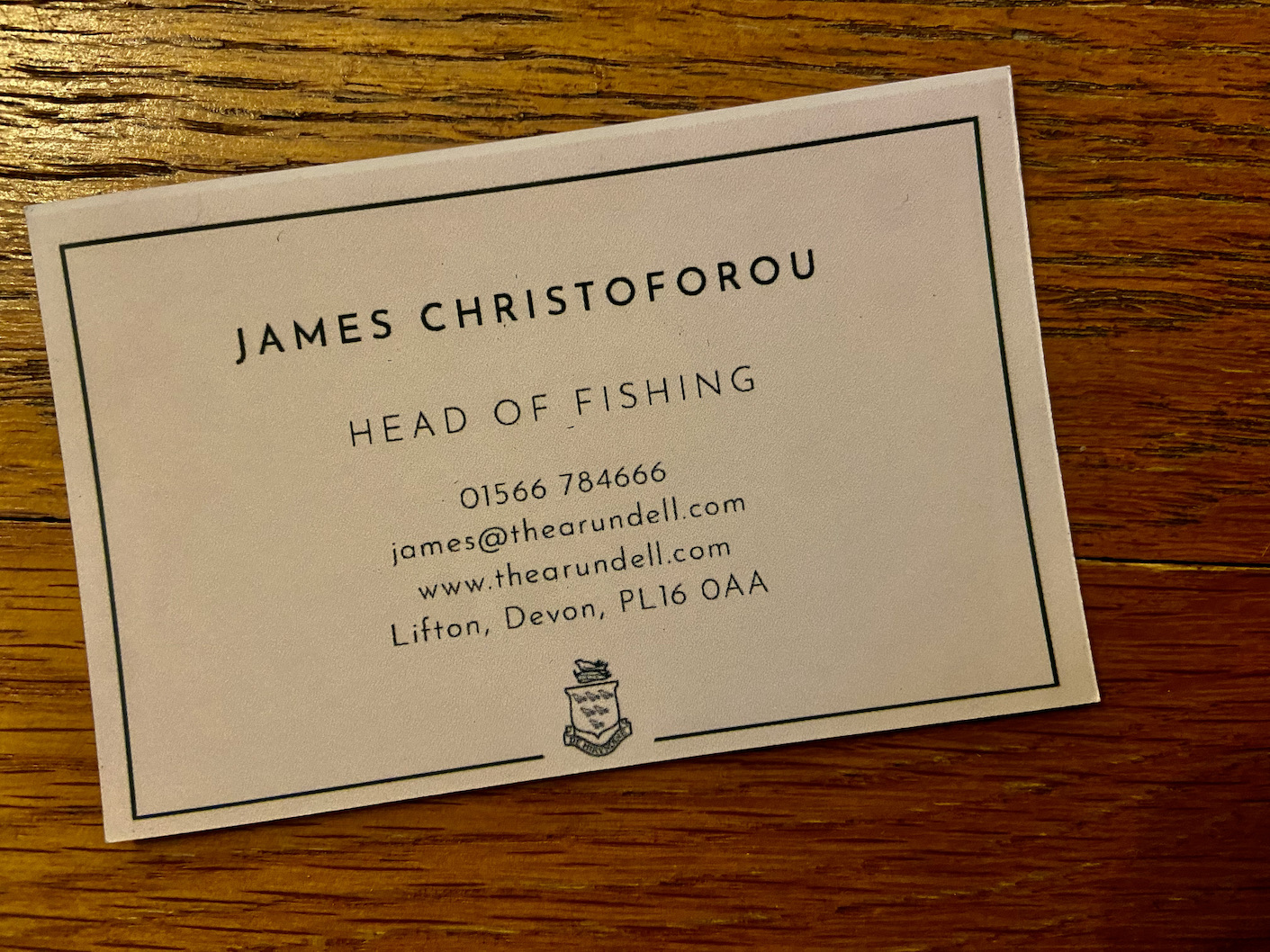
James is a breath of fresh air with an abundance of passion and optimism befitting an angler from a younger generation. James talked of the recent upturn in fishing in the rivers following a good summer spate with good numbers of sea trout showing along with a few salmon. These migratory visitors really are the icing on the cake with abundant wild brown trout and some stunning grayling providing consistent opportunity’s for anglers.
It is always well worth listening carefully to advice from experienced local anglers and James certainly knows the hotels waters intimately explaining to Jeff and I where to fish and suggesting which flies to use and how to fish them.
Jeff is a keen exponent of nymph fishing and engaged in an in depth discussion with James delving into the intricacies of fly design. Like many other anglers I know including myself he carries an extensive selection of fly patterns yet in reality only fishes with a tiny proportion of them. My own interpretation of the discussion is to some extent that there is some basis in certain flies working well on specific rivers. This could be in part be due to anglers following trends and traditions. It is also likely that certain colours are more visible in certain tinges of water colour. The weight of a nymph is undoubtedly vital in ensuring that a fly gets down to where the fish are so the stronger and deeper the pool the heavier the fly needs to be. So the perfect nymph for the Arundell waters is perhaps a tungsten silver headed jig style with black body and sprinkling of silver flashy sparkle.
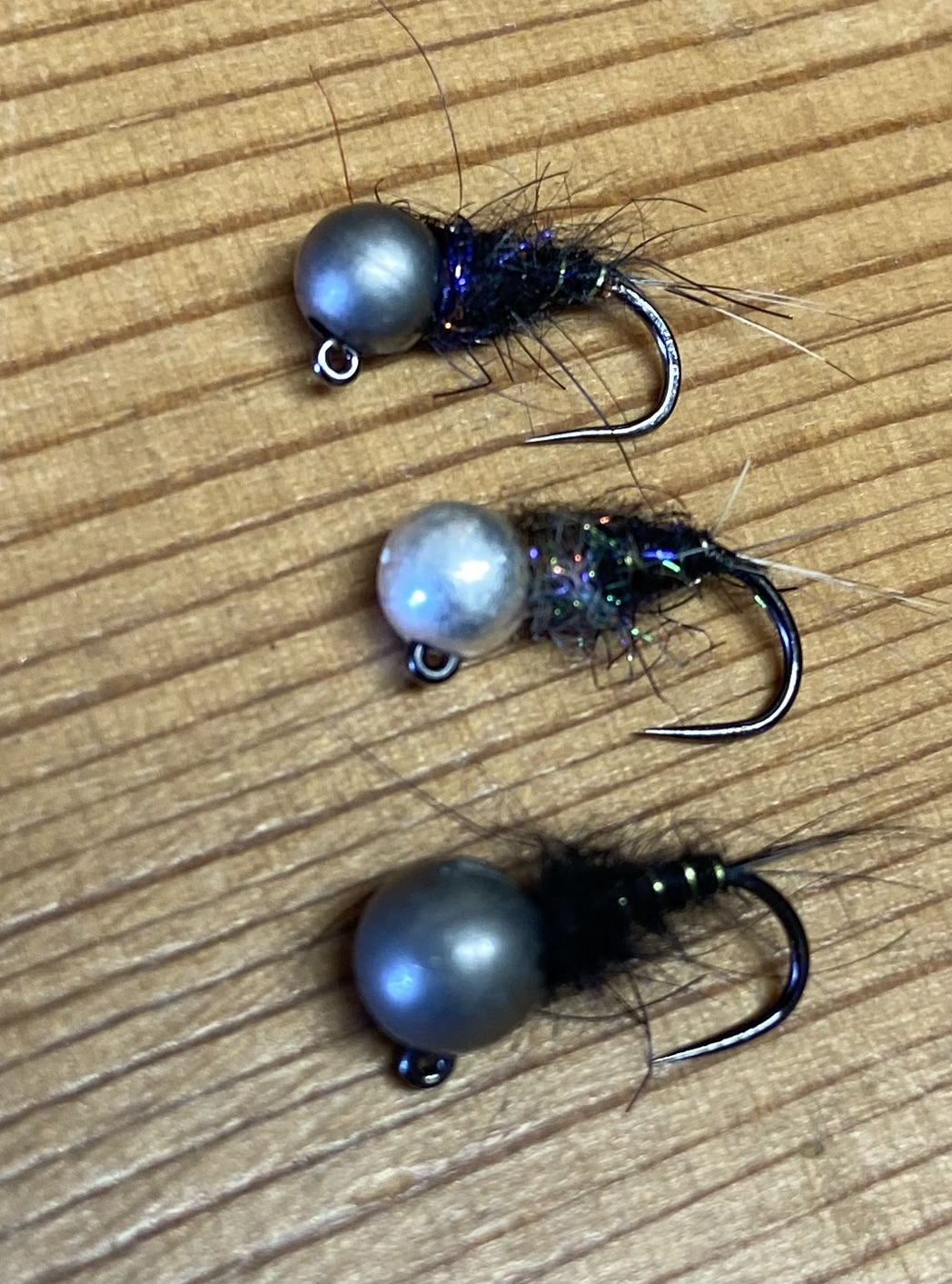
It was late morning by the time we actually arrived at the waters edge keen to start exploring the deep pools and runs. We both carried two rods one set up with a dry fly and the other with a nymphing set up.
We started fishing on Beat 2 and Bridge Pool where Jeff commenced the days quest drifting his team of nymphs slow and deep as a rather nonchalant duck observed proceedings.
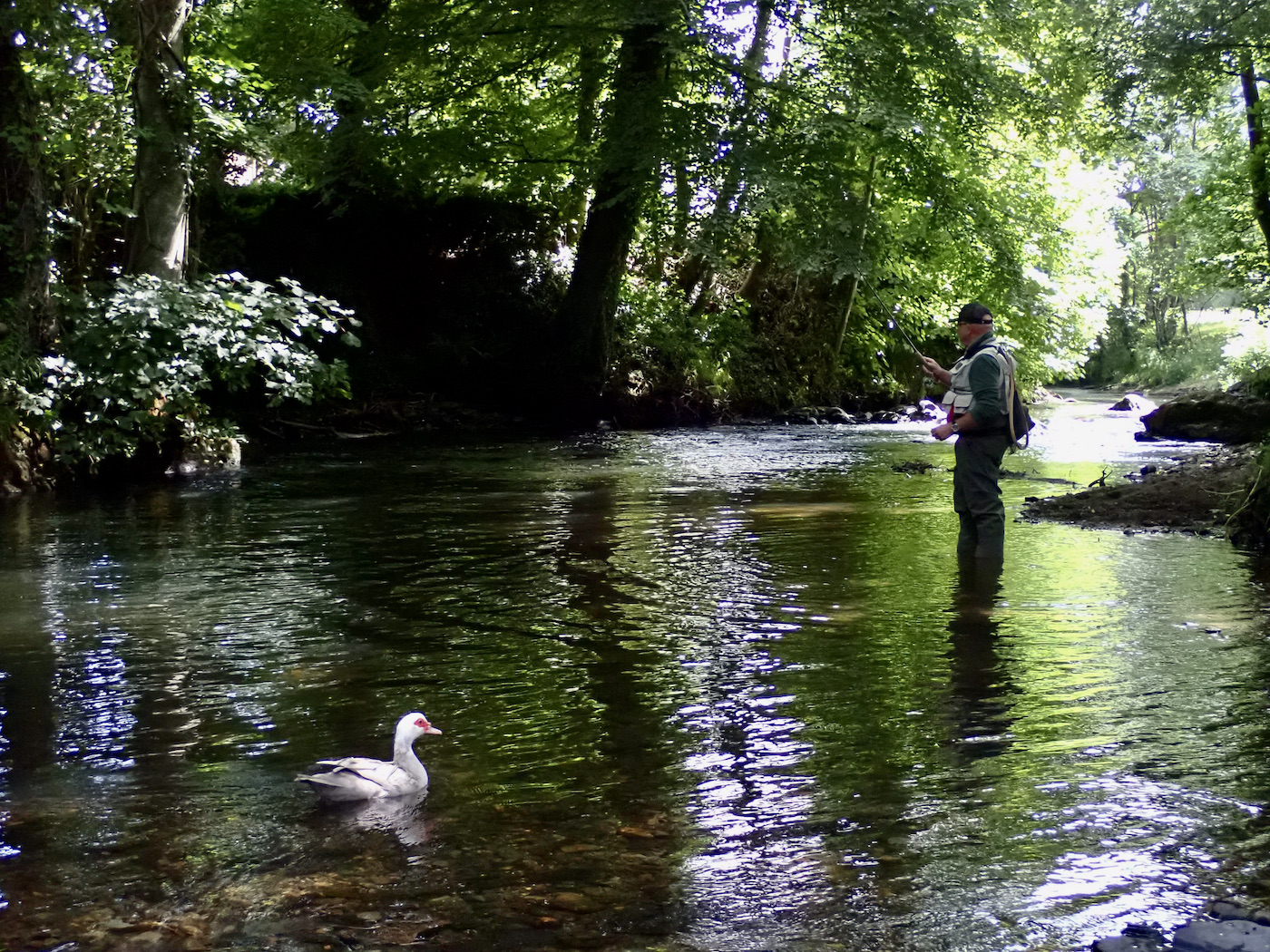
The lush green foliage of late June hung over the river its course carved through rocky bed rock over thousands of years. As I often say each river has its own unique character and the River Lyd is undoubtedly one of the West Country’s finest and after recent rainfall to flush sediment its waters seemed to be in sparkling health.

BB that great Countryside Writers Children’s Book ‘The Little Grey Men’ is a classic tome that captures the magic of a rivers journey and the shaded waters of the River Lyd somehow resonated within the pages of the book. This morning could easily have been a day BB describes “ After a soft grey morning, the sun had slowly broken through the clouds, and every blackbird and thrush in Lucking’s Meadow began to warble and tune up; the first opening bars of a great symphony in praise of life”. My ponderings on gnomes dwelling in the shady banks of the River Lyd are undoubtedly deluded for BB states “ For secrecy was of utmost importance, especially in these modern days when discovery would mean the end of everything. Why these little creatures had survived for so long is puzzling, because though they lived in this rural countryside, it was by no means ‘wild’ in the sense that some parts of Devon and Cornwall are wild, and there are, to my knowledge, no gnomes left now in either of these last two localities, though I understand they are still to be found in some parts of Ireland”.
We fished carefully up through deep shady pools that hid their secrets as sunlight broke through the vibrant green canopy of midsummer. We were both using bright indicators to suspend our nymphs to just trip the riverbed. This was not traditional fly fishing and the purist would certainly not approve. We are going through a revolution in fly fishing at the moment as technics from across the wider world are embraced by a younger generation who push the boundaries and break down the barriers between disciplines.
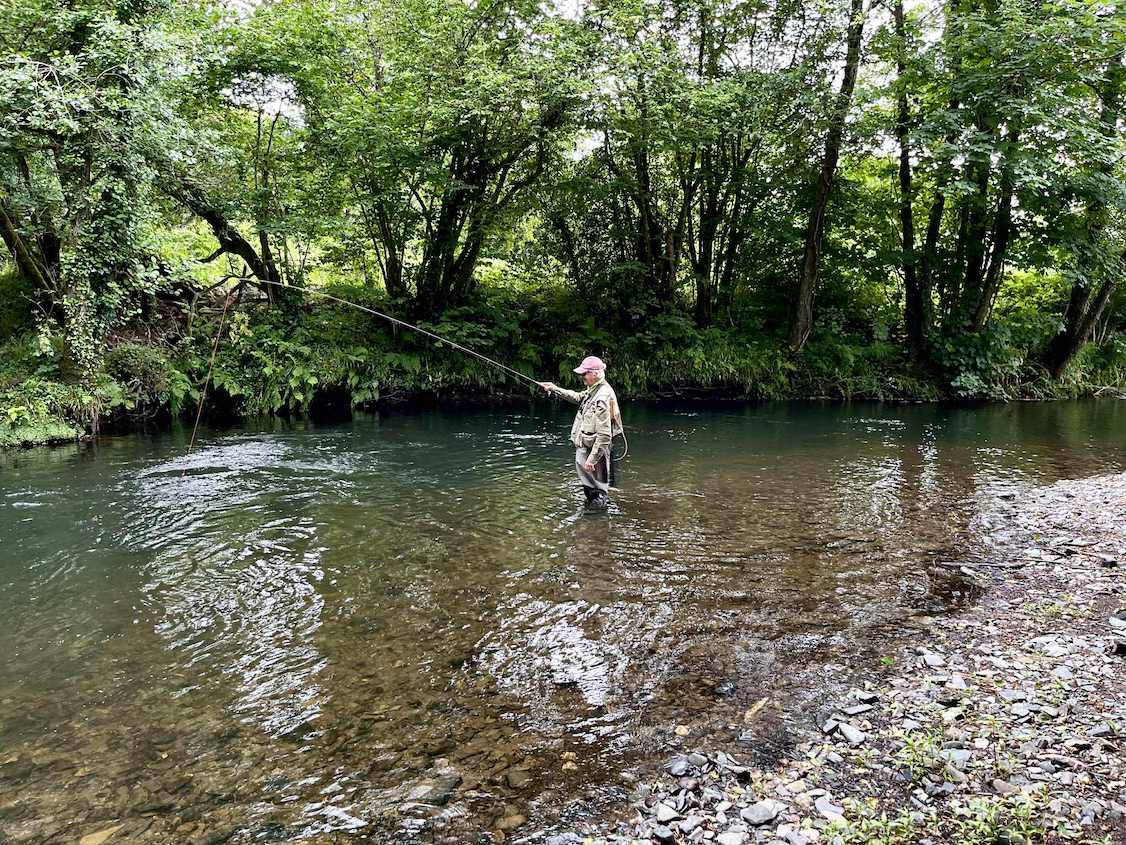
Watching our bright indicators drift slowly through deep calm pools is little different to trotting with a float and what’s wrong with that?
There is no doubt that catching on an upstream dry fly is more satisfying and that delectable moment of deception is one to savour. However life is short and in these modern times if we want a younger generation to embrace the sport then perhaps we have to accept a wider range of tactics and values. It is perhaps possible to draw comparison with today’s cricket scene. The traditionalist will always extol proper Test match cricket; five days of endeavours to be savoured and analysed. A younger generation will perhaps prefer the wham bam thrust of 20/20 cricket that is all over in just a few hours.
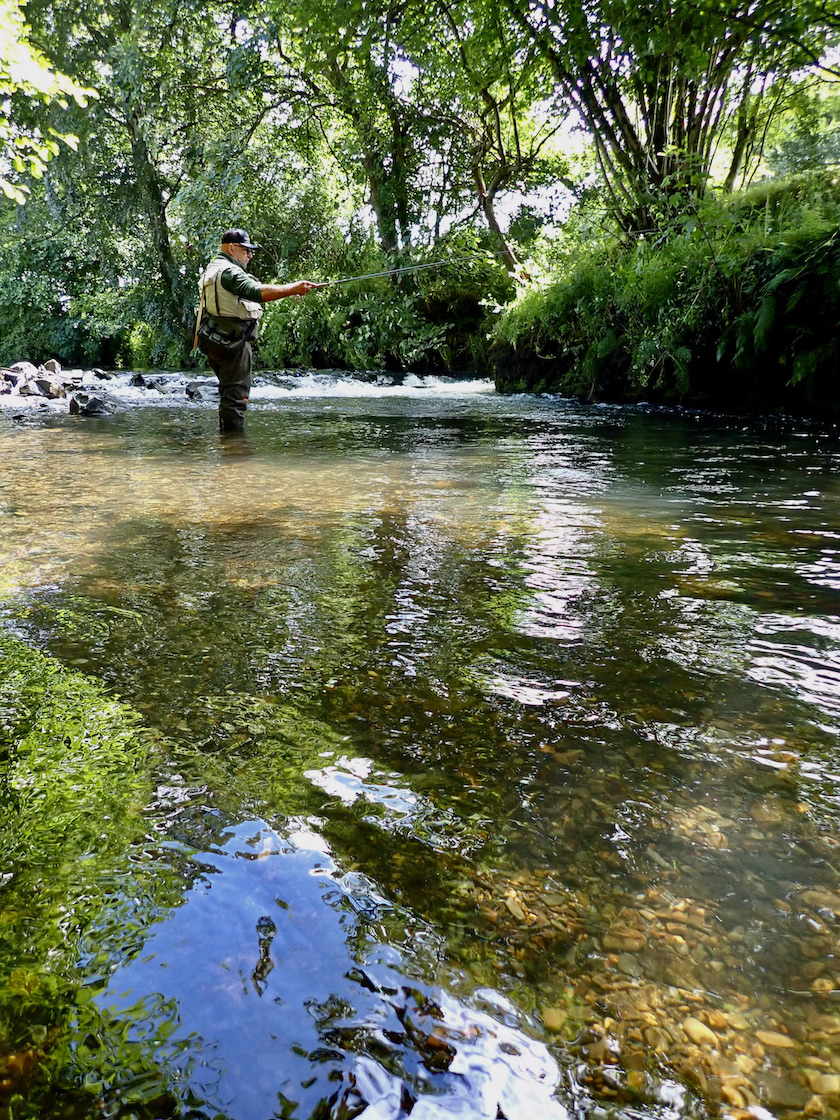
Jeff was first to connect and I watched as a sea trout gyrated in the strong current as it was persuaded to the waiting net. The silver flanks glistened as we admired its beauty before slipping it back into the cool waters.
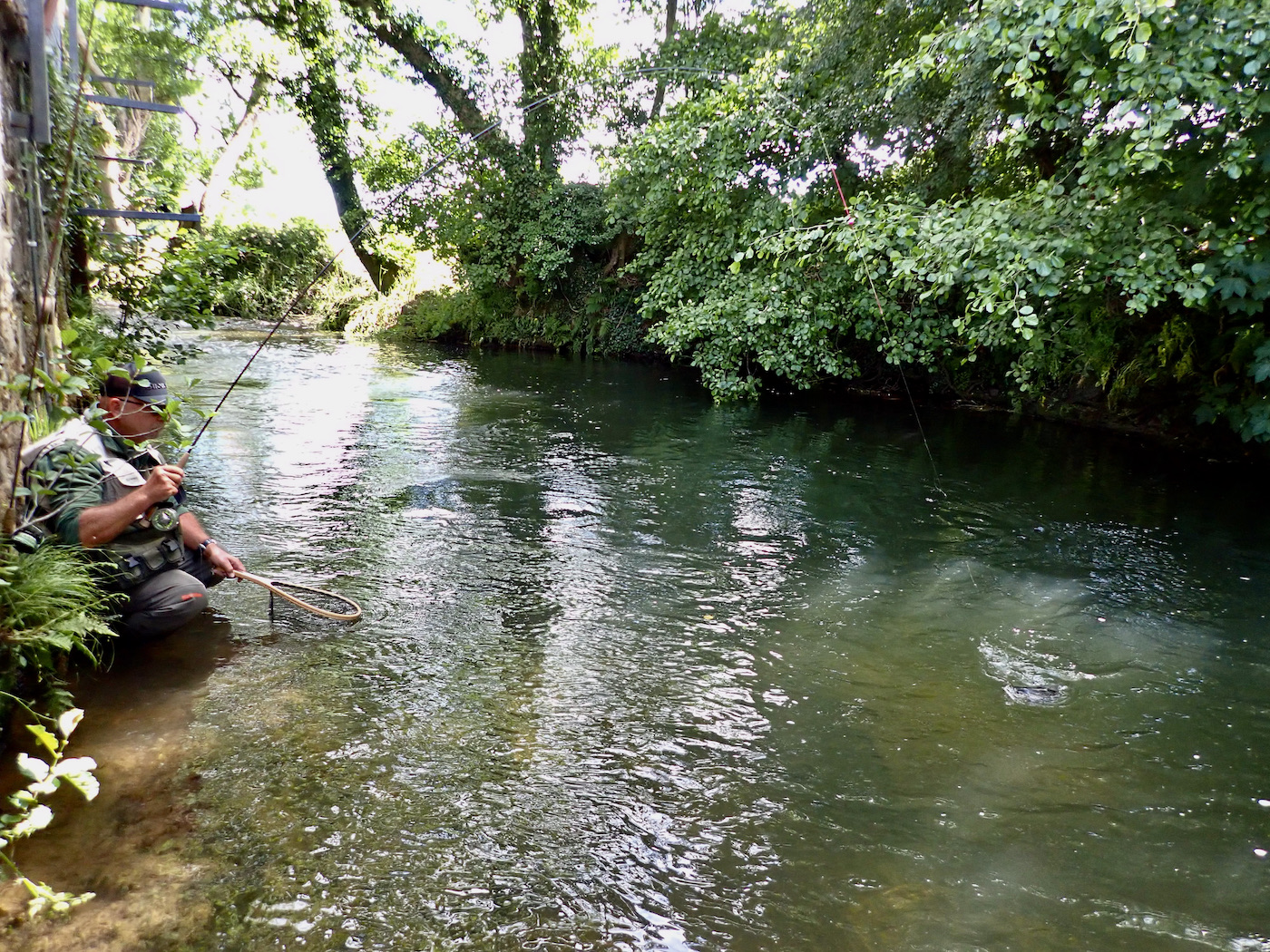
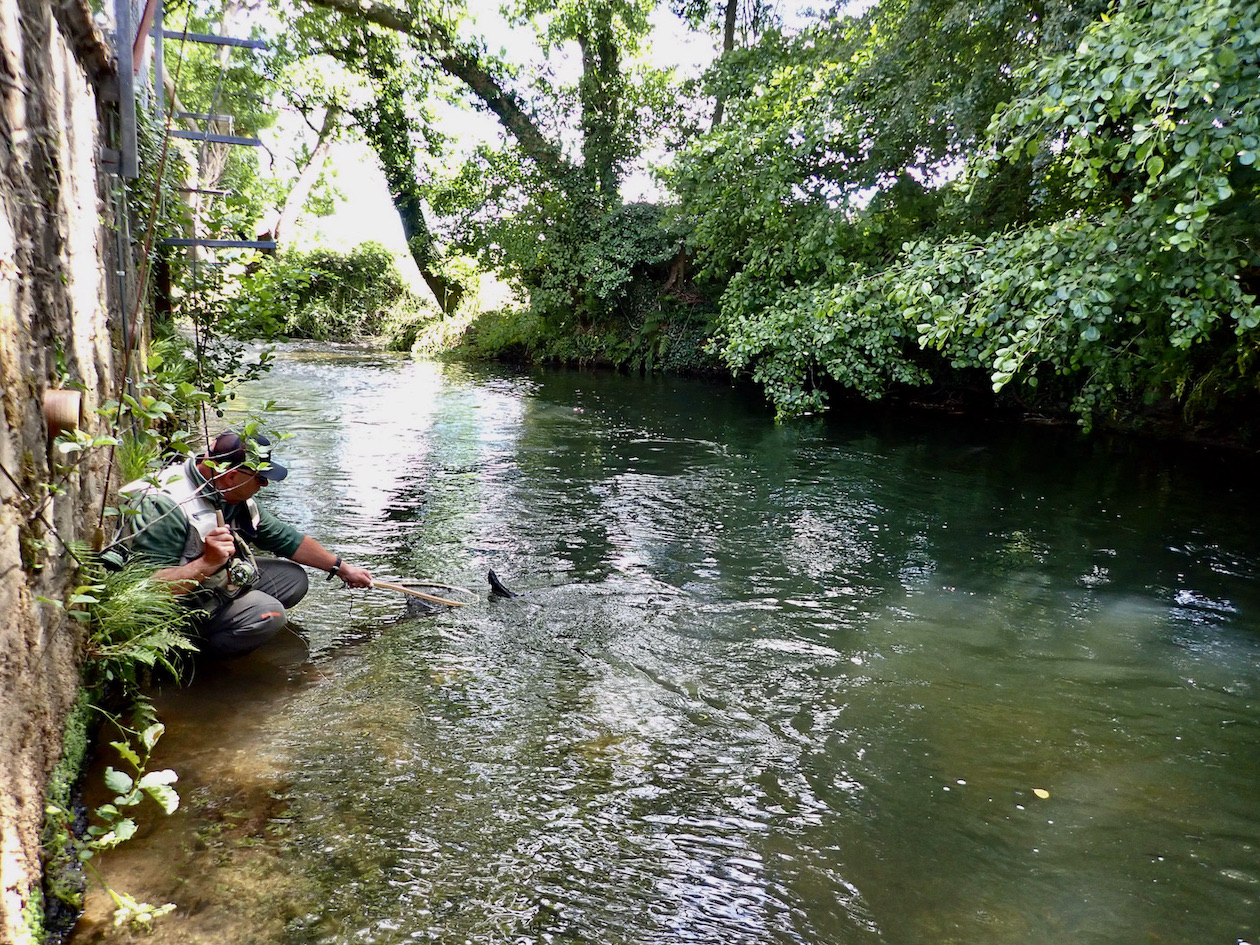
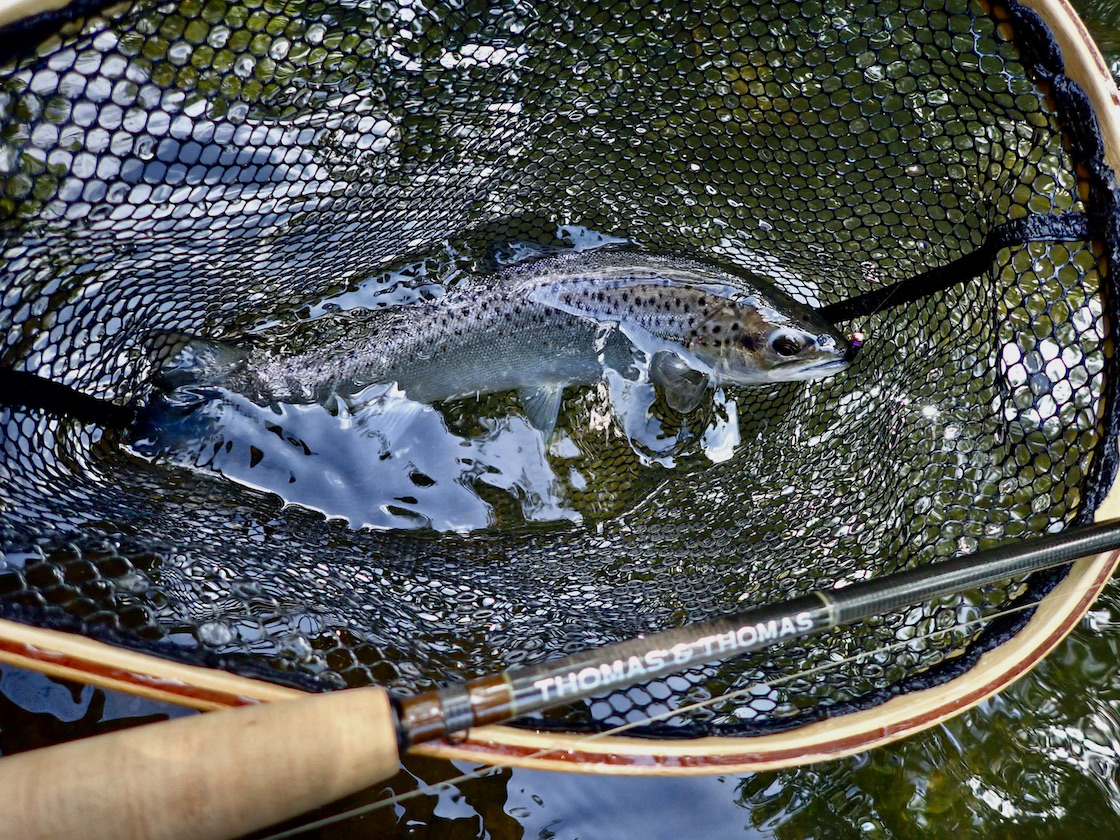
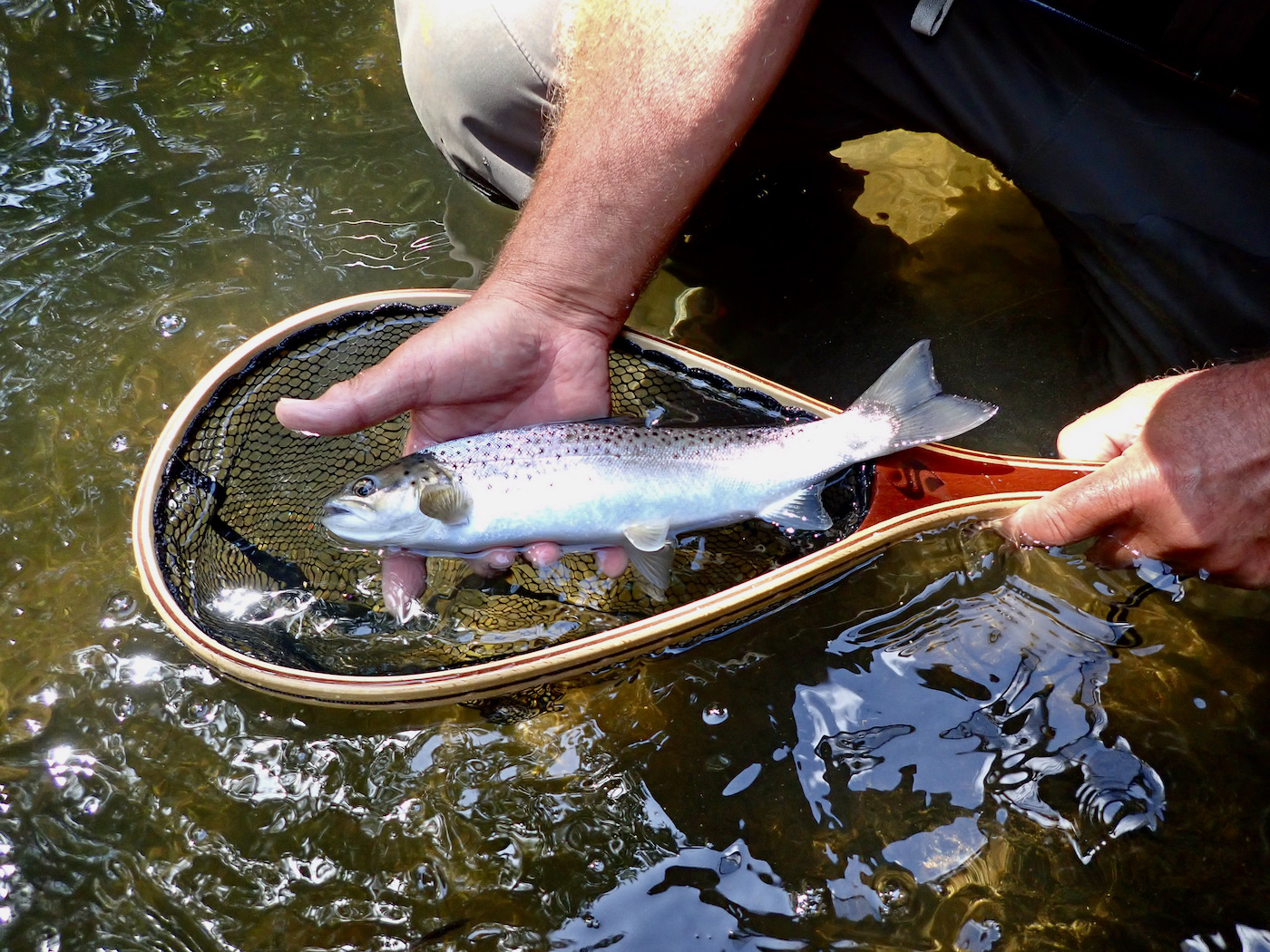
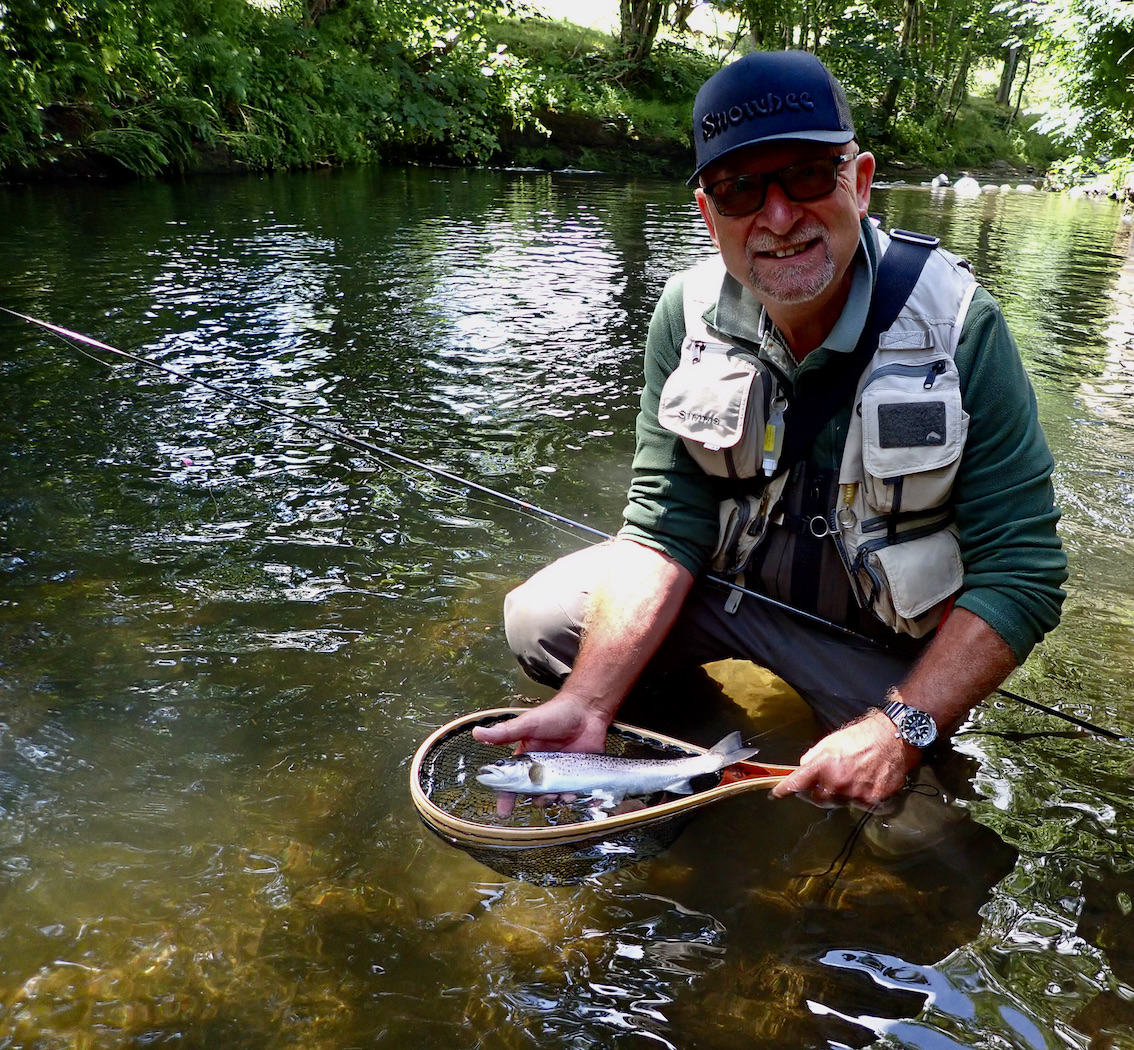


Boosted by this success we both searched intently drifting the nymphs through the pools. I hooked a small brown trout that shook the hook and caught a couple of small parr.
We then took a break to drive a short distance to the fish beat 3 a stretch of river that we had fished back in early March when Jeff had caught a grayling and I had lost one.
We went our separate ways now alternating between pools immersed in our own endeavours to a large extent. When we met up a short while later Jeff was excited to recall the capture of a fine sea trout estimated at around 2lb at had made his reel scream as it battled gamely.
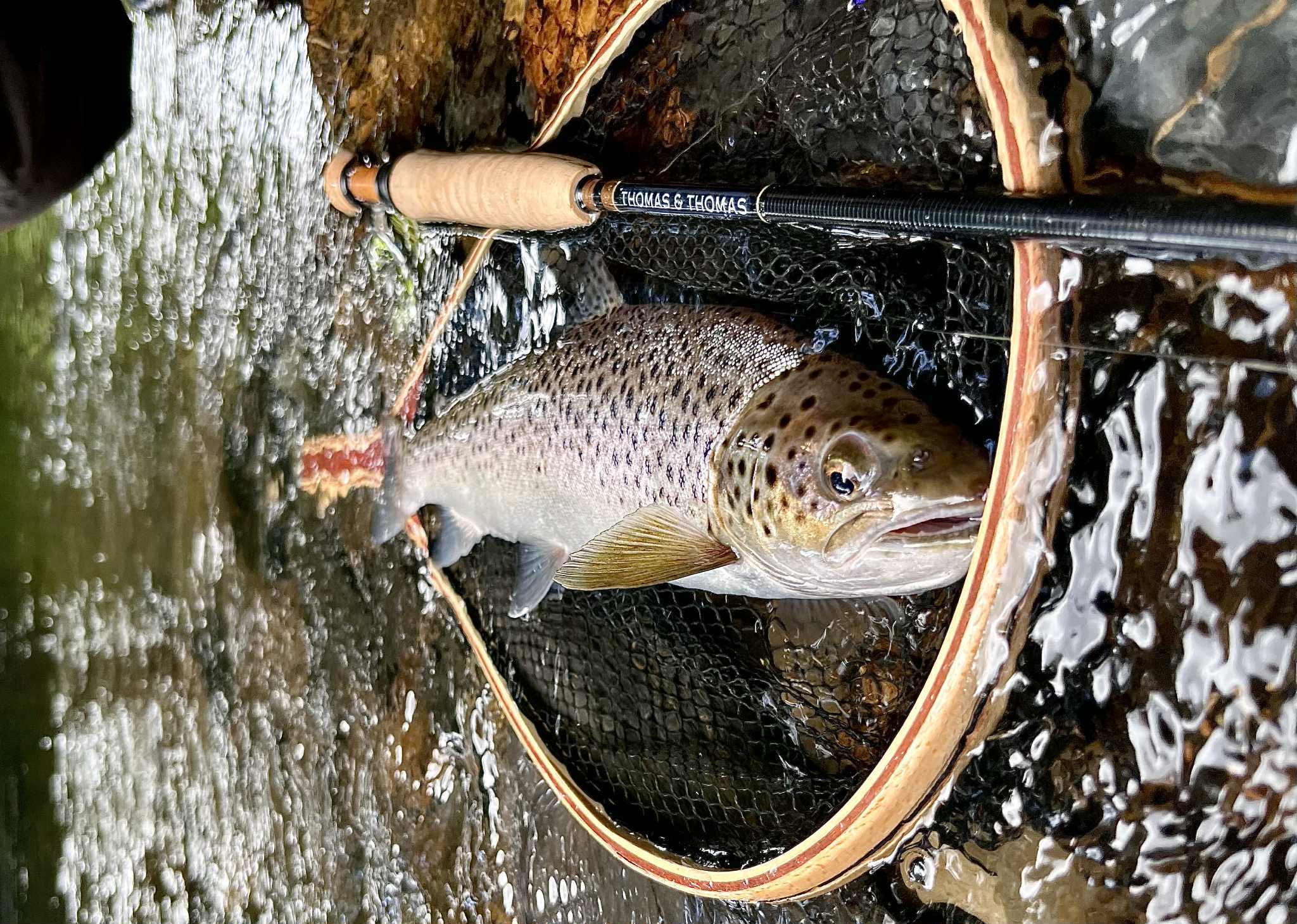
It is often the case that when I fish with Jeff we seem to mirror each other’s catch’s and when one of us enjoys a good first half the other succeeds in the second half. This was certainly my hope as I searched the pools attempting to read the water carefully focussing on those sections that took my fancy.
The deep fast water towards the head of the pools and runs tempted me and I searched these areas in preference to the slower deeper areas.
I undoubtedly missed a couple of fish as my indicator dipped beneath the surface or twitched vigorously with my strike finding no connection.
Then that wonderful moment of connection came and a bar of silver erupted from the water leaping almost to eye level before coming adrift after just a few seconds of adrenalin fuelled excitement.
Ten minutes later I hooked another larger fish that battled hard again leaping from the water before diving deep and under the far bank where I feared the line would catch in the roots of bankside trees. I savoured the bending rod and feel of a good fish in the strong current. I knelt at the water’s edge and guided the sea trout towards the waiting net. Then elation turned to dejection as the hook hold gave and my silver prize disappeared with flick of its tail.
The two glimpses of silver leaping and gyrating on my line are lodged in that deep file of memories in the mind. Merging with the lush green of early summer clear glistening water following a summer spate. The electric blue of kingfisher and the cheerful echoes of chiff-chaff and wren song in a river valley. Damsel flies and dragon flies haunting the river margins. As many of BB’s books commence,
The wonder of the world
Its beauty and its power,
The shapes of things,
Their colours lights and shades,
Look ye also while life lasts.
I caught up with Jeff at the weir pool and told of my losses. We chatted and fished the deep water above the weir together. A few trout dimpled the surface and Jeff switched to dry fly tactics whilst I persisted with the deep nymph tactics and missed a couple of chances.

We had planned to pack up at around 5.00pm but a glance at the time revealed it was now past 6.00pm and after ten or so last casts we reluctantly walked back across the waterside meadows to return home. Already plotting further trips with a youthful enthusiasm that belied our years. The indicator deep fished nymph will certainly be used elsewhere to explore those deeper pools when the fish are not rising.
South West Lakes Trust Trout Fisheries Report
June 2025
Water temperatures continue to rise, with plenty of insect activity on the surface and fish looking up to feed. Generally there has been little rain and some water levels are starting to drop. A spell of quite sudden very hot sunny weather in the final week of the month made conditions for anglers tough, with catch rates on most waters showing a sharp drop. The Trust’s beginners’ days continue, with a well-attended event held at Burrator.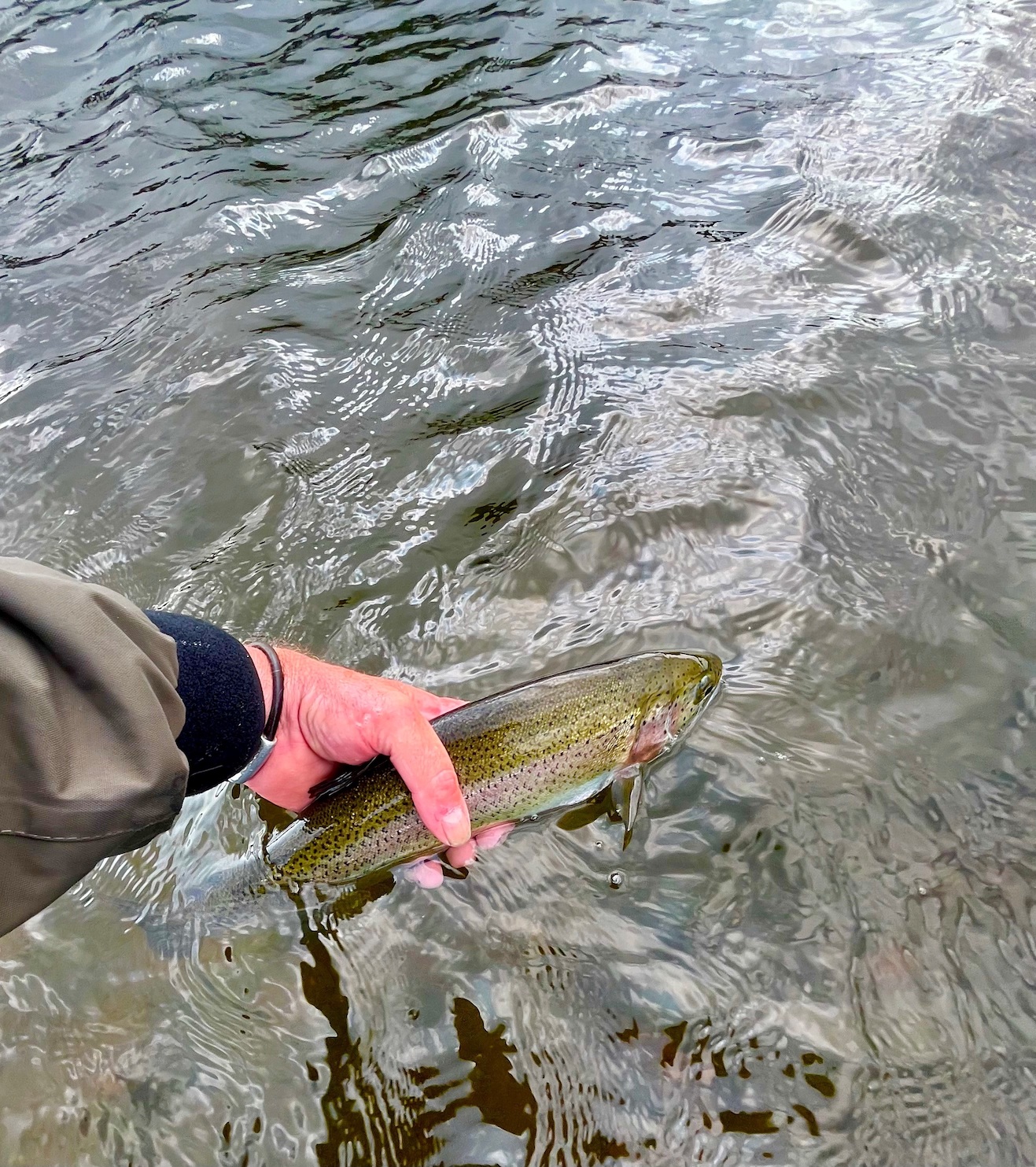
Fishing:
Kennick – The fishery continued to produce some excellent sport, with anglers averaging 3.3 fish per visit, and bank anglers fairing slightly better than the boats. Fish were well spread out around the lake, although West Bank, Oak Tree Point, The Lawns and Forest Bay all proved popular with bank anglers, while the boats found the best fishing in Clampitts Bay and Central Boat Bay. While fish could be found throughout the water table, many would come up to dry patterns (especially when beetles were on the water and sedges hatching). Successful dry flies included Hawthorns, Black Gnats, Klinkhammers, Hoppers, Deer Hair Sedges and Beetles. Sub-surface feeders were caught on Damsel Nymphs, Buzzers, Diawl Bachs, Montanas and Hares Ears, while deeper feeders could be caught on Boobies, Tadpoles and Cats Whiskers. Lee Tatton caught a cracking rainbow of 3lb 6oz. The popular annual Peninsula Classic Bank Competition was held on 22 June, with the hot sunny conditions making the day challenging – the event was won by Rob Gale (from Ashburton), with Alex Venn runner-up. Water levels are now at 85% capacity.
Siblyback – The fishing at Siblyback just keeps improving as the season progresses, with anglers averaging six fish per visit, and with plenty of beetles being blown onto the water, fish are looking up to feed. Floating and intermediate lines with a slow retrieve were the order of the day, with Dry Sedges, Beetles and various Hopper patterns all catching plenty of fish. Successful sub-surface patterns included Montanas, Damsel Nymphs, Buzzers and dark Pheasant Tail Nymphs, as well as deeper fished lures (Boobies, Fritz, Cats Whiskers, Tadpoles and Orange Blobs). Stocky Bay, Crylla, Two Meadows and the West Bank all produced the most consistent sport. Phil Messenger Roberts caught a beautiful 3lb rainbow. Water levels are now at 81% capacity.
Burrator – The fishing proved to be consistent throughout the month, with anglers averaging 2.4 fish per rod. Longstone, Sheepstor, Bennetts Lawn and Lowery Point produced the best sport, with floating, sink-tip and intermediate lines fished with a slow retrieve proving to be the best tactic. While a few fish rose to a Hawthorn pattern, most were caught just below the surface on a wide variety of nymphs (Damsels, Buzzers and Montanas) and lure patterns (Orange Zonker, Orange and Yellow Blobs, Tequila Blobs, Black Mini-snakes and Orange Whiskey flies). Levels are now down to 86% capacity.
Stithians – The fishing improved as the month progressed, with anglers catching an overall average of 4.2 fish per rod (6.9 fish during the latter week before the hot spell). Golden Lion Point, Carmenellis, Yellowort and Pub Bay all fished particularly well, with anglers favouring an intermediate or sink-tip line and a slow retrieve. There was plenty of surface insect activity, with Sedges and midges hatching, as well as beetles being blown onto the water; dry patterns produced some spectacular sport (in particular, foam beetles, Deer Hair Sedges, Hoppers, CDC patterns and Black Gnats), while successful sub-surface patterns included Zulus, Blobs, Cormorants and Spider patterns. The water level is now at 91% capacity.
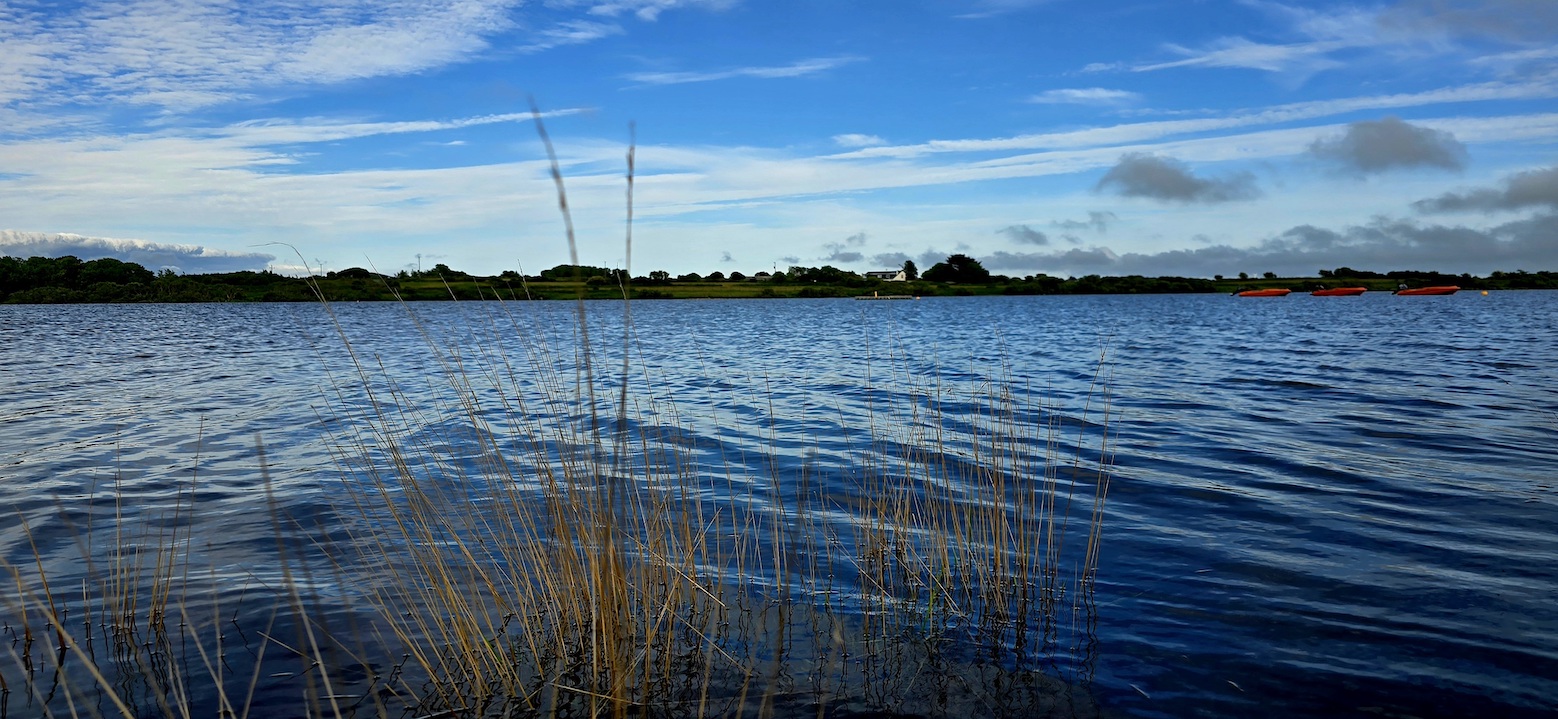

Colliford – The fishing greatly improved over the month, with anglers averaging 4 fish per visit; popular banks included Lords Waste, Middle Car Park, Stuffles, Browngelly Bay and along the East shore. With plenty of midges and beetles on the water and fish looking up to feed, floating line tactics proved most successful, with fish coming up to take foam beetles, Black Hoppers, CDC Emergers and Bob’s Bits in the surface film, as well as Hares Ears, Montanas, Dunkelds and pulled Soldier Palmers fished just beneath the surface. The water level is now at 77%.
Fernworthy – Again the fishing improved as the month progressed (weekly averages from two fish a visit at the beginning of the month, to 4.3 fish toward the end). Generally floating and sink-tip line tactics with a steady retrieve proved the most successful, with fish taking Beetles, Ginger Hoppers, Mini Scruffy Tigers, Humungous, Zulus, Black Buzzers, Diawl Bachs and Silver Invictas. The Boat House Bank, Thornworthy, The Dam and Potters Bank proved to be the most productive locations. Rodney Wevill caught the best fish of the season so far – a beautiful brown trout of 3lb 2oz. During the Fluff Chuckers Fernworthy round, Wayne Thomas won the event with ten fish (the best at 47cm), followed by Rodney Wevill (also with ten fish, the best at 48 cm).
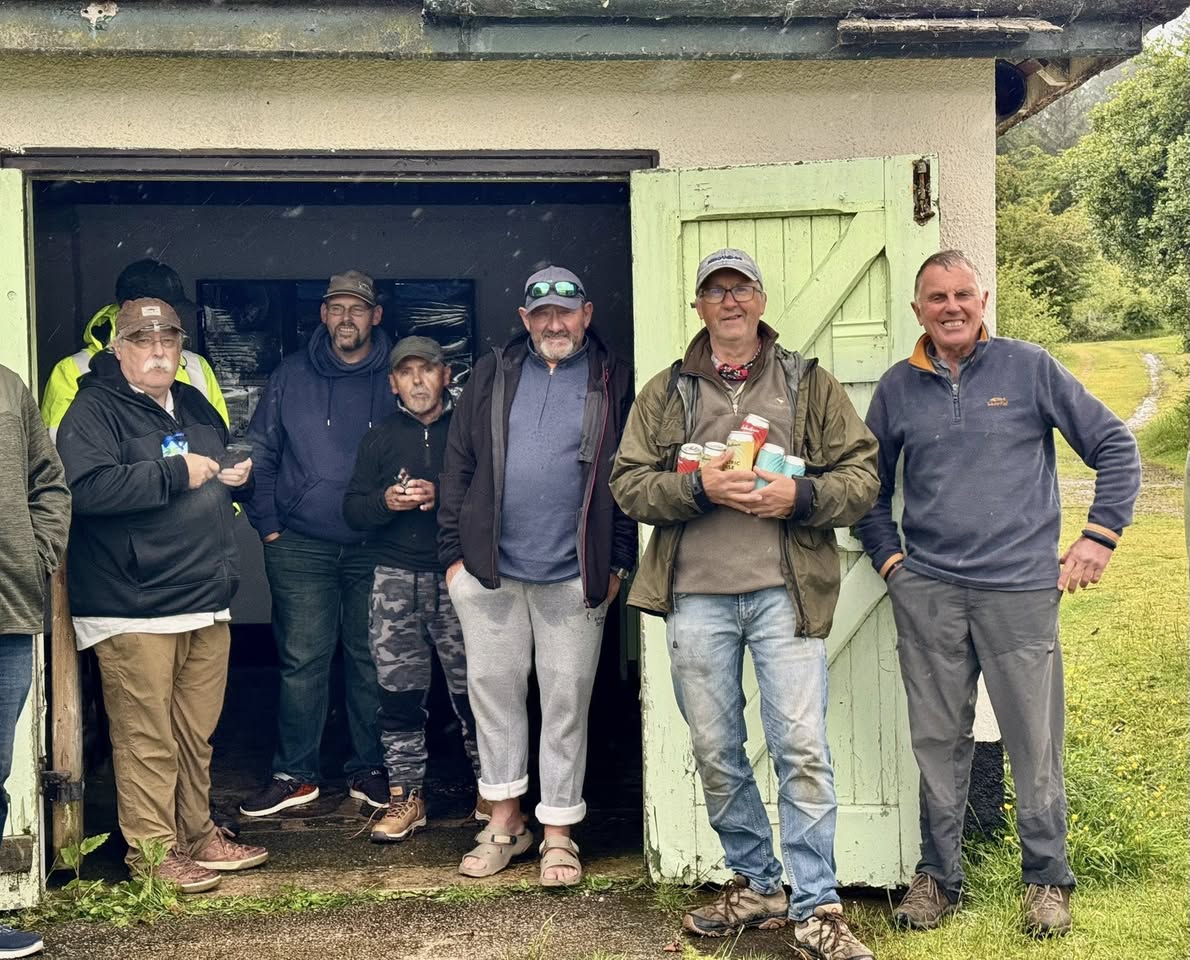

Roadford – Floating and intermediate lines down to 4 foot depth, fished with a fast retrieve, produced some amazing results at Roadford this month, with anglers averaging 5.9 fish per visit. Grinnacombe, South Wortha, Big Oaks, Gaddacombe and North Shop banks proved to be the best locations, with Dabblers, Bibios, Cormorants, Soldier Palmers, Zonkers, Black Tadpoles, Hares Ears and the occasional foam beetle all catching fish. The level is now down to 89%.
Please see the Trust’s website (www.swlakestrust.org.uk/trout-fishing) for more information on buying tickets, boat availability and booking, and forthcoming events including a free fly fishing taster day at Roadford Lake on Sunday 20 July.
Chris Hall (June 2025)
